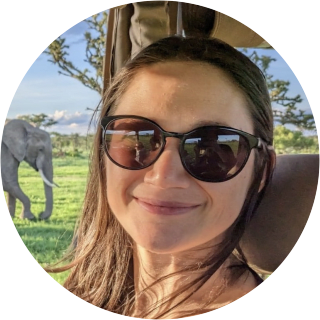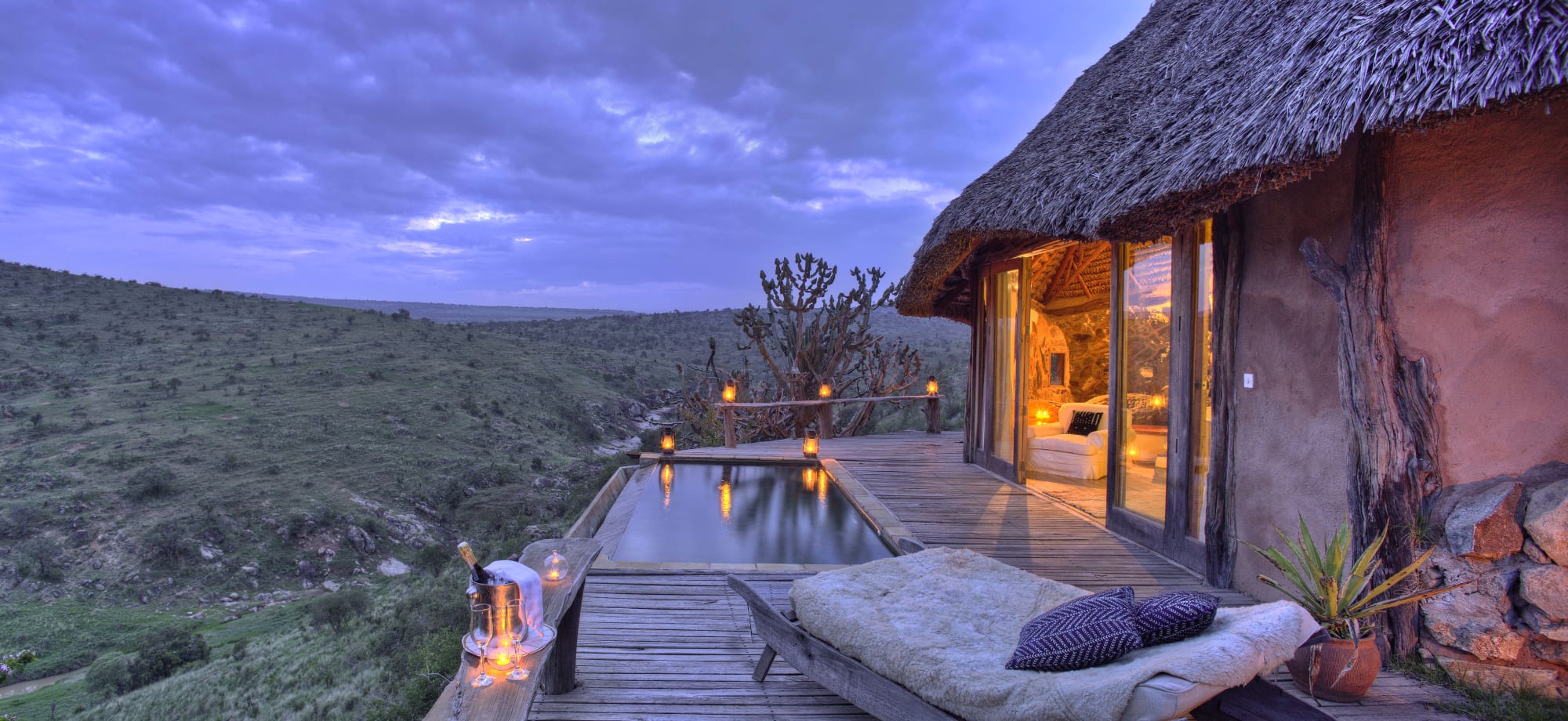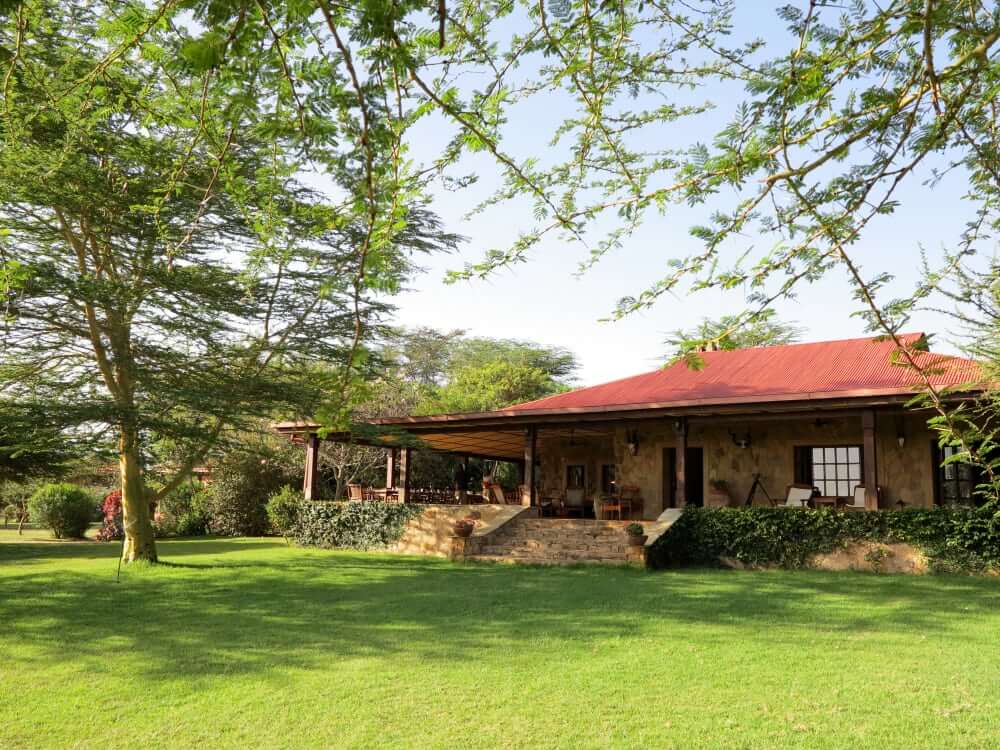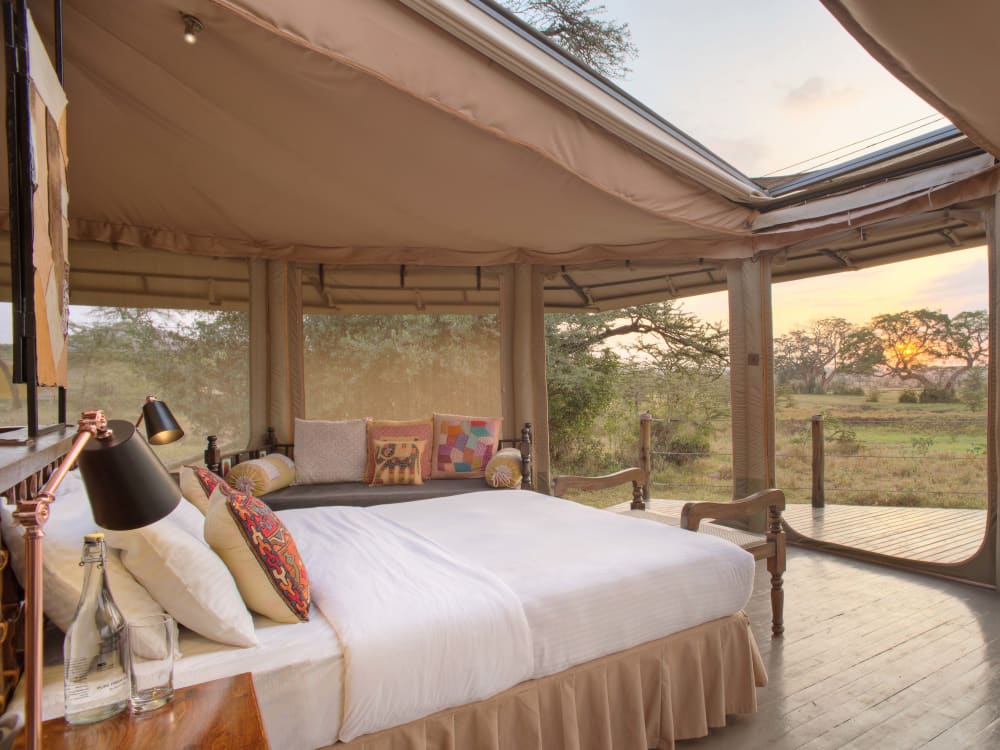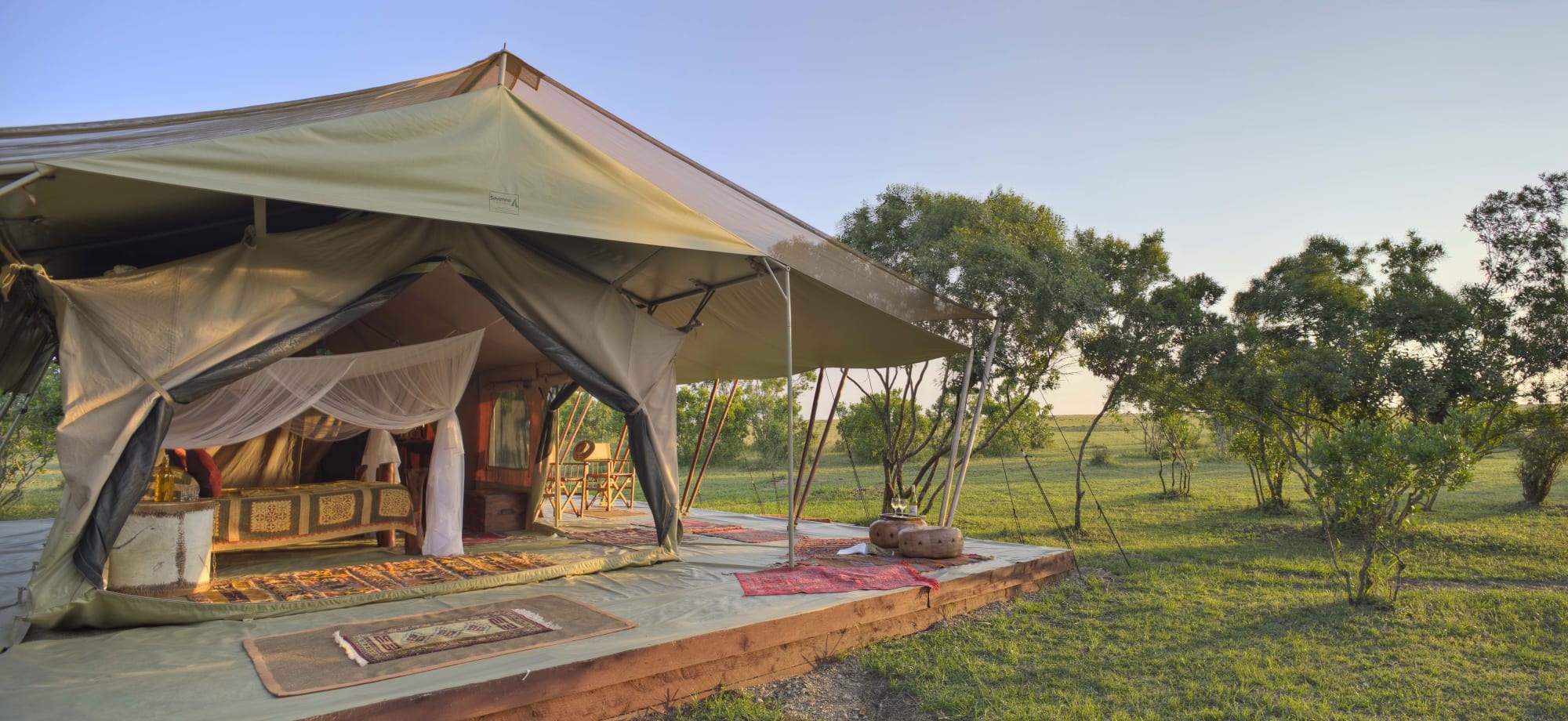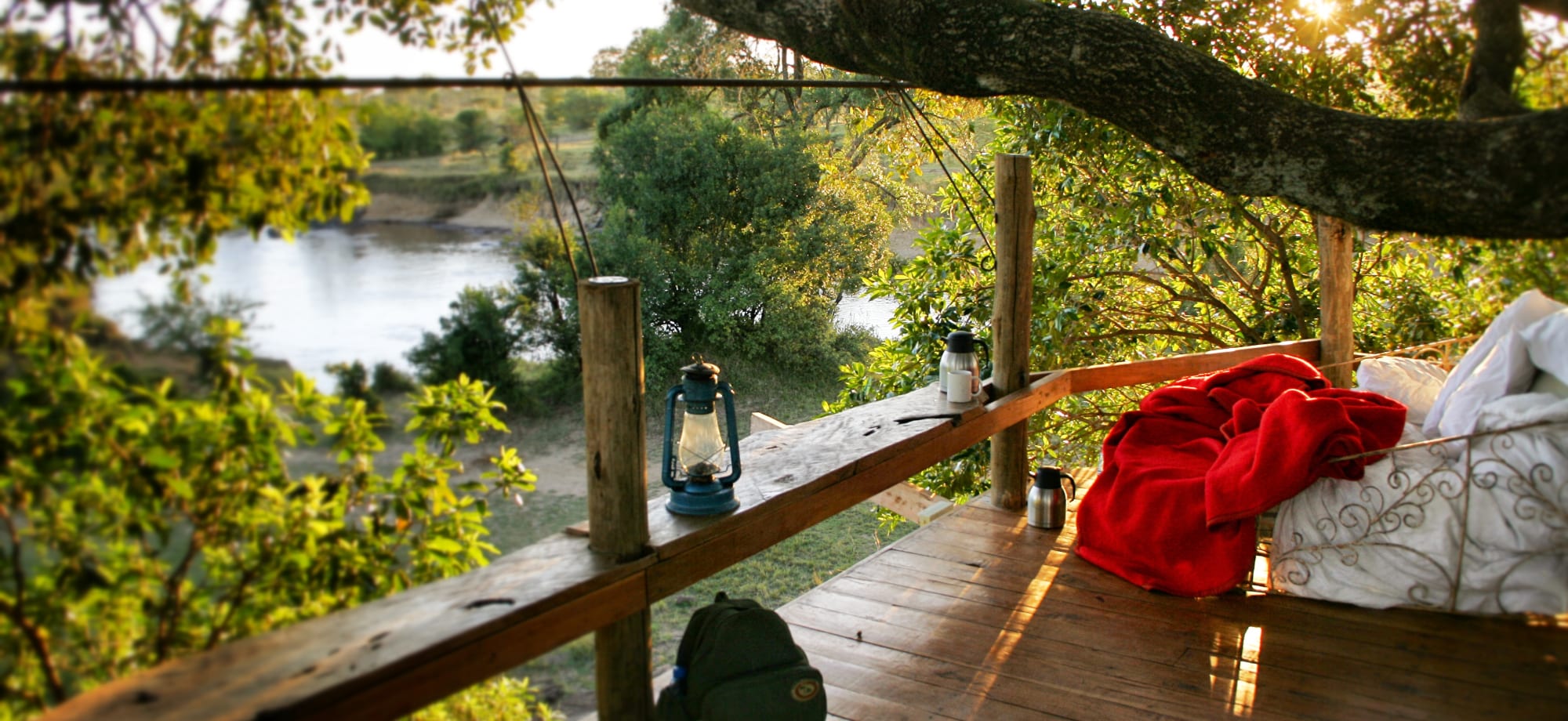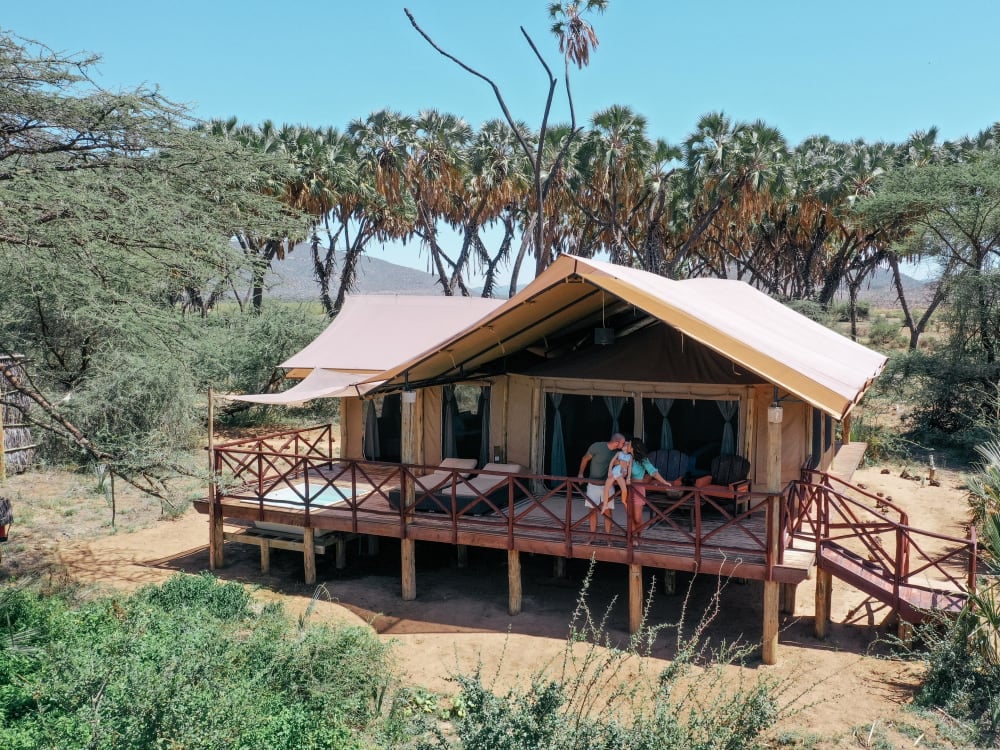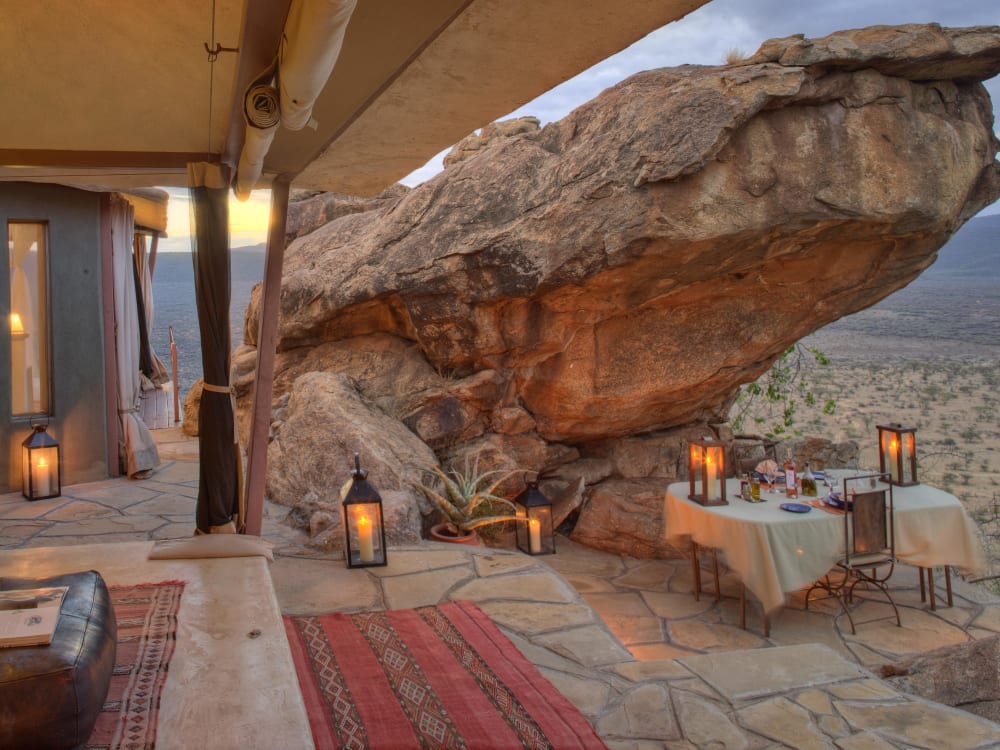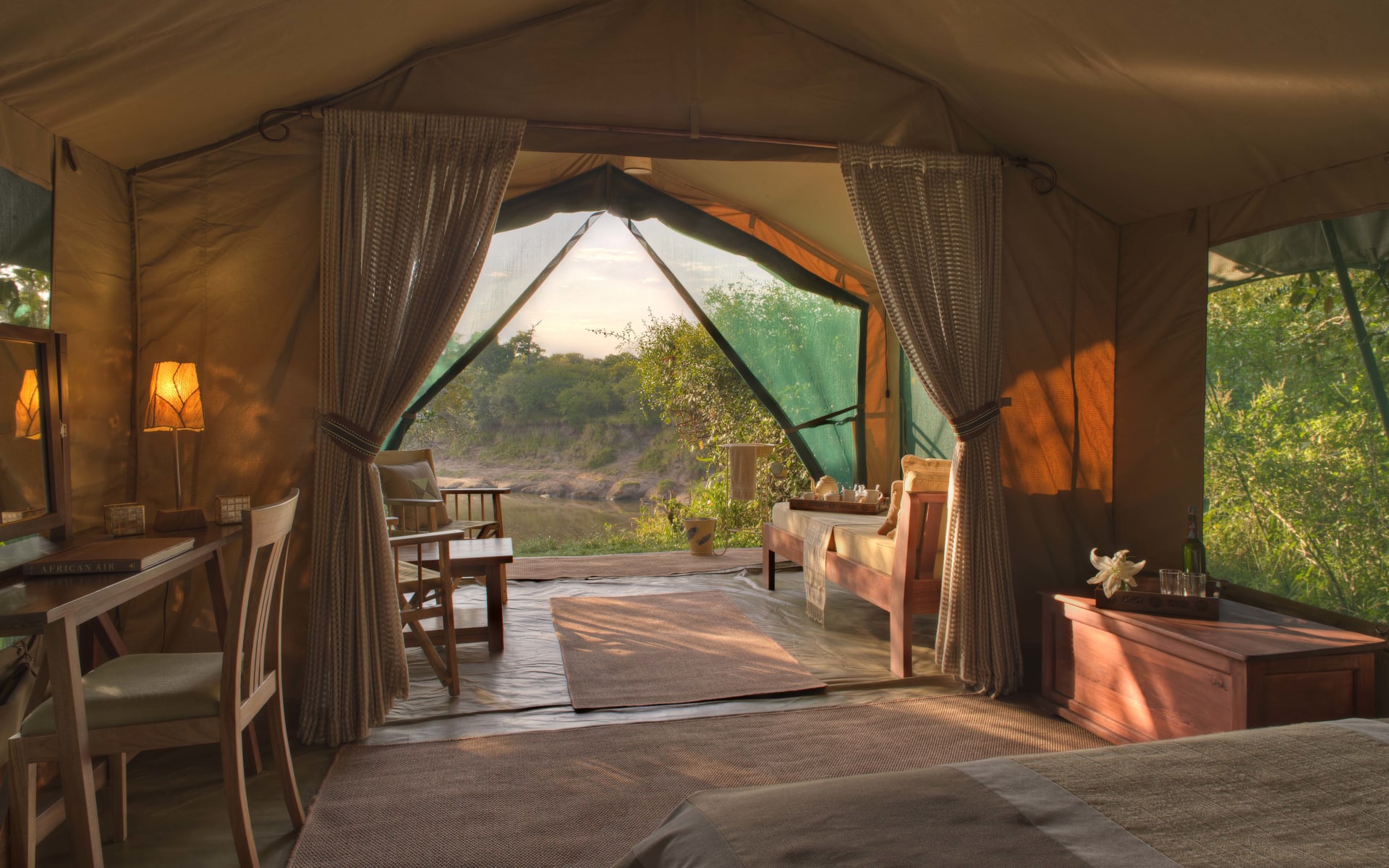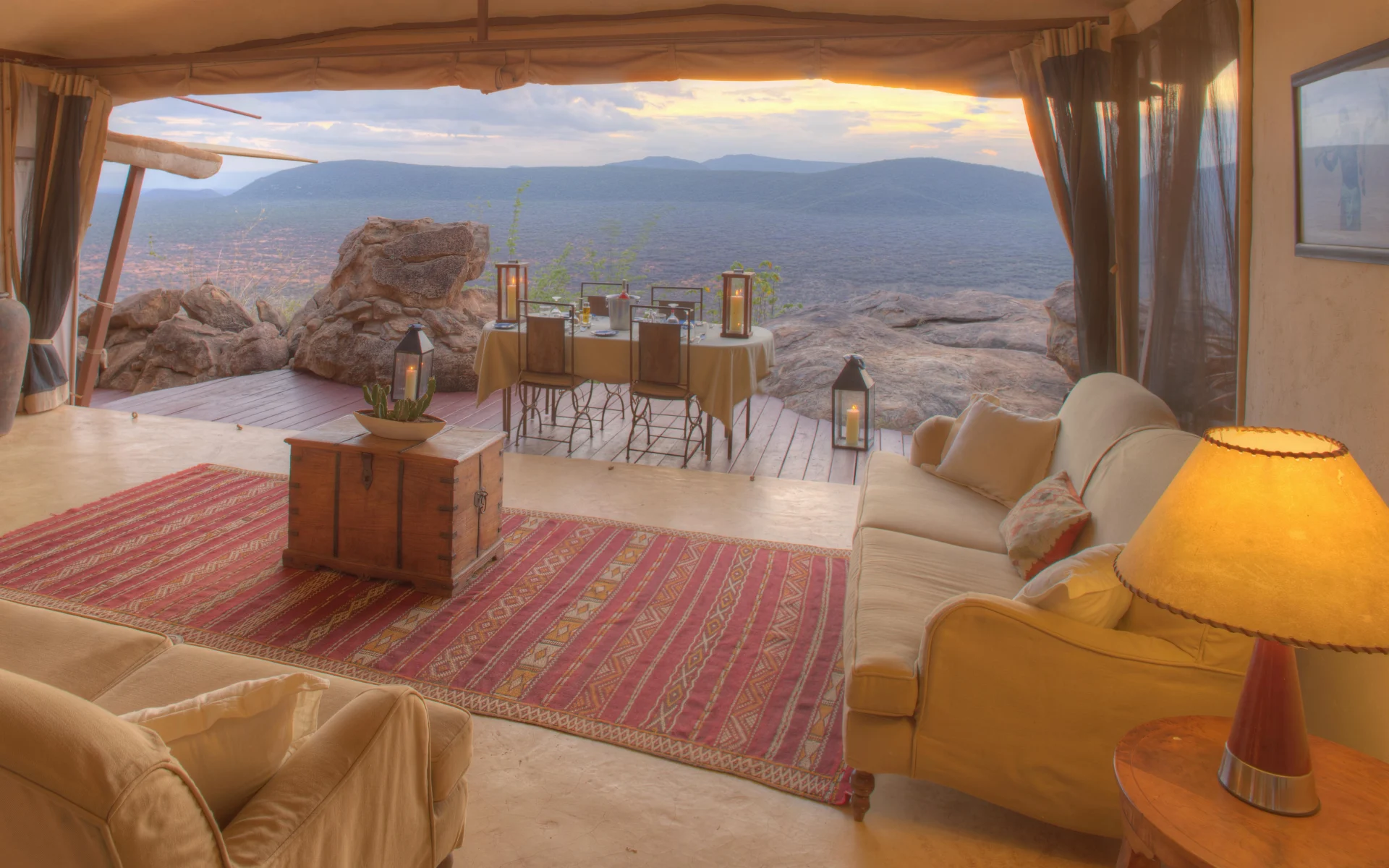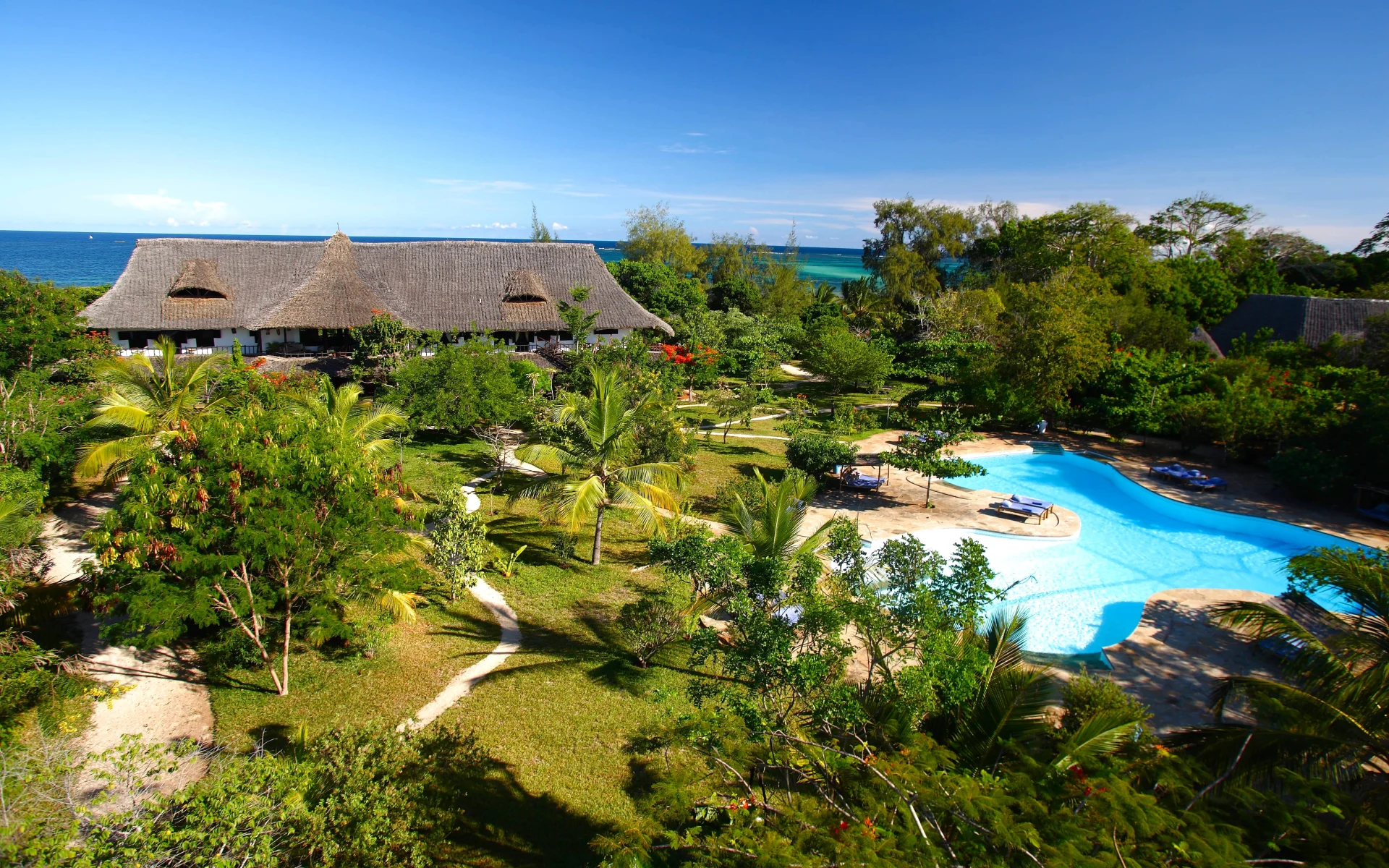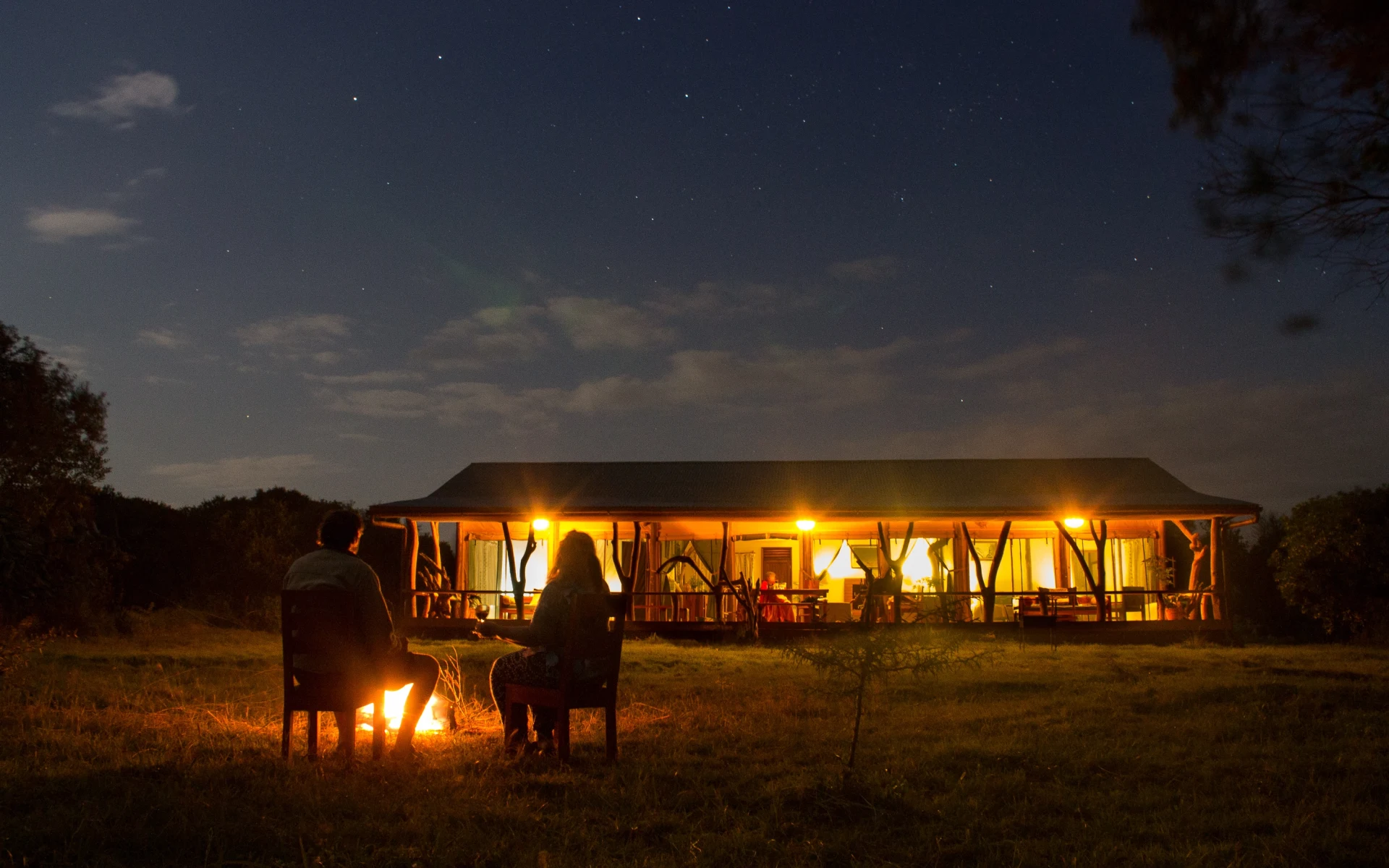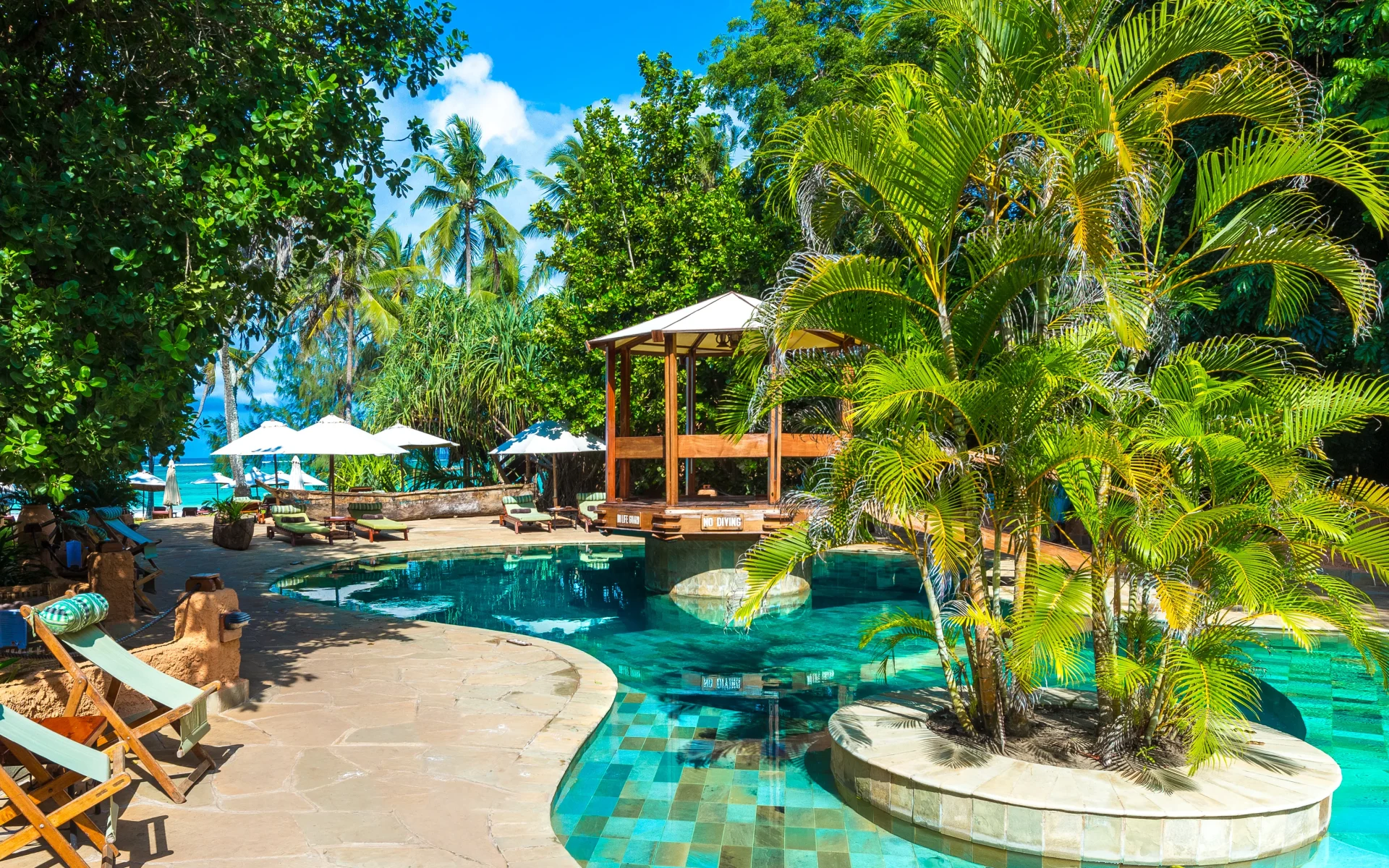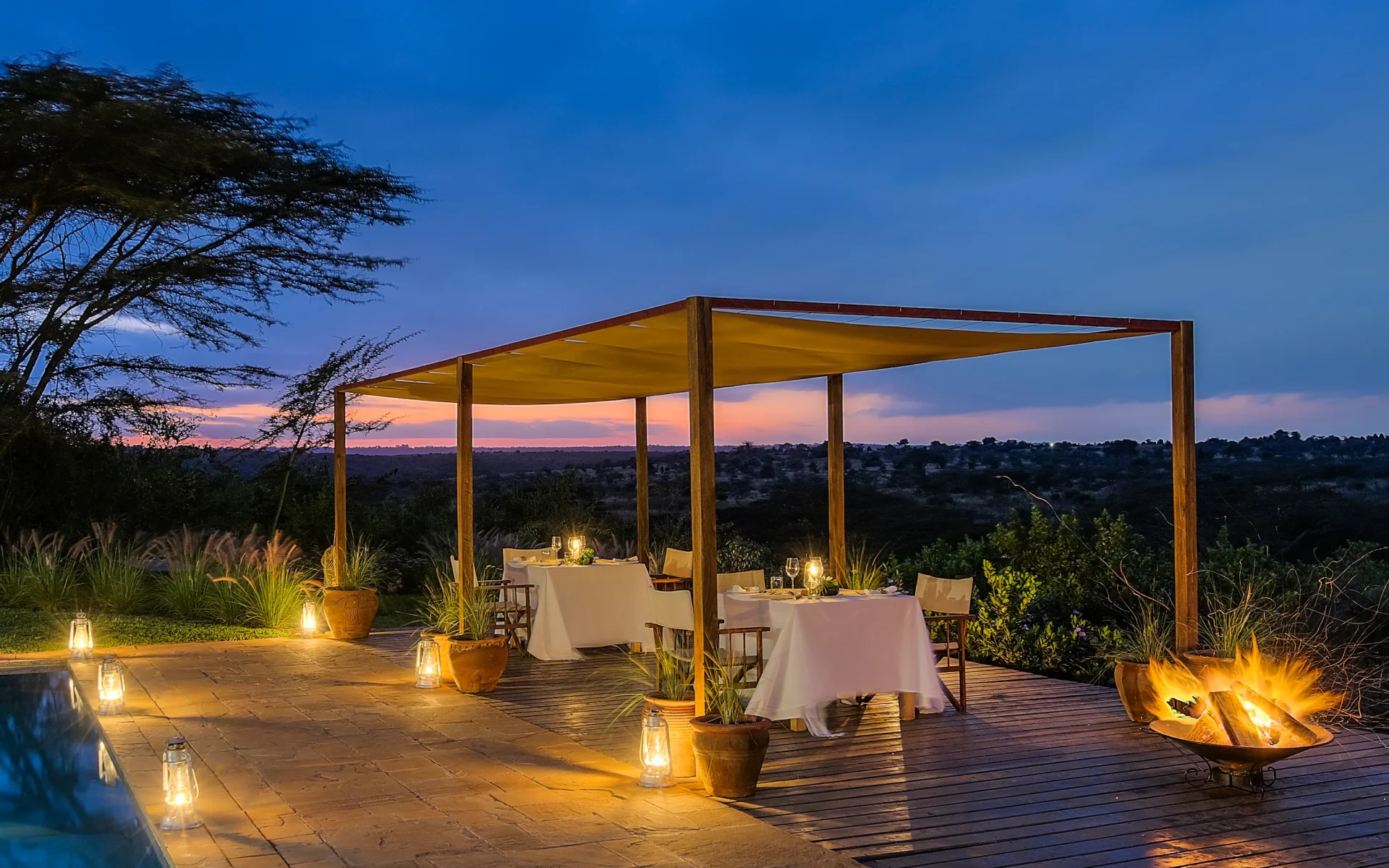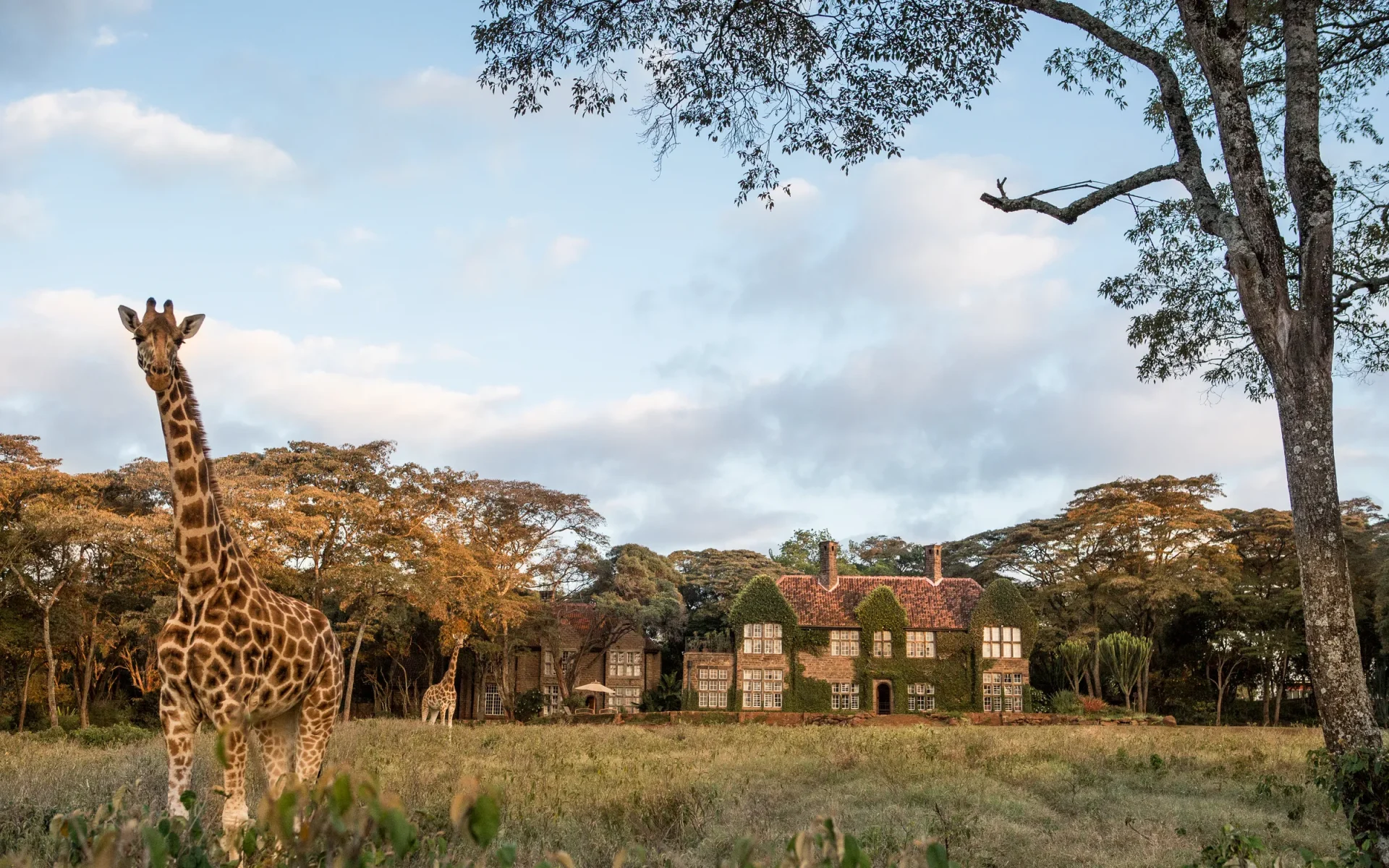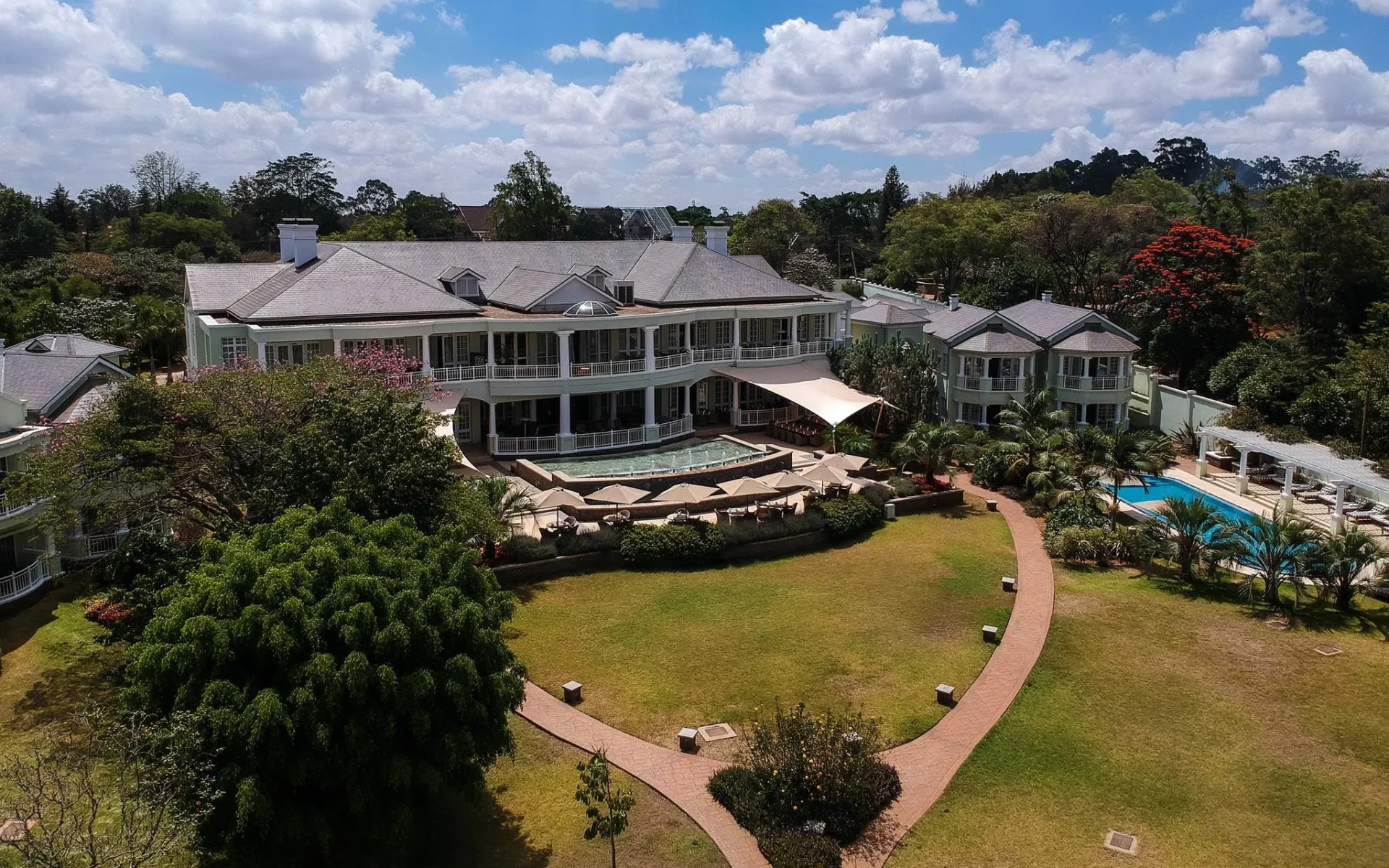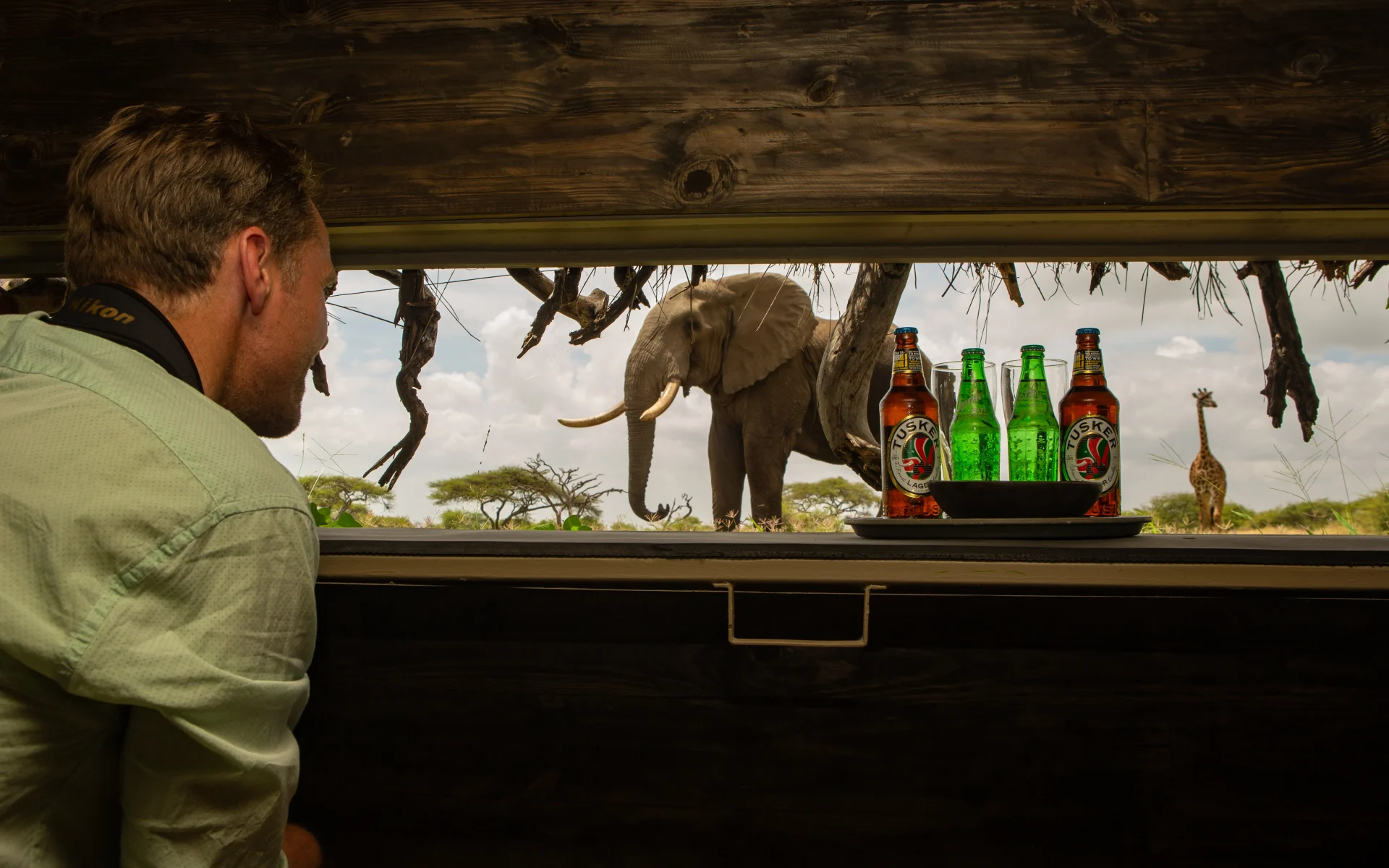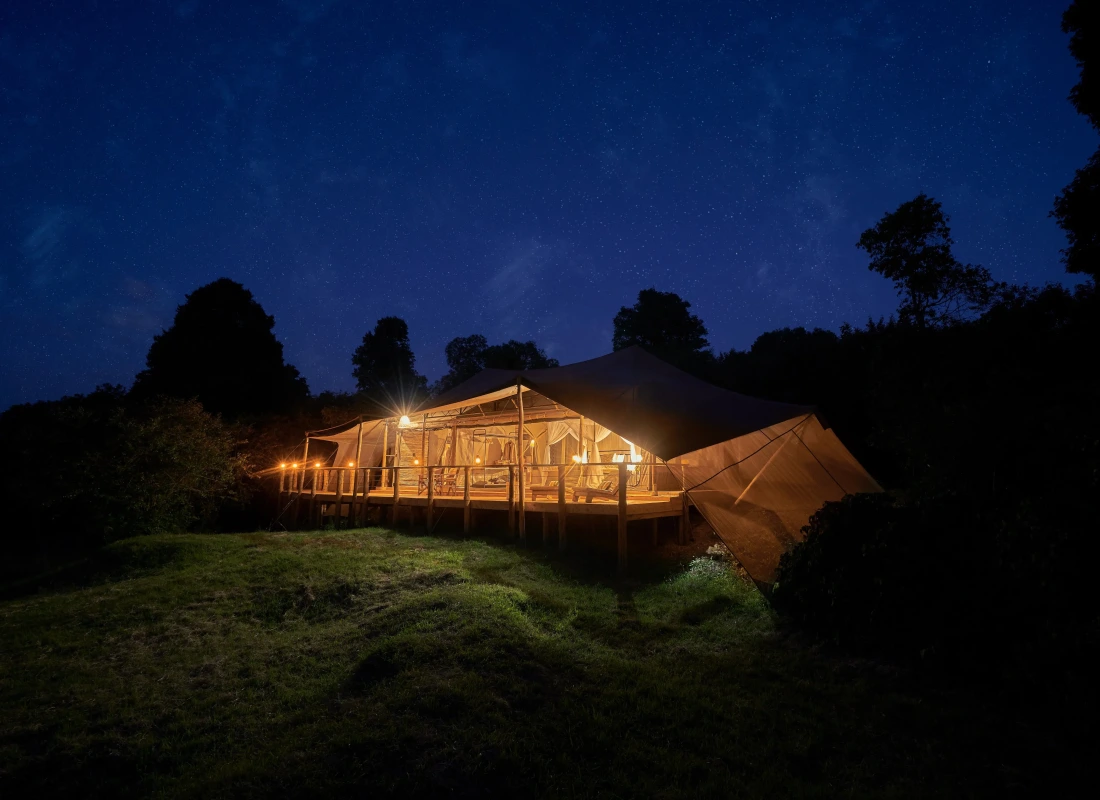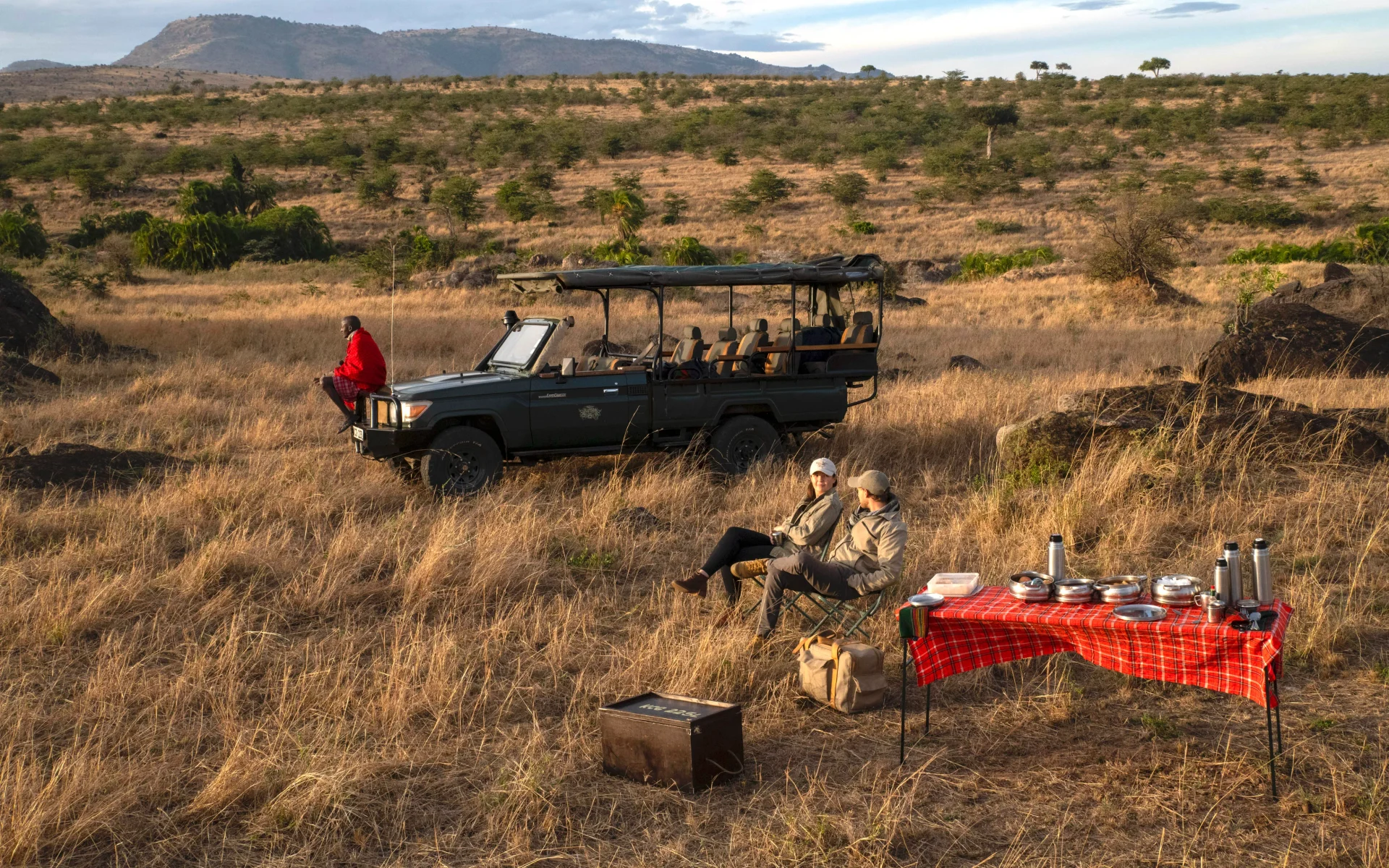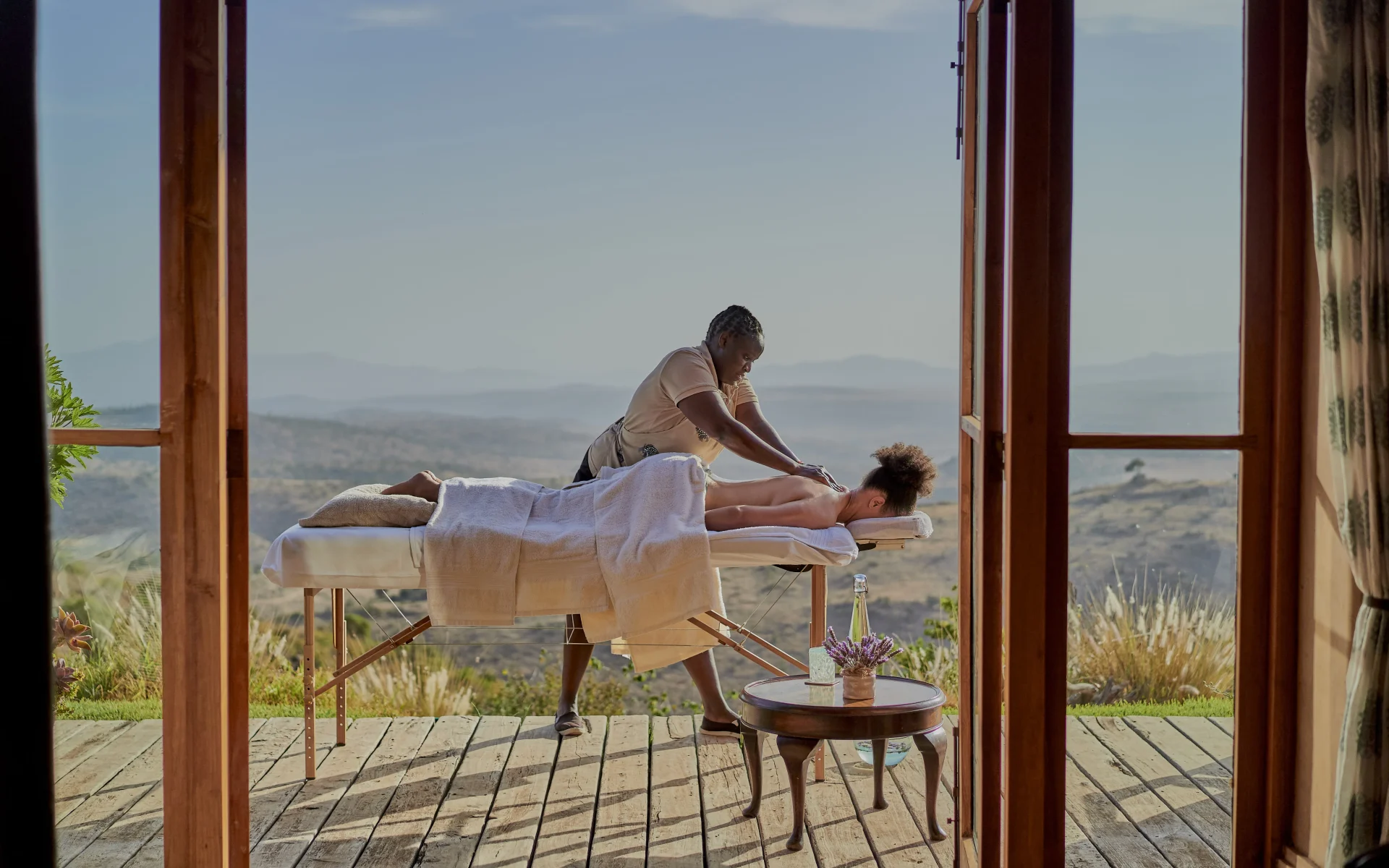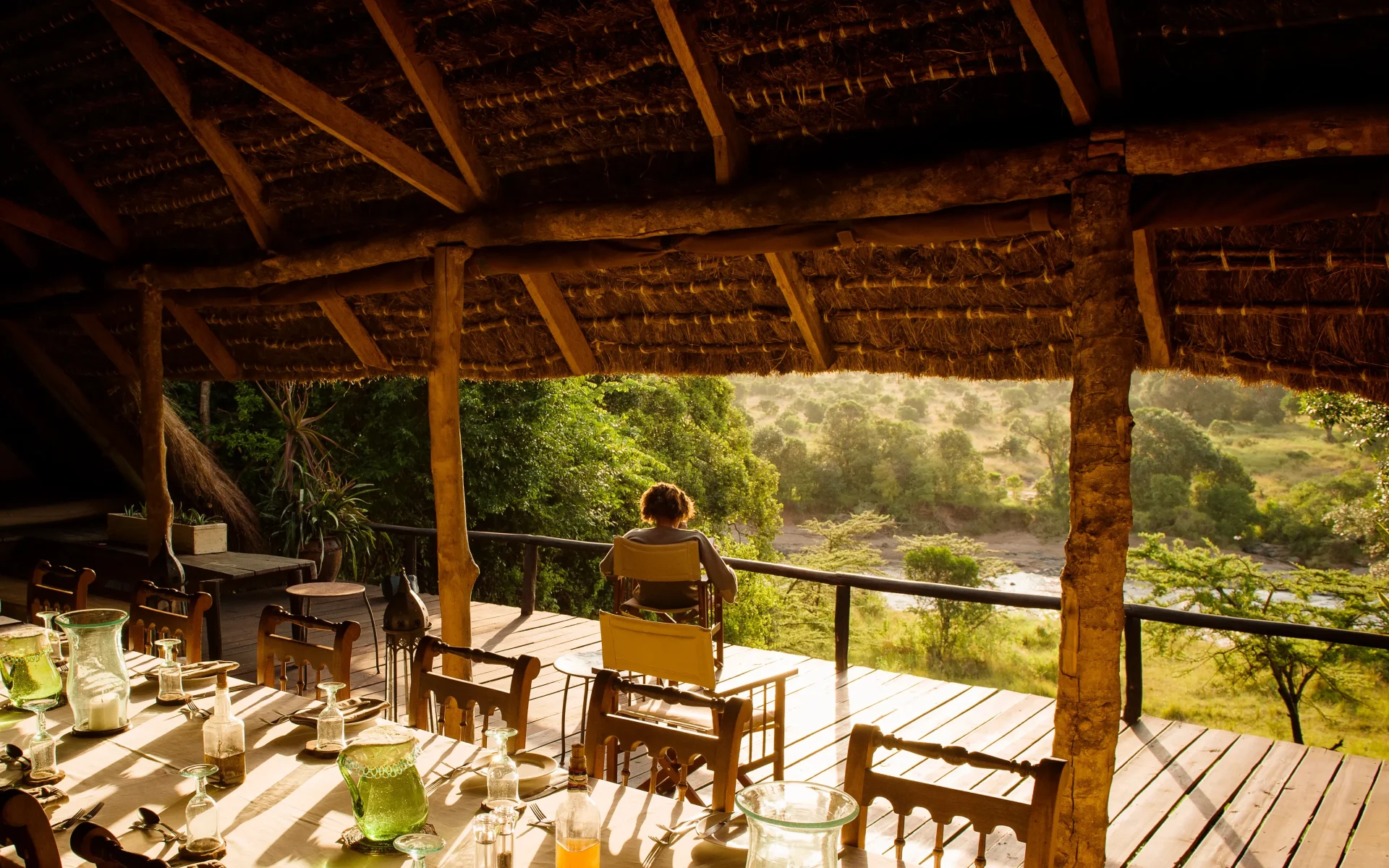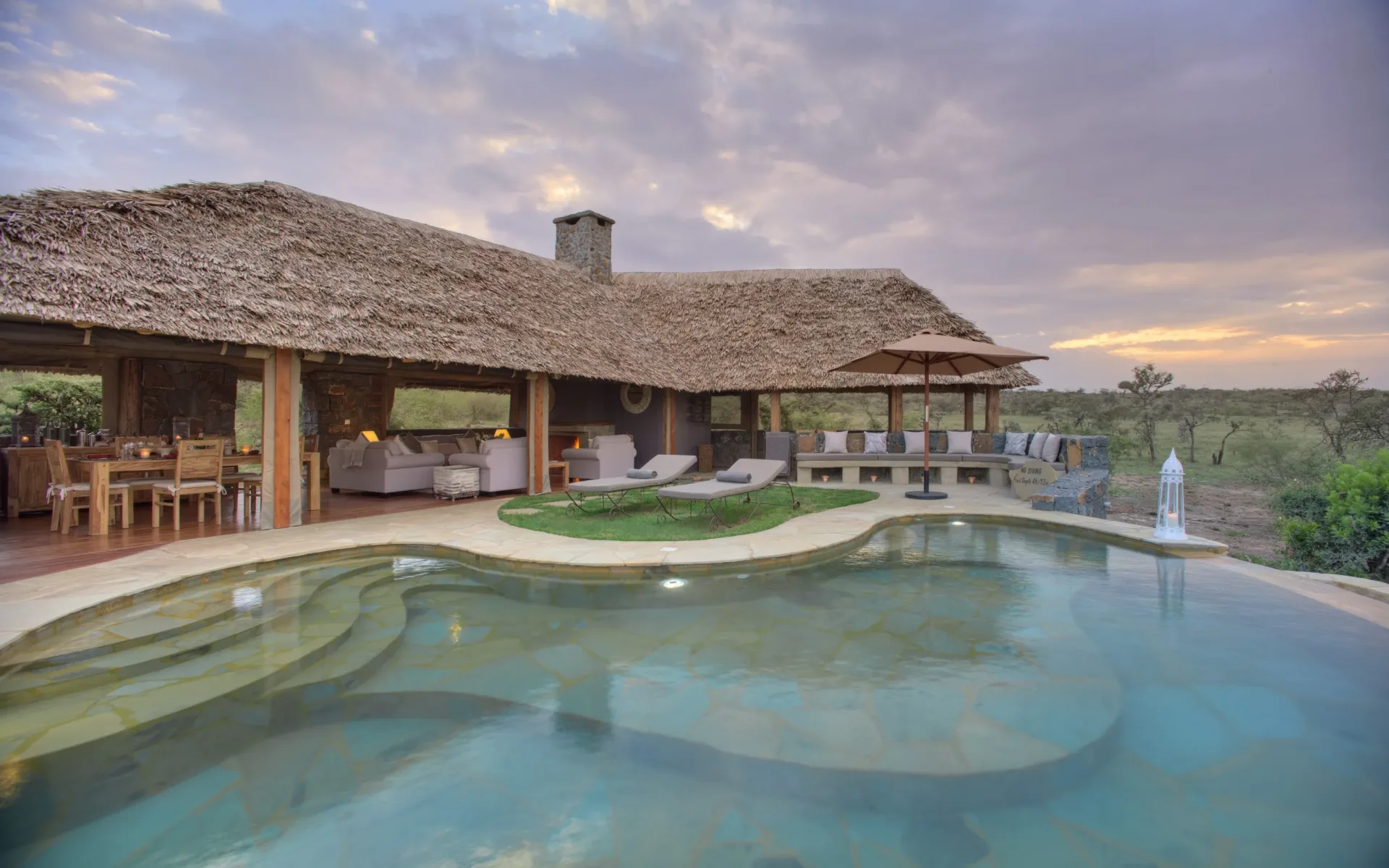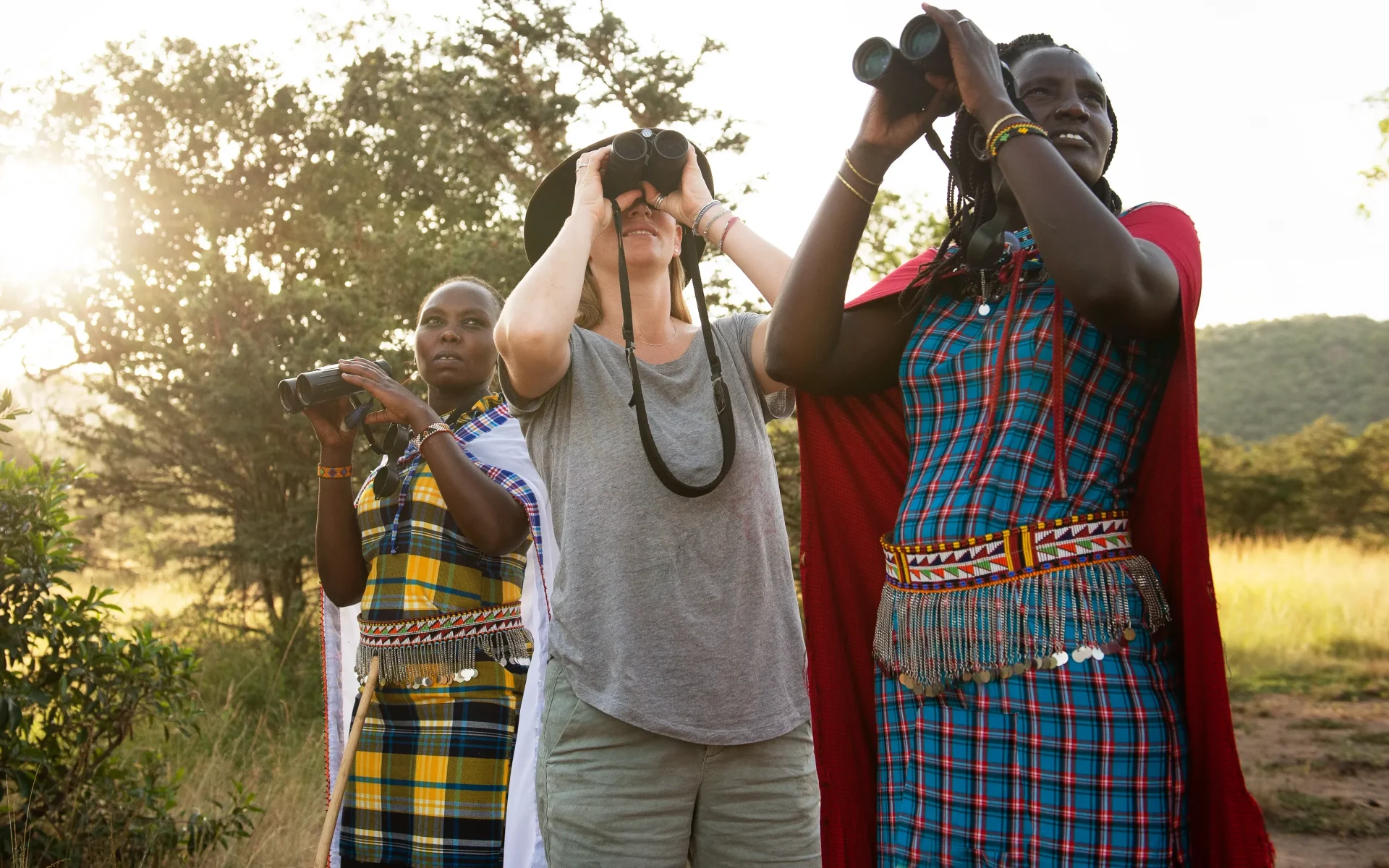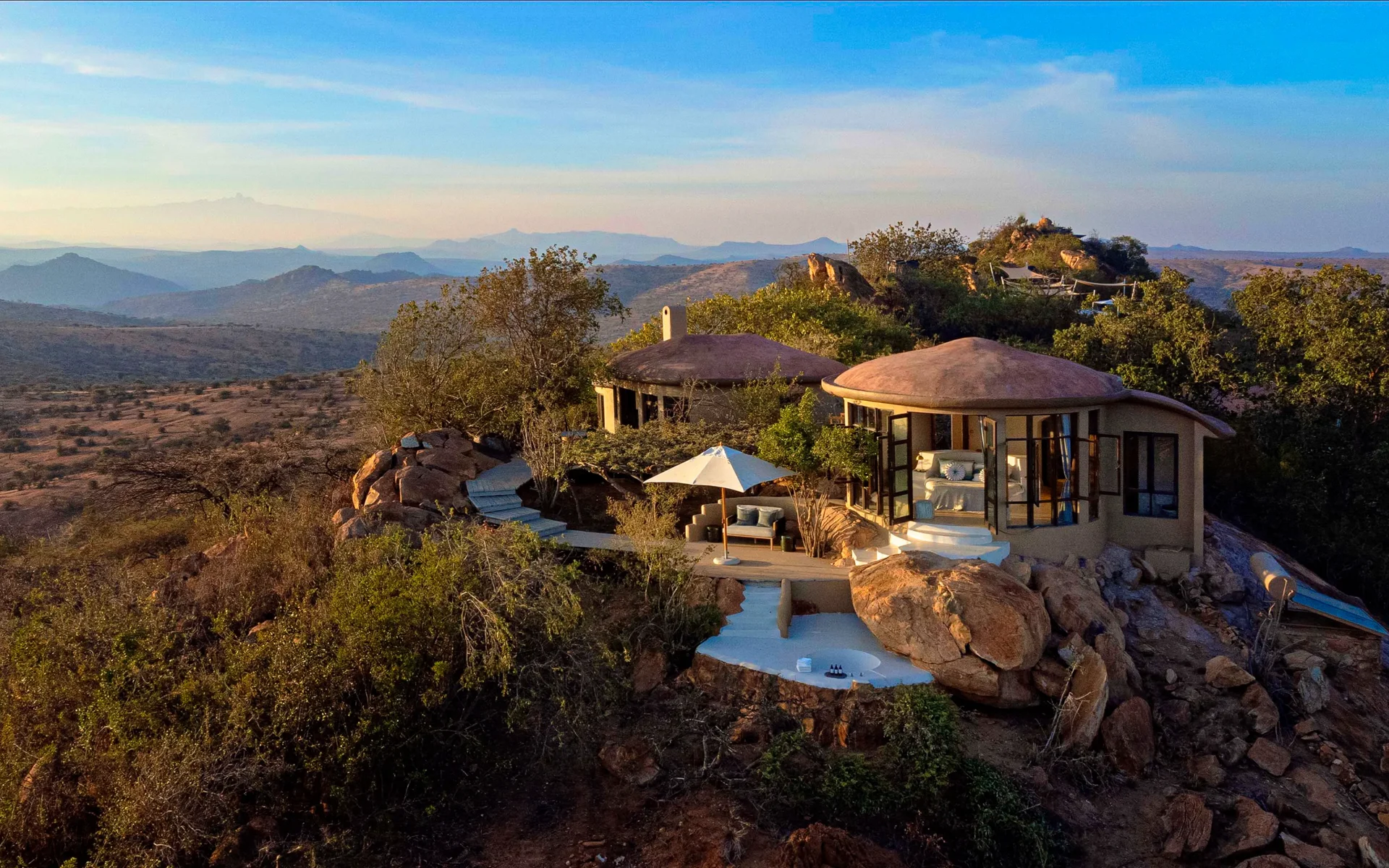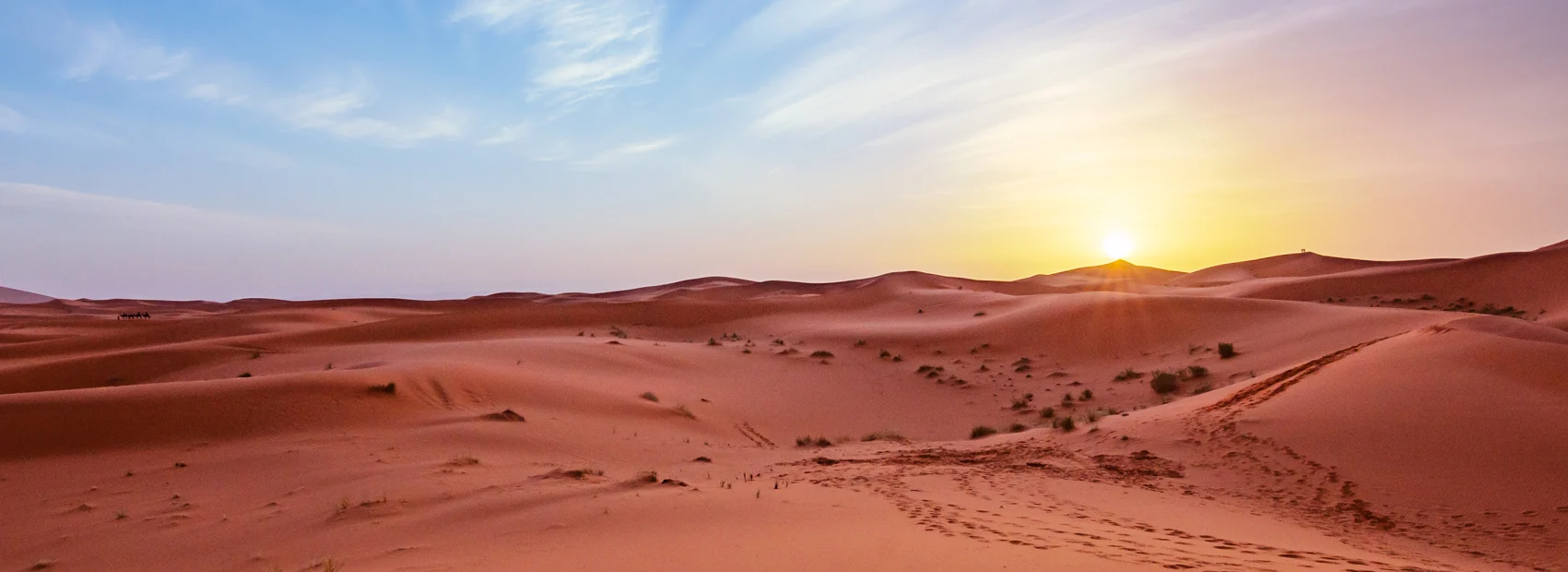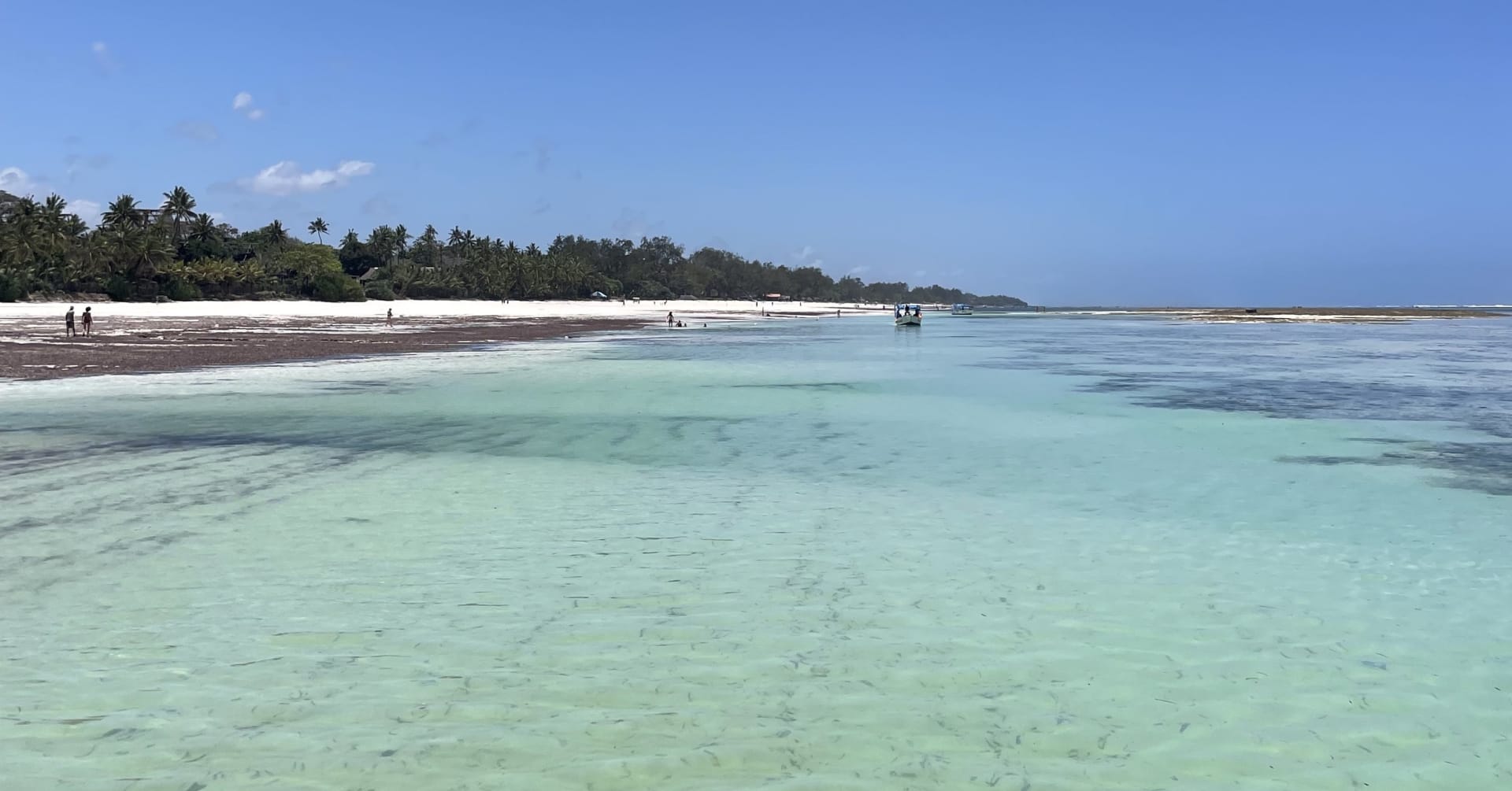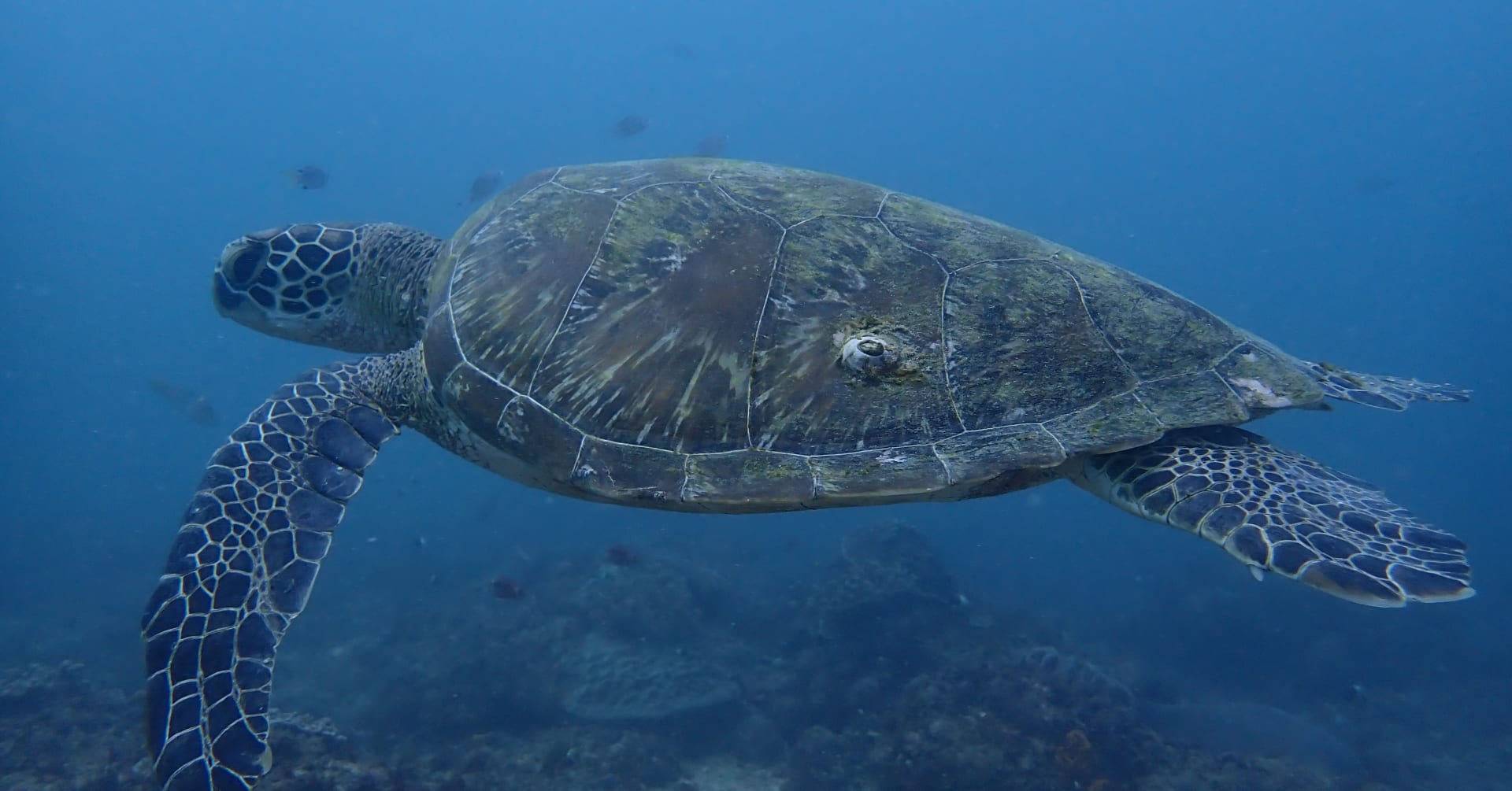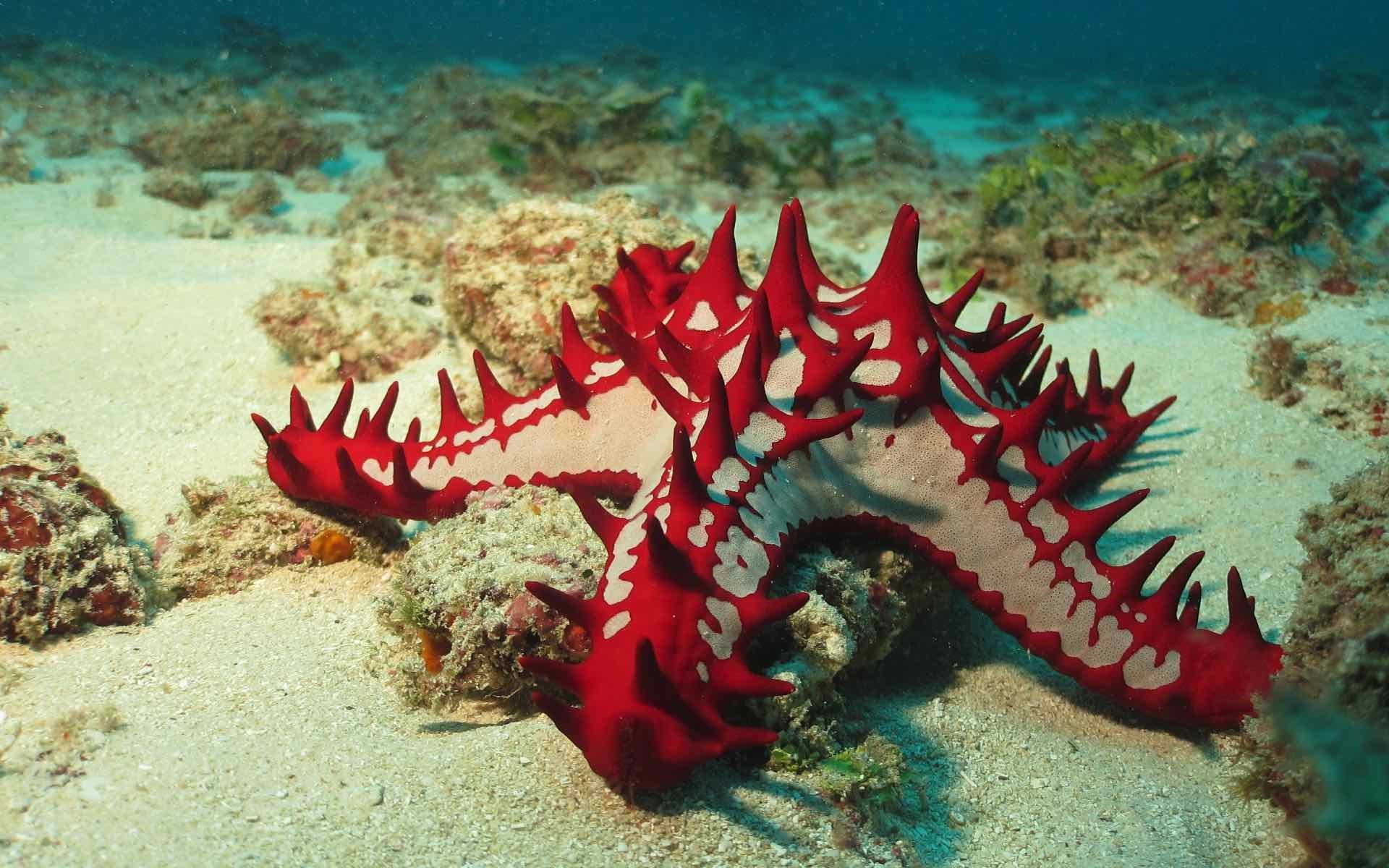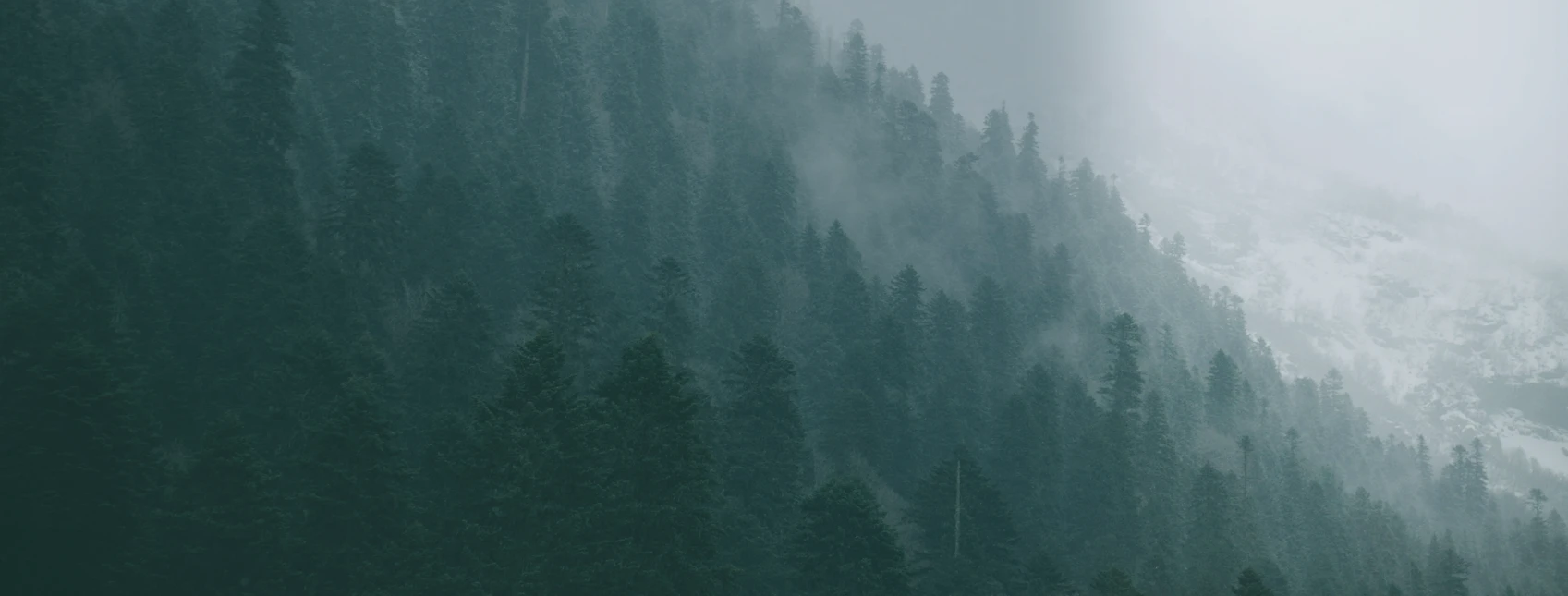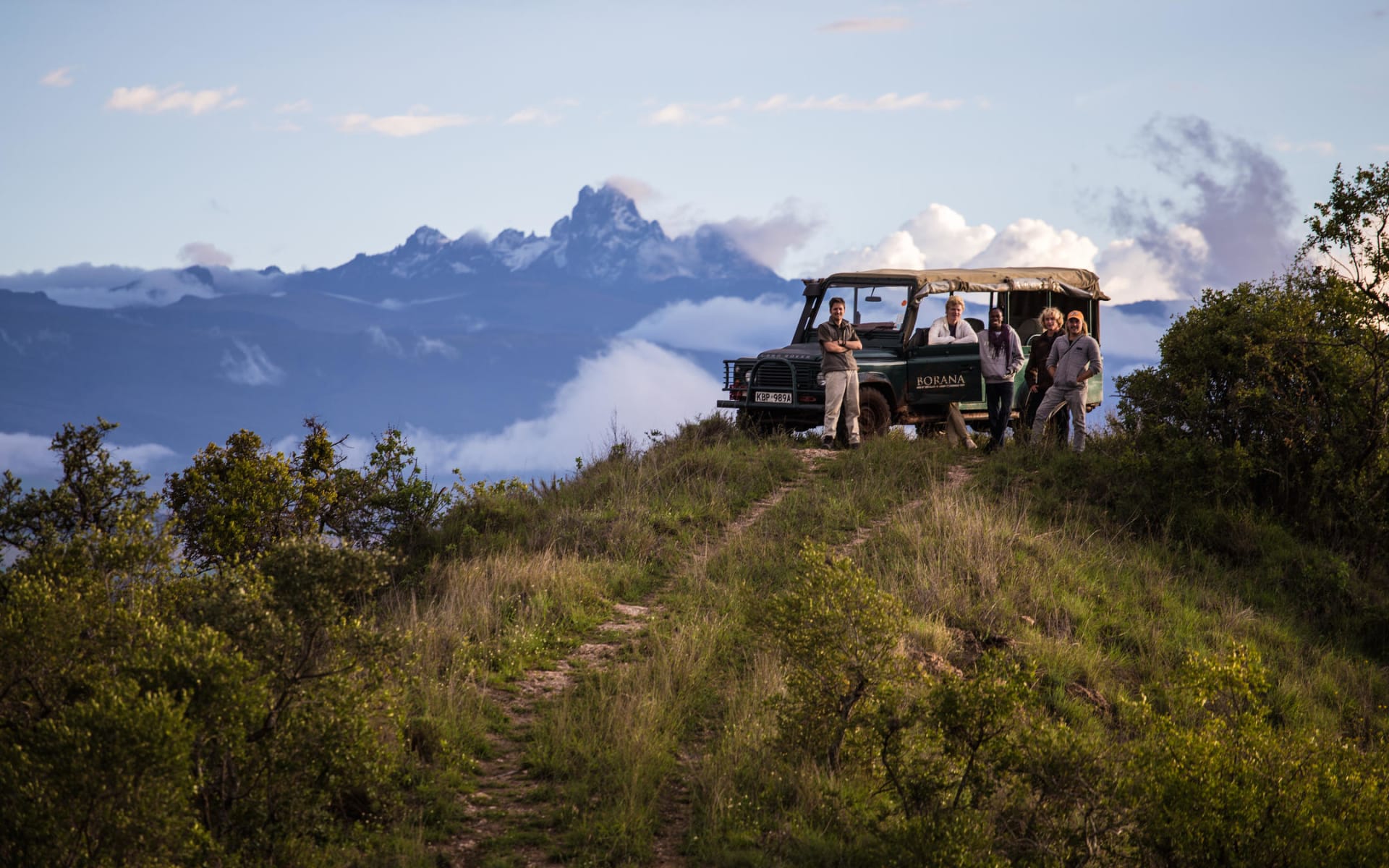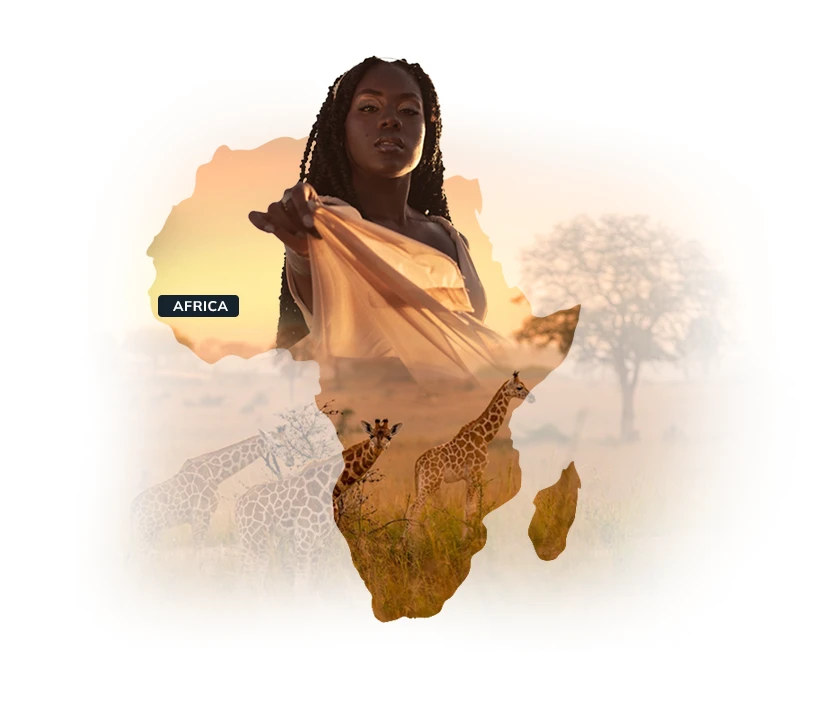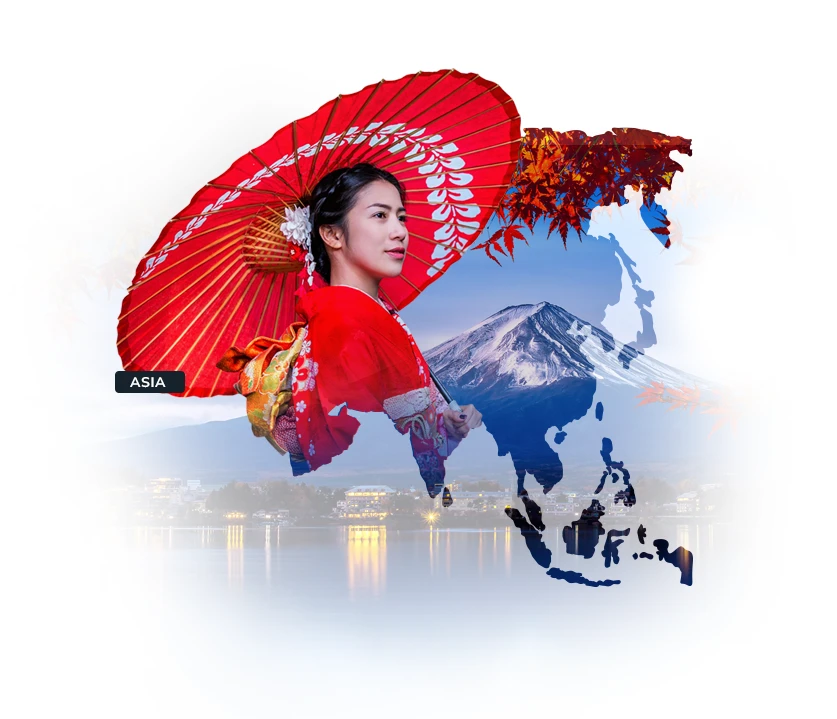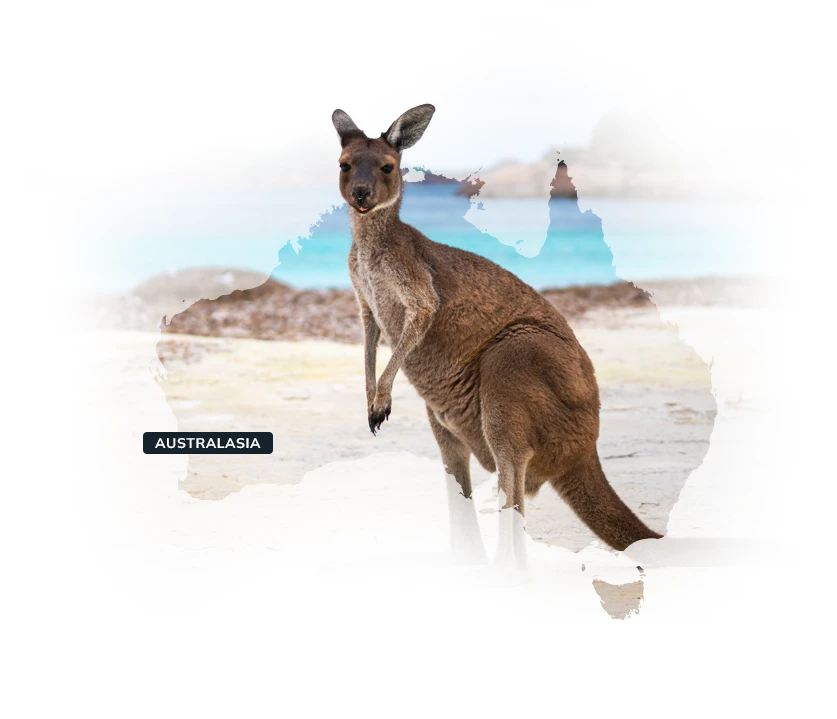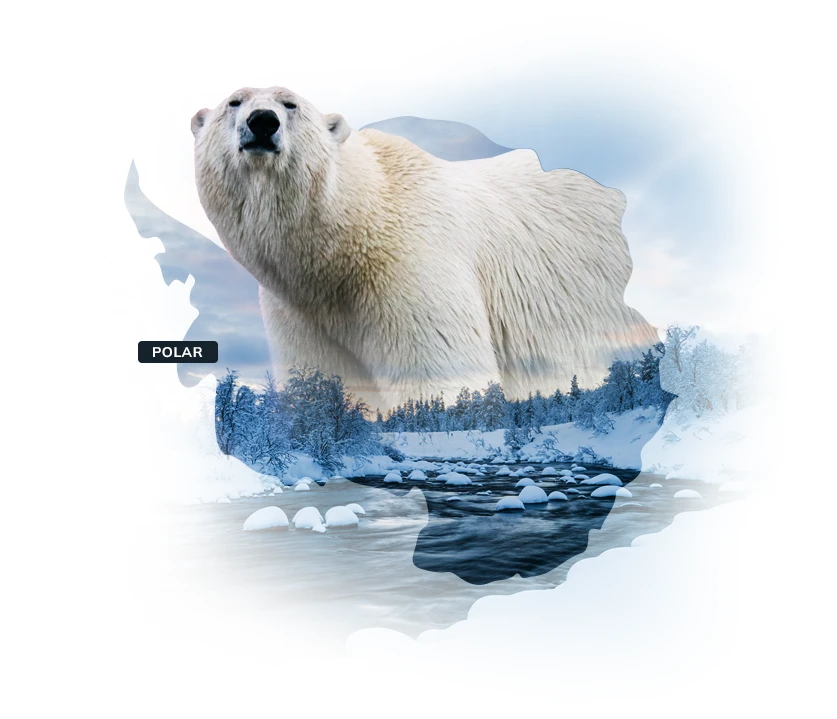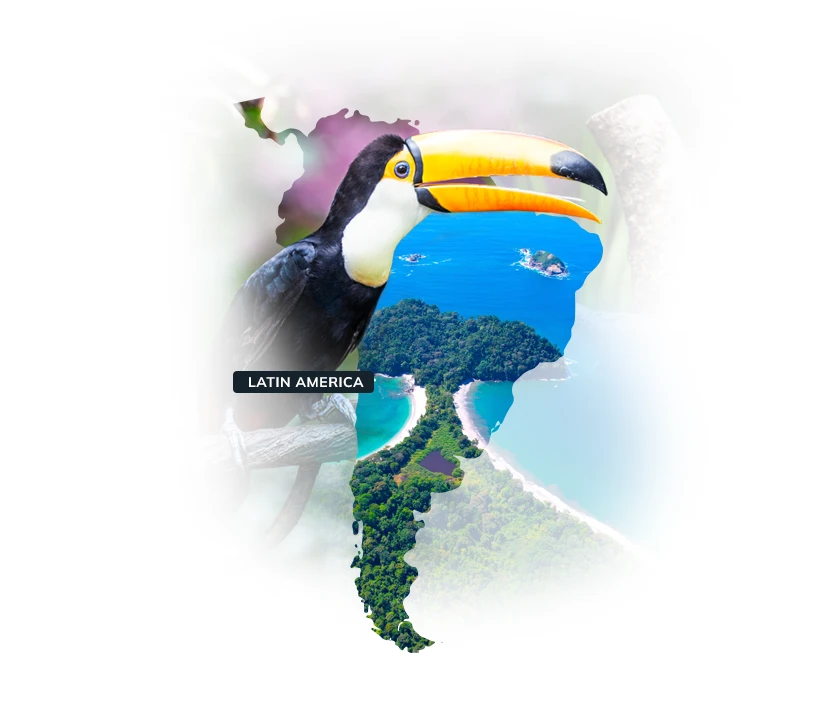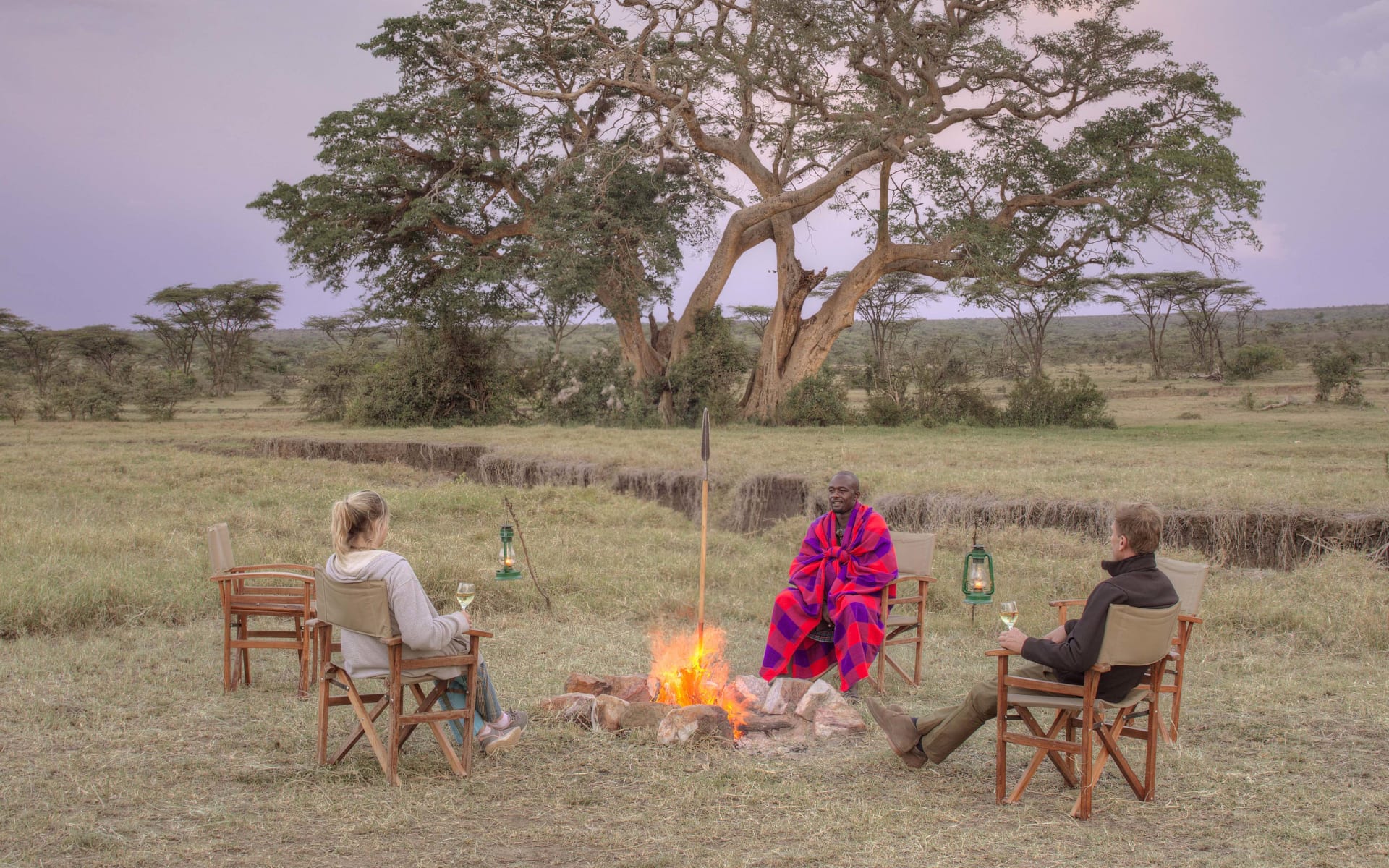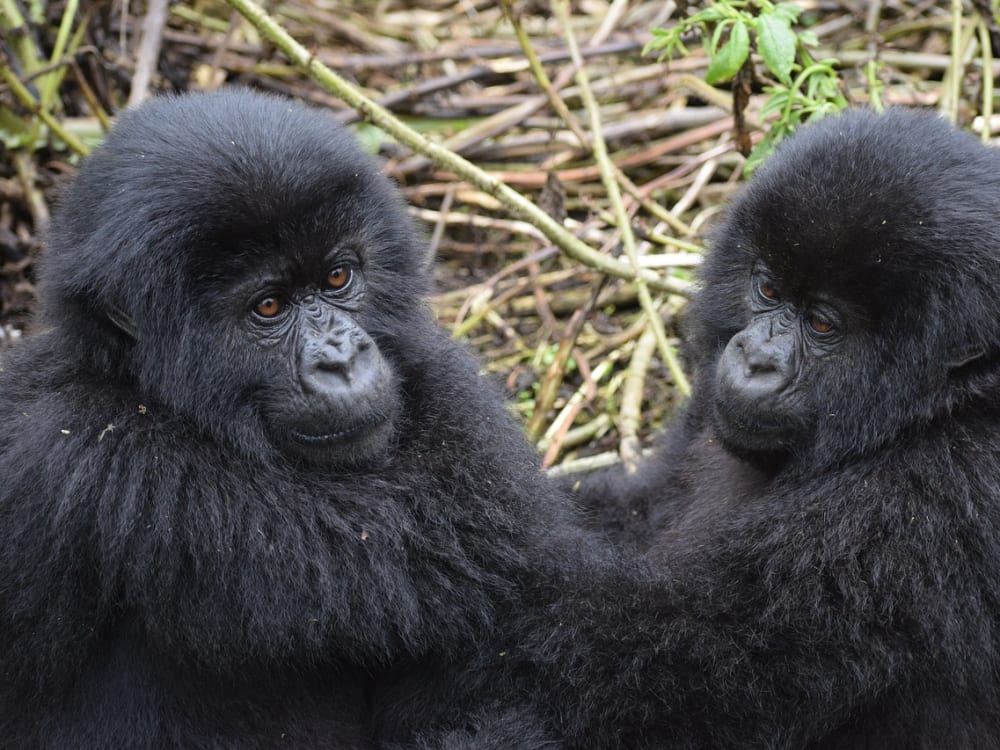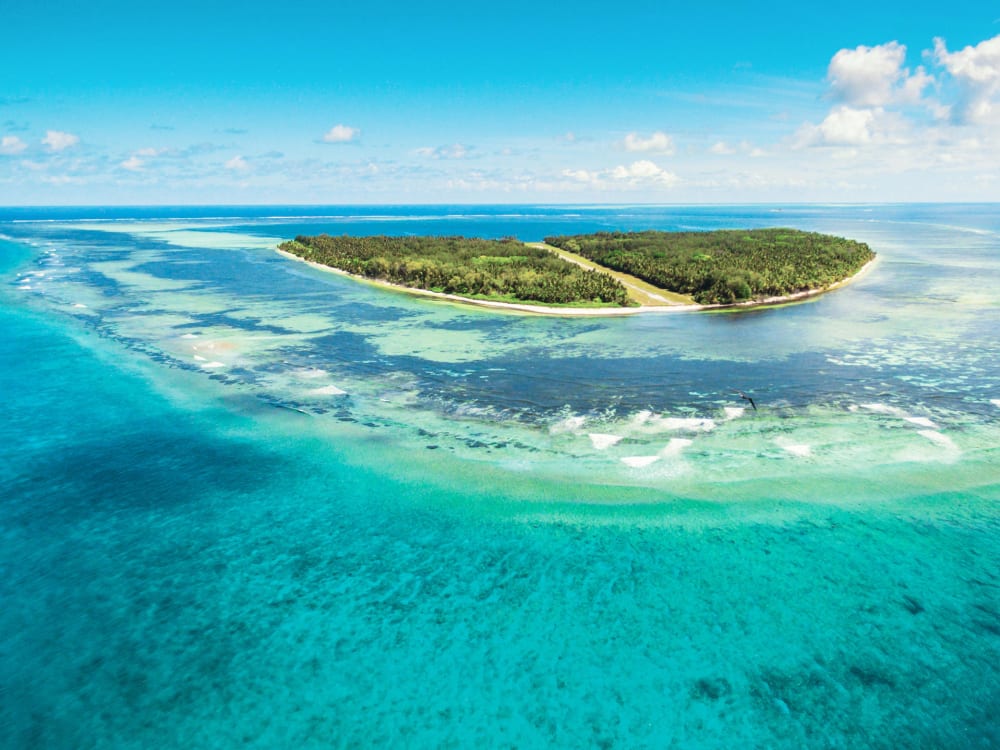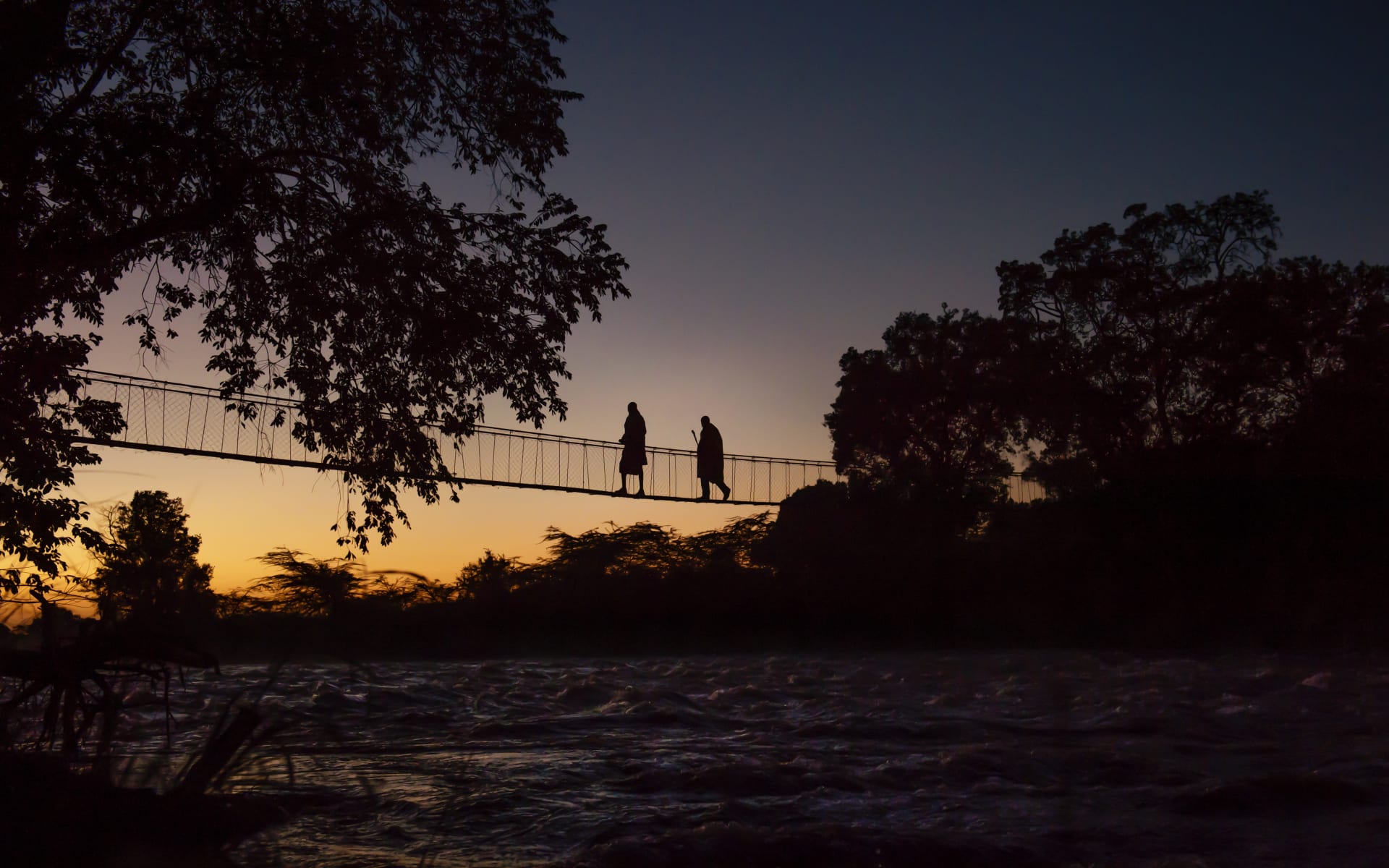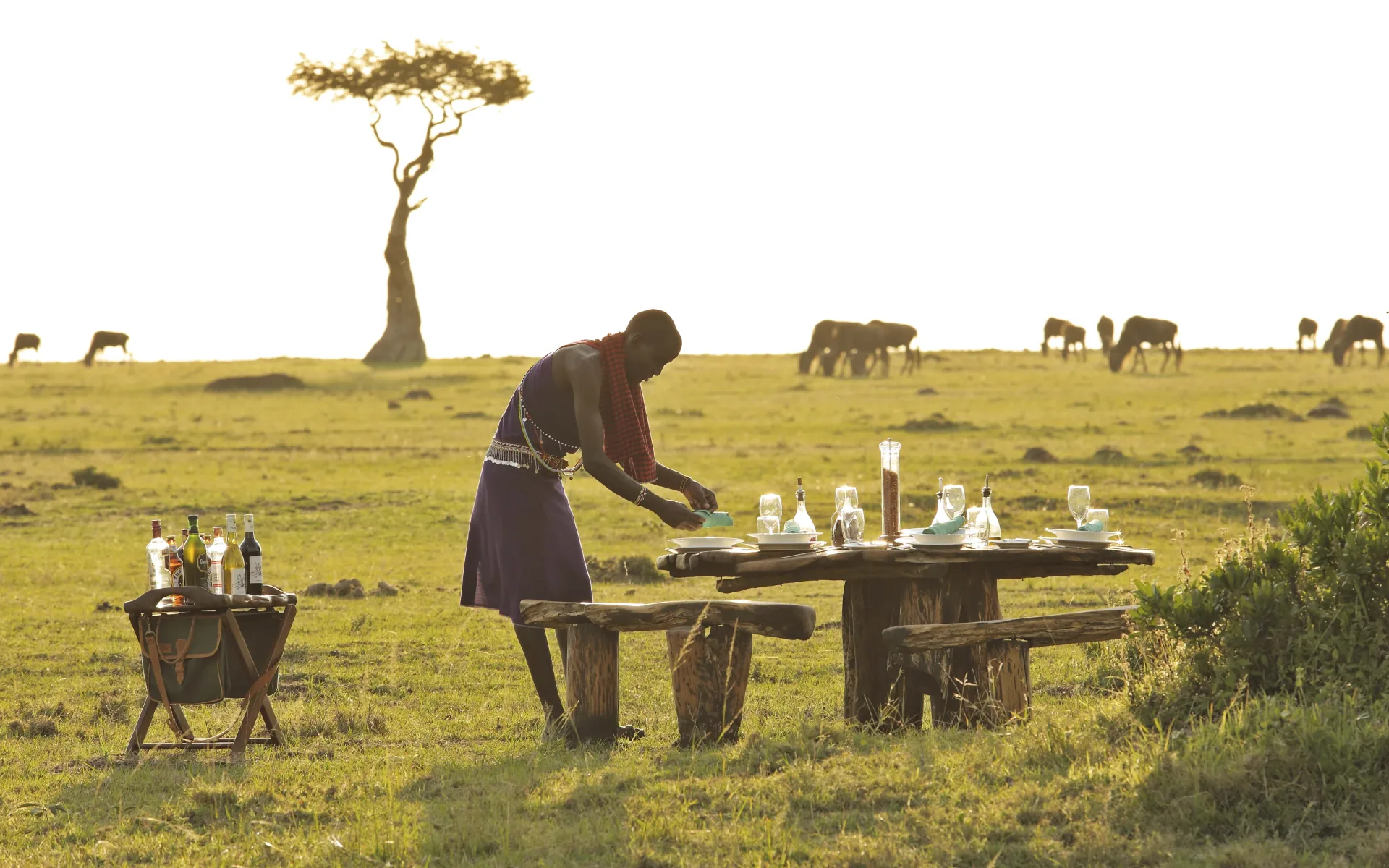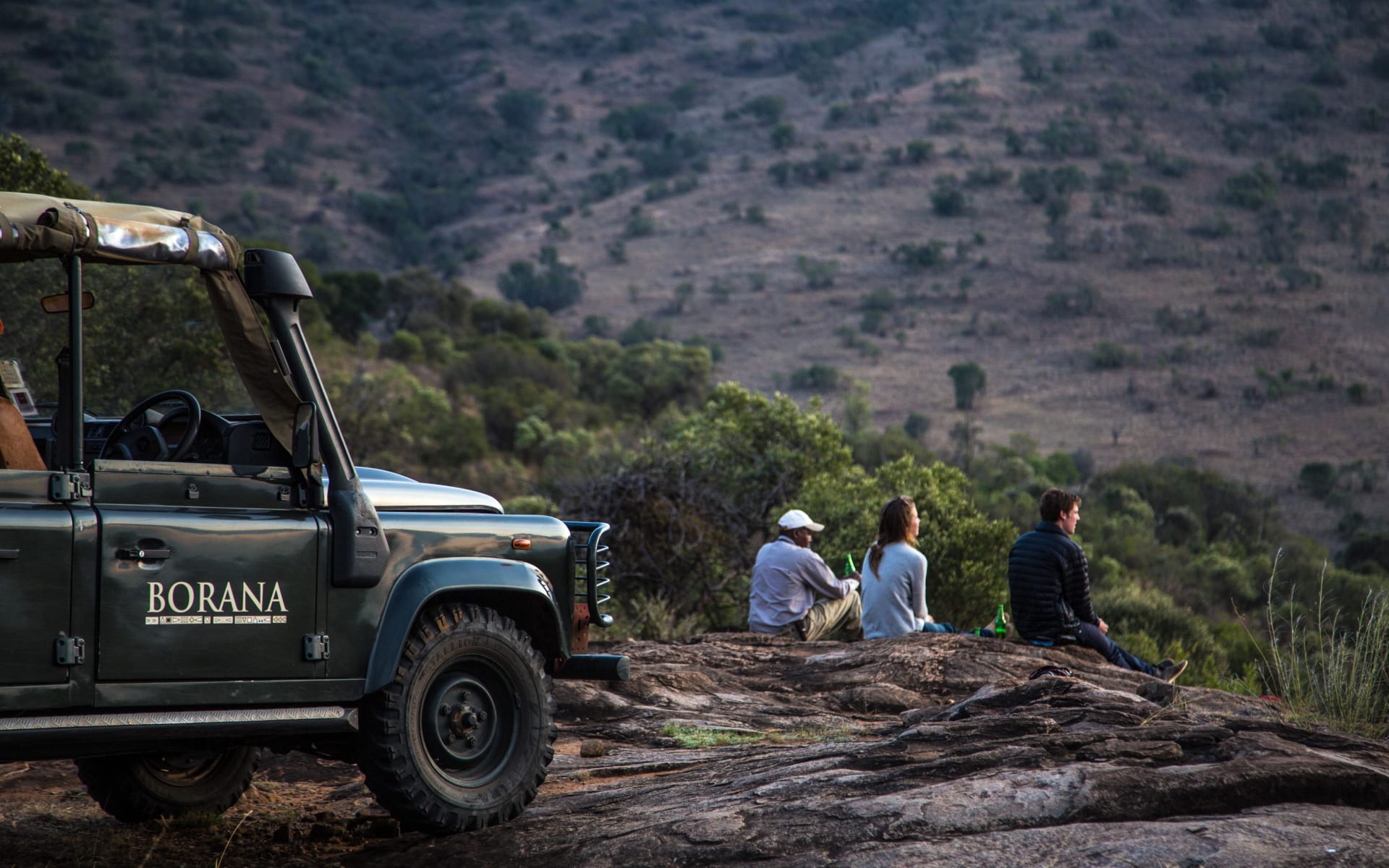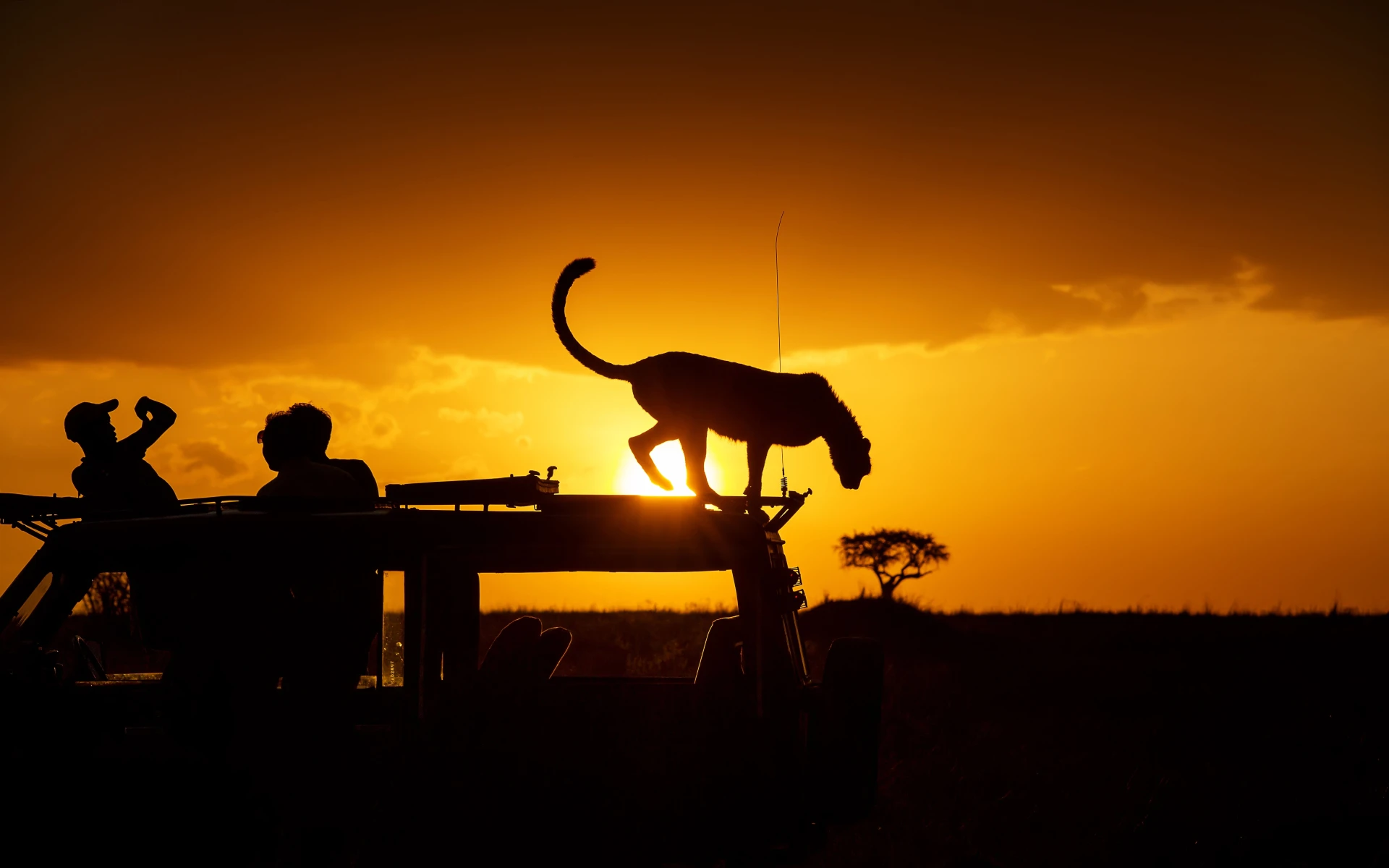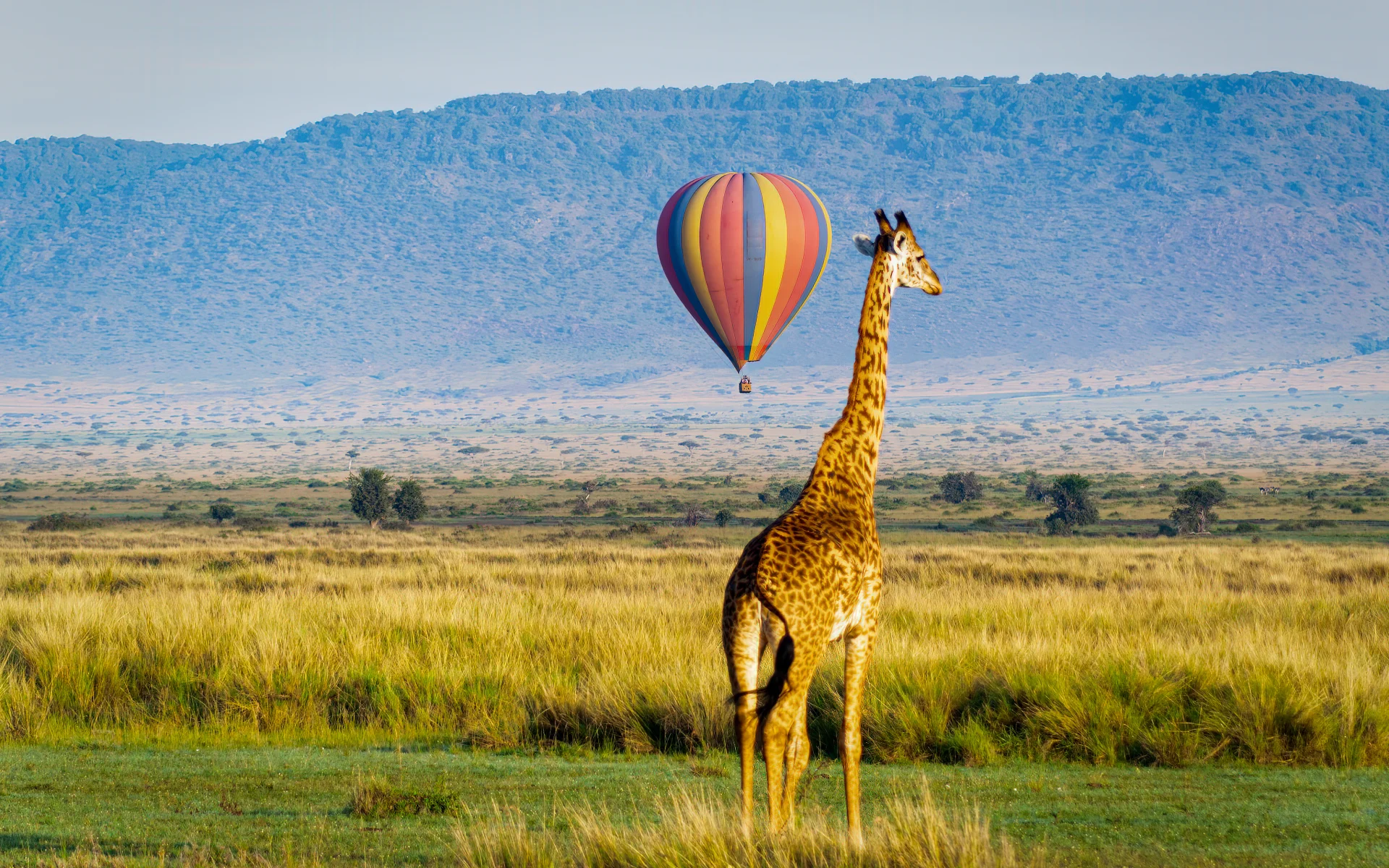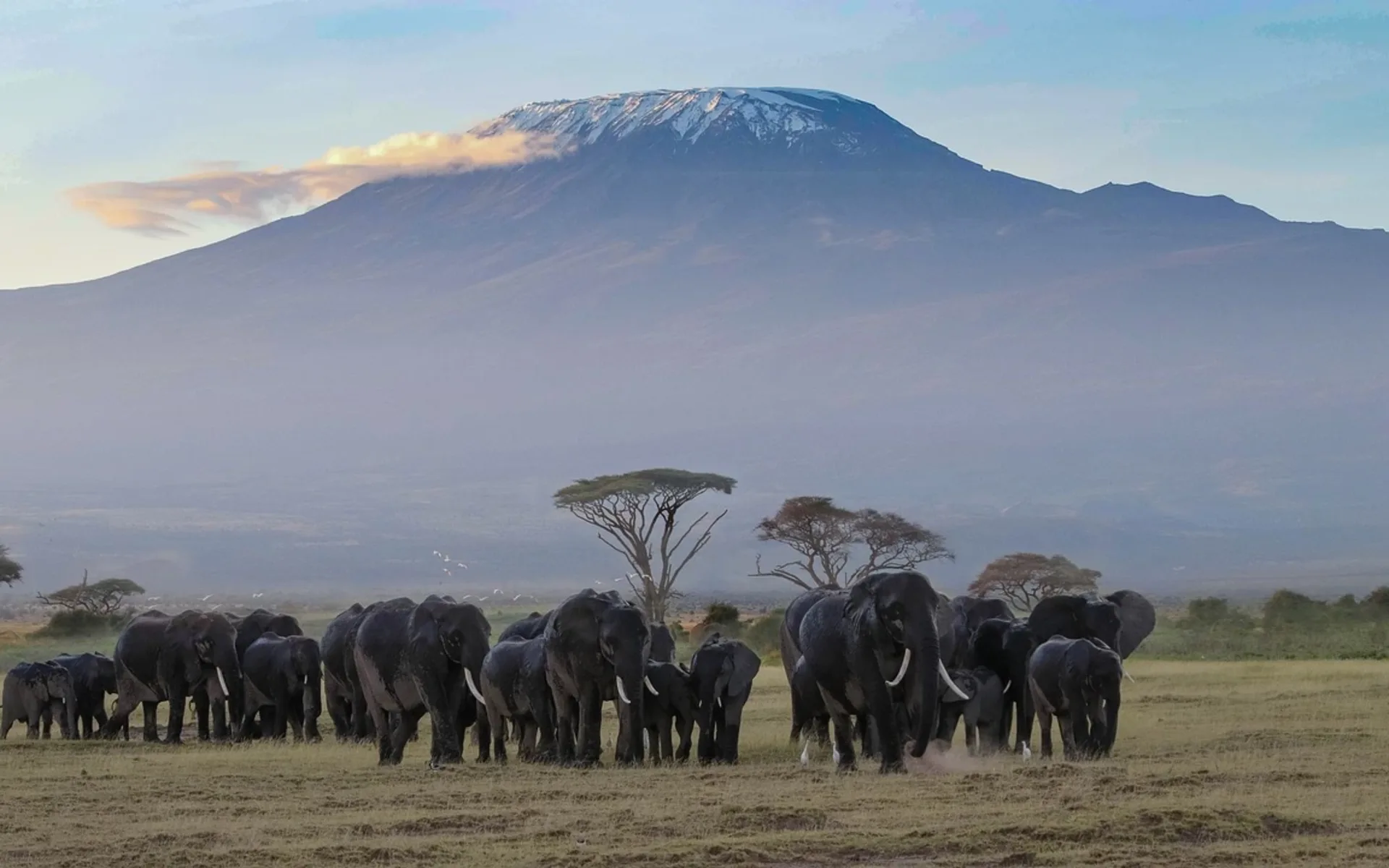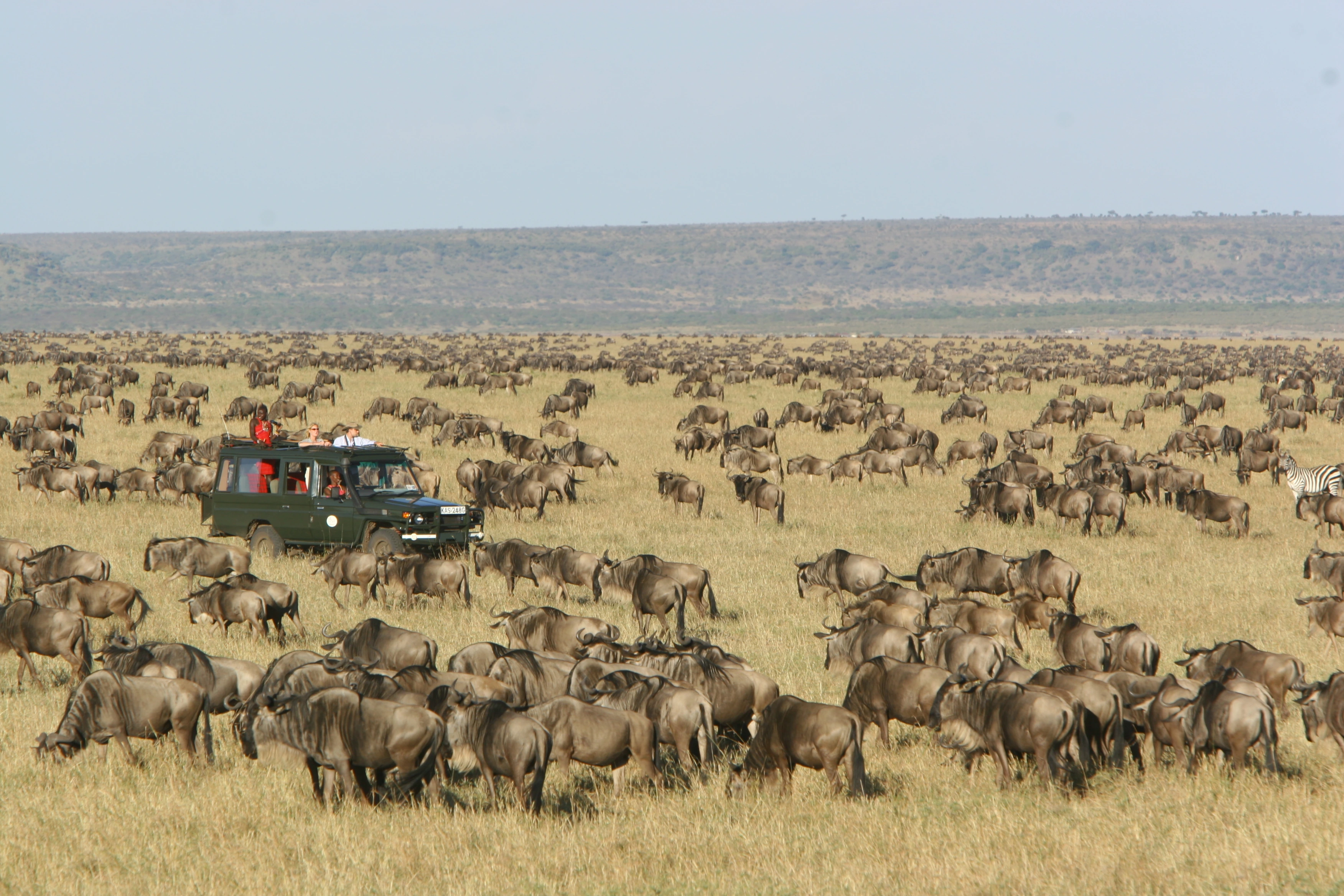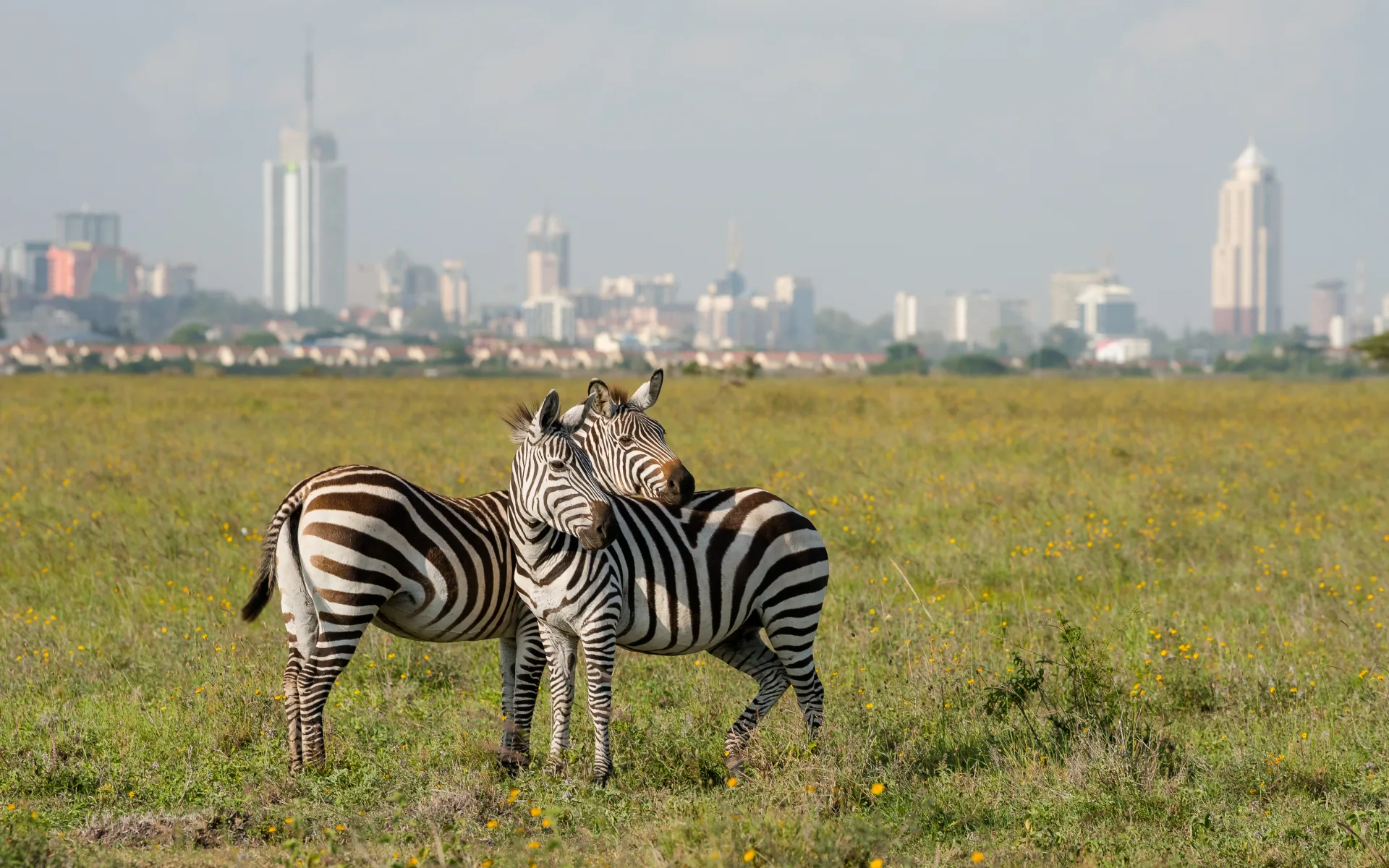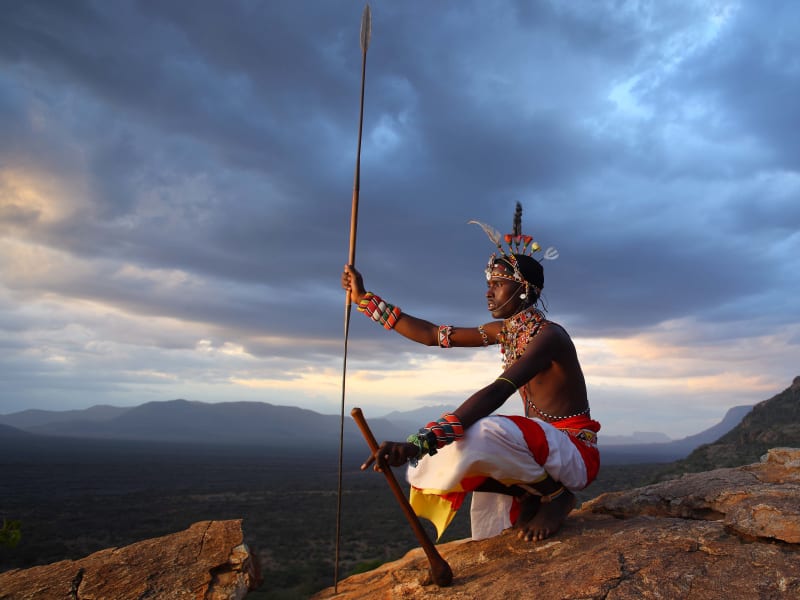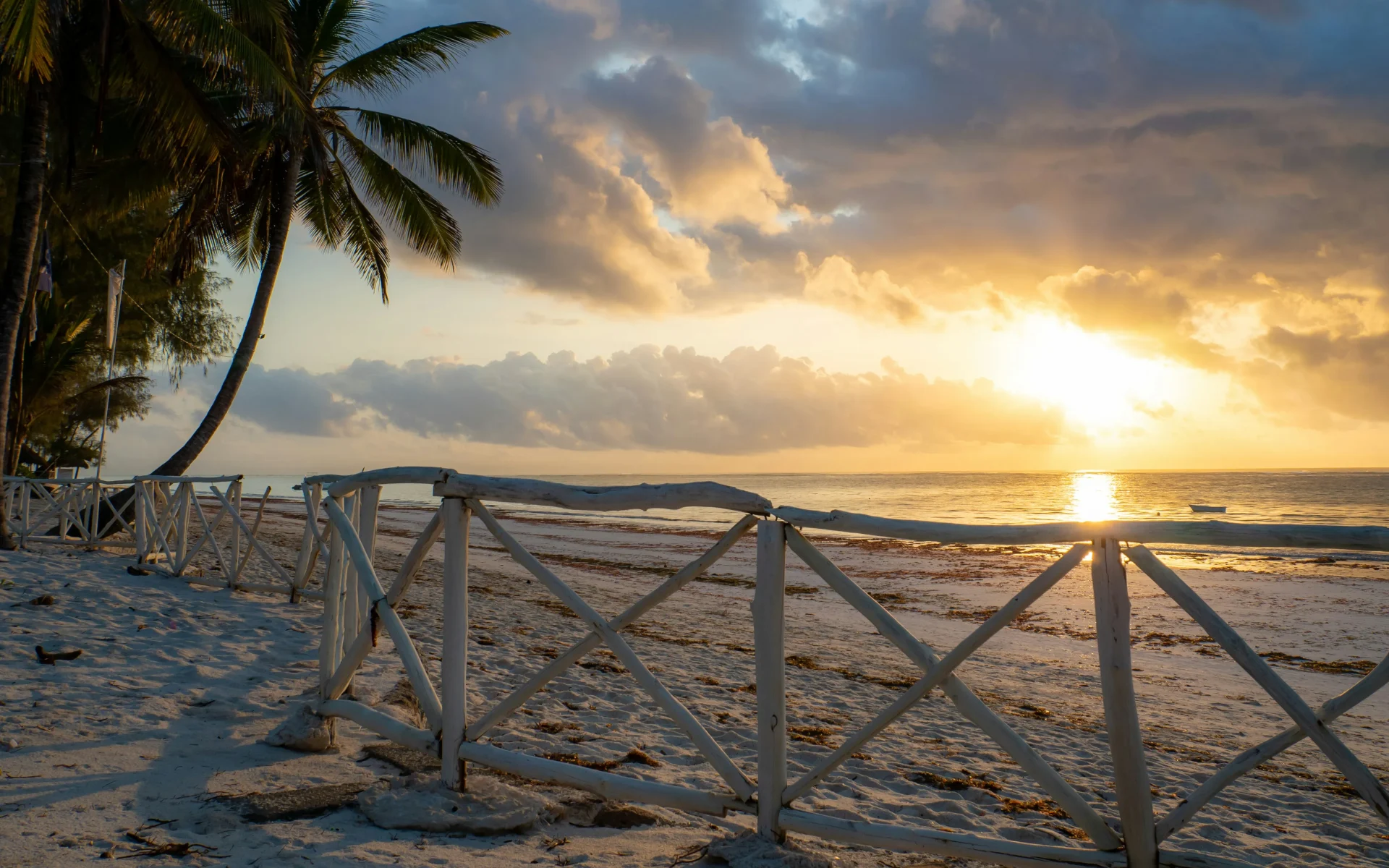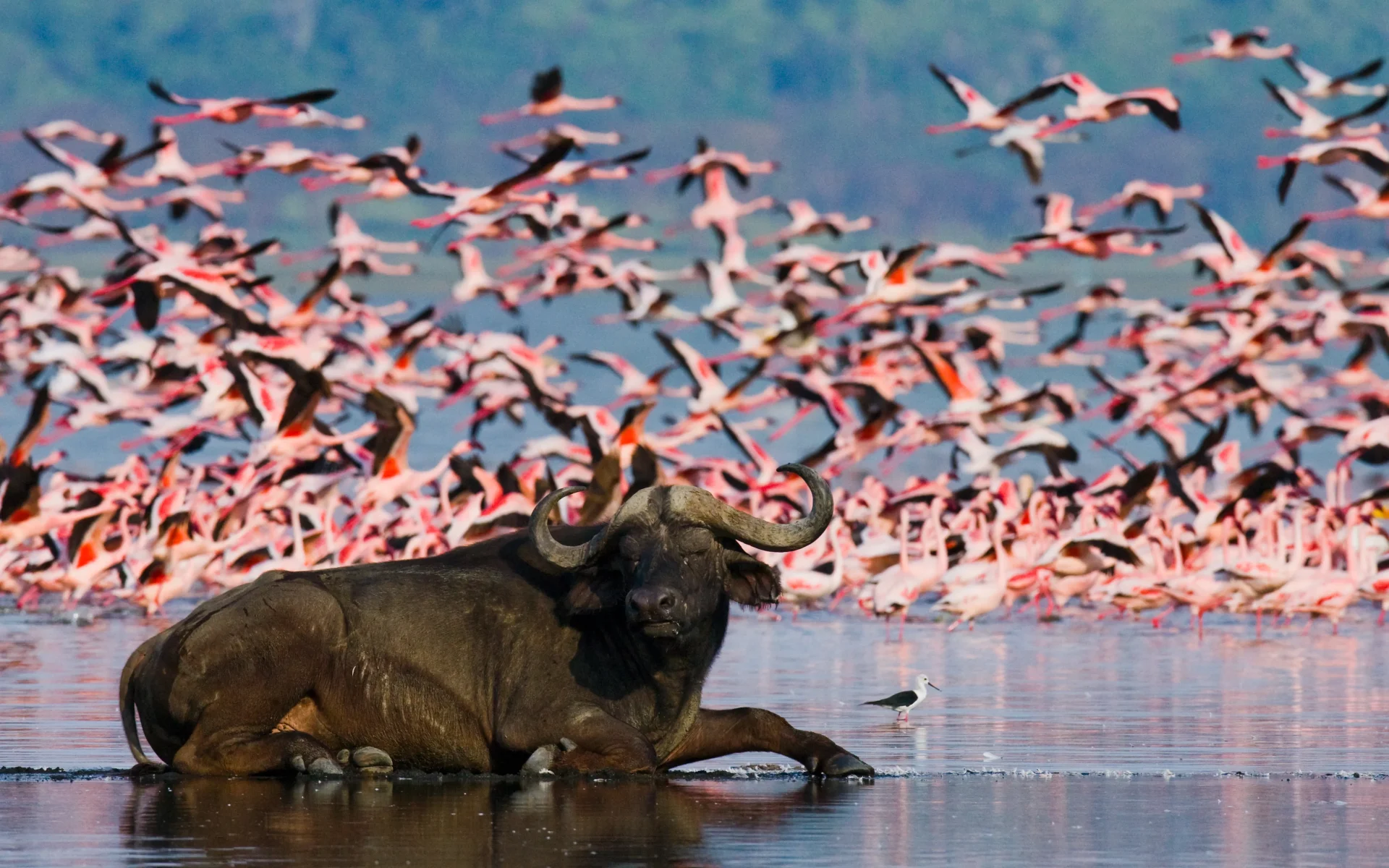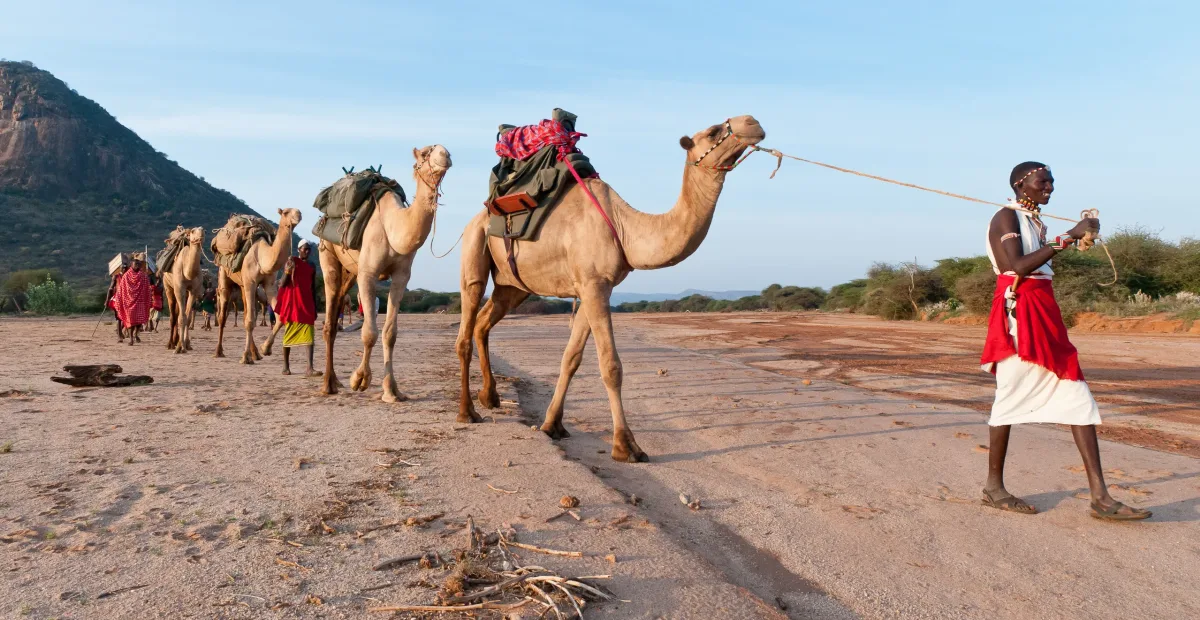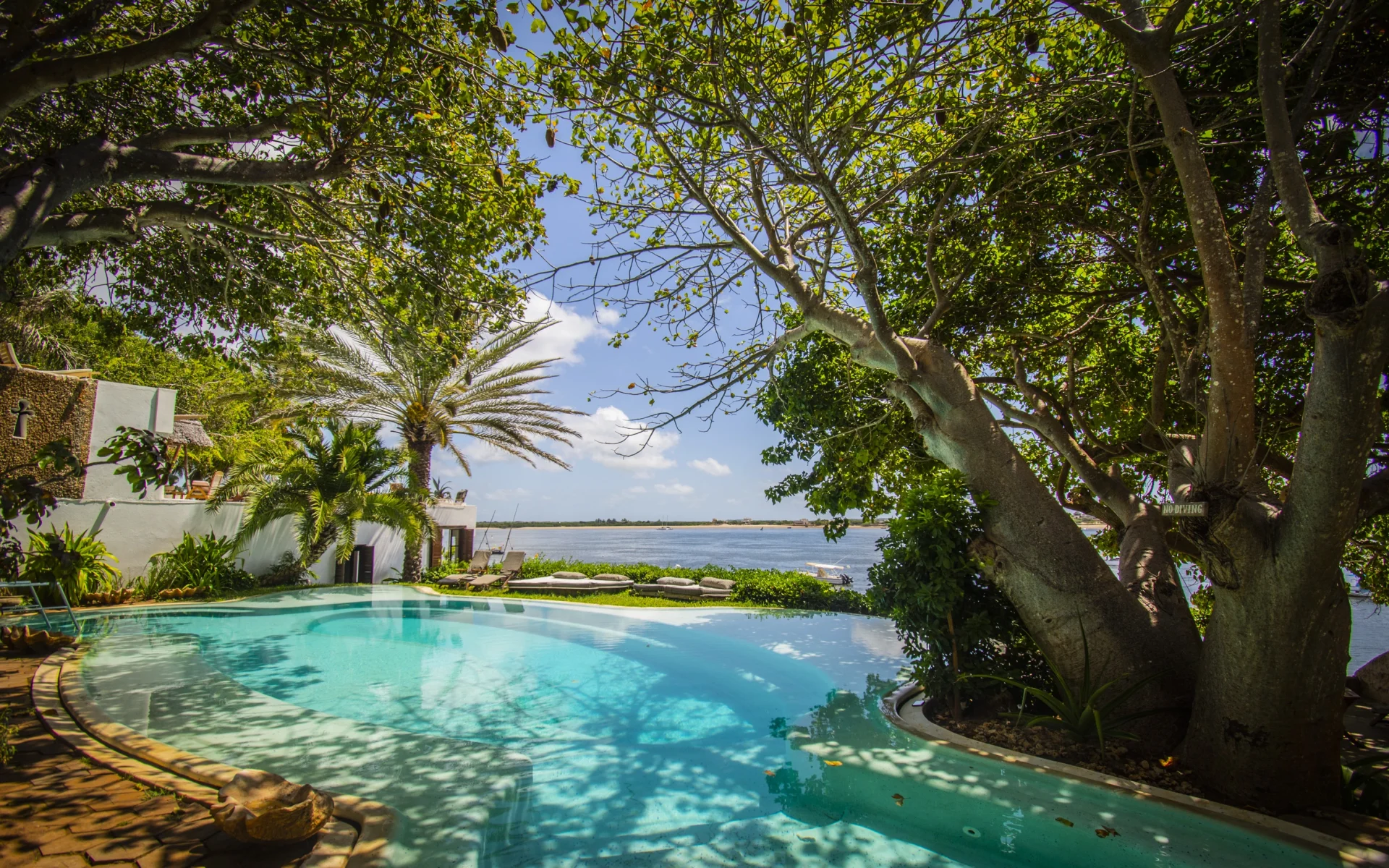"Excellent experience and everything work perfectly"
"Very well organised. Our guide and cook were skilled and did their job very well, moreover they were very pleasant company to travel with. This leaves us with great memories of Tanzania, the wildlife and Tanzanian people."
" It was brilliant, Andy was over the moon. We couldn't thank you enough and will defiantly recommend you and use you again if we plan to go in a few years. "
"Our trip was well organised and tailored perfectly to both our interests and the time we had available. It was an excellent introduction to Thailand visiting ancient temples, bustling cities, the jungle and the mountains. I'd recommend Wayfairer Travel and our trip to anyone. "
".Tom did an excellent job putting together a customized itinerary for our group of 9. His in depth knowledge of the various game parks allowed him to direct us to parks that matched our expectations of what we were looking for in a safari holiday. We did not want to feel like we were part of a packaged holiday but also wanted to ensure that we saw all the wildlife we hoped. Ruaha and Selous were excellent choices and winding down on Mafia after the safari was perfect. We did not encounter any issues throughout the entire trip; drivers, pilots, etc. were there to meet us for all legs of our journey. I have travelled extensively and usually do all my own bookings but I have absolutely no hesitation in recommending Wayfairer Travel. I do not think I could have put together the itinerary without Tom's help."
"I was extremely impressed with the organisation and professionalism of Wayfairer. They met the brief I gave them perfectly, meeting all my requirements and making suggestions to improve the overall experience. The standard and quality of hotels at each destination were first class. The tour guides and drivers were excellent always on time, polite and very knowledgeable. This was a holiday of a lifetime that we will always remember!"
"Wayfairer sorted out our whole trip to Cambodia - it was super organised from start to finish and we immediately felt at ease on arrival. The tour guides were friendly and helped far beyond the call of duty. We saw some amazing sights and things that we will remember for years to come. Thanks Wayfairer for giving us a holiday of a lifetime. "
"The reason I picked Wayfairer is because it promised to be bespoke, luxurious and fair to the working staff and environment. In the end, Wayfairer has deliveried everything it promised and beyond : Our personal guide and driver have gone above and beyond to make sure our holiday experiences are memorable; all the hotels we stayed are all boutiques style yet very luxurious; Tom, The gentleman who designed our holiday truly understood what our expectations are and put together just enough destination and actives to make the holiday fun yet relaxing. It has been overall a 10 out 10 experiences.If I ever need another tailored holiday, Wayfairer without any doubts will be my top choice. Thanks guys!"
"our recent trek of Kilimanjaro was a success, as all 12 of our group reached the summit and back safely. the organization by wayfairers of the whole trip was very good . the guides and other staff were excellent.. "
"Wayfairer: slick, smart and safe Having only returned a few days ago from an unforgettable honeymoon, we are already planning our next trip away with Wayfairer. "
"My wife and I agreed that our holiday in Cambodia was without doubt the best we have ever had. Every day was different, ranging from the magic of the temples of Angkor, the wildlife, ranging from dolphins to elephants, the sadness of the Killing Fields, the majesty of the Royal Palace to the beauty of Lonely Beach. To pick any one thing was impossible, but if forced to it was the absolute brilliance of the staff of the company at every level, in the UK organising and supporting the holiday and in Thailand as brilliant guides and when due to a travel delay, caused by extreme weather, rearranging and supporting us in a way that actually enhanced our holiday!"
"This was the most incredible holiday I have ever been on. I went not knowing what to expect but given all the preparation Wayfairer had done on our behalf I was confident it would be a smooth and enjoyable ride. WOW was that putting it mildly. The whole holiday was great surprise after great surprise. For the first three days while in Siam Reap we had our own tour guide who spoke great English, took us to local places which were known to have delicious food. We went on a bike ride round the temples which was so much more fun than walking or getting a car and much quicker - taking the cycle paths meant we could see more. The accommodation was a boutique hotel and top notch and in a great location and we had a driver for the second day (and who also took us to and from the airport who was lovely). Flying to the capital we were greeted by a new tour guide and driver. These two became great friends of ours and we are still in touch. Again really great experience, saw the sites as per our agenda, beautiful boutique hotel and our tour guide even went off the agenda and got us tickets to the Cambodia/Thai football match. Great fun. We then went to a National Park before going down to the coast. On reflection although sleeping in a Khmer Cottage was an 'experience', there wasnt much else to do there and the waterfall wasn't anything much given we didnt go in rainy season. If I were to do it again i would go straight to the coast have a night in the amazing hotel we stayed in and then go to one of the islands off the coast and stay there for a night or two. We visited the smaller island for a day trip on our free day and it was pure paradise. They have huts and wow, I would have loved to wake up in one of those and sip my morning coffee on the terrace looking out onto the crystal clear waters. Coming back we went via another national park and saw huge monkeys swinging from trees and eagles soaring above our boat. It was only a quick hour or two boat trip around the lakes but definitely worth it. Tom was amazing before, during and after the trip. I felt so well looked after and it was great to have such an incredible holiday with everything already taken care of. Making good friends with locals, getting to visit local places that other tourists may not have known about was great and knowing everyone is paid well was the icing on the cake. Thank you for such a great holiday. I can't wait to book my next one! I've been recomending Wayfairer to everyone who asks about my trip. It really is the perfect company if you want to make sure you get the best of everything with the knowledge noone is being explotied in the process. "
"The Zambia and Malawi trip that Wayfairer planned for our honeymoon was fabulous, the locations were all amazing and the patience of the team with answering questions and looking at options during the planning was greatly appreciated - thank you!"
"The trip was highlight organised and everything ran to plan. They recommended some very special places to stay which we will remember forever."
"Chose very good local partners for our safari and accommodation. Responsive and flexible in the planning of our trip. Helpful personal insight of agent was very helpful in informing decisions. Immediately available by phone, on a weekend, when we called from our trip with an issue and resolved it. "
"Everything was prepared for my girlfriend and I, what makes your holidays a lot more enjoyable and relaxing. The tours were really good, the driver and tour guide very friendly. I went to Burma and without speaking the local language it makes it really difficult to go anywhere as the local people don't really speak English. "
"Wayfairer organised a wonderful honeymoon for us! It was clear that their travel specialists have considerable experience of the destinations suggested, as they provided an itinerary that covered exactly what we wanted to do and produced a very helpful booklet of travel information. The accommodation that they selected in Tanzania was excellent and we had a very knowledgeable safari guide. I would highly recommend Wayfairer for unforgettable, stress-free holidays."
"We travelled with Wayfairer to Cambodia and Vietnam in August 2016. Firstly, I must say that we did not skimp on cost here. However, having left all accommodation, internal transfers and itinerary to Tom and his team, I have to say that this is the best organised trip we have had. From the meeting with the first guide at Siem Reap to our parting with the last at Hanoi, the organisation of the trip, the quality of the accommodation, the guides and the activities arranged for us were outstanding. And there was time for poolside relaxation at all of the very good hotels. i would have no hesitation in recommending Wayfairer if you are considering a trip to this part of the world."
"Wayfairer took the trouble to listen to what we wanted from our holiday, and then exceeded our expectations"
"Tom at Wayfairer really listened to what we wanted in order to deliver an unforgettable holiday for our first wedding anniversary. "
"Wayfairer did an outstanding job in inquiring into my families wishes. We were looking for an "off the beaten track experience" in Africa; authentic and child friendly. Wayfairer completely delivered against our aspired Africa experience."
"Wayfairer help us plan our honeymoon. It was great that we got to have a few options for the lodges and hotels that we wanted to stay in so that we could find the best fit for us. We felt like celebrities every where we went since we were always greeted by someone to help us get to where we were going, even immediately after exiting the airplane! The staff at the Saruni Mara lodge were excellent and we loved our guide, John. The lodge was in a beautiful location, our room was spacious and even came with hot water bottles for the bed every night since it was chilly. We loved the family style dinners around a beautiful table. Everyone got to know each other and we all talked about where we are from, our jobs, lives, travels and of course what we had seen during our day. Our stay at the Waterlovers resort was excellent as well. It was so peaceful and relaxing. Each room got their own mobile phone so that we could call the hotel for any need even when we were away from the hotel. They arranged restaurant reservations and a personal driver for us as well. Meals at the hotel were excellent and every day there was a new menu to choose from. Tom at Wayfairer checked in on us during the middle of our honeymoon to make sure everything was going smoothly and immediately made any changes/accommodations to make our honeymoon the best we could have imagined. We loved the excellent service we received from Wayfairer and all of the people we met during our Wayfairer organized trip."
"They put together a very lovely itinerary and really listened to what we wanted from our trip."
"They helped us to incorporate activities and sights that were important to us, creating our perfect honeymoon. And they were always on-hand to assist us, even when we were over the other side of the world."
"We were in Chiang mai and had a short and tight itinerary in mind and couldn't book onto the cooking course we wanted, so I asked Harry to help find us an alternative. Not only did we have. Great day, Harry was able to arrange the company to pick us up from our hotel and drop us back, despite staying out of the main city. Usually tours in China mai only pick up from hotels within a certain distance from he centre, so this was a great addition as it meant less money and time we had to spend in organising additional transport into the centre at the beginning and end of the day. "
"Harry and the team helped me plan a holiday of a lifetime in Thailand with my family .We were able to include something that each member of the family would really enjoy including culture , cooking , adventure , wildlife and relaxation . We started in Bankok and travelled to Kanchnburi , Chiang Mai and on to Phuket . We only had 2 weeks , but we did so much and saw so much that it felt like we were away for months. Every part of the journey was planned to perfection and it took all the stresses away of travelling so that we could just enjoy learning about this amazing country . The guides we had were superb and went out of their way to ensure we had the most amazing experience and that we learnt about the culture and tasted the most fantastic food at every opportunity . All the accommodation we stayed in was amazing from The luxurious shanghai mansion in the centre of China town Bankok , to the floating raft hotel and the Jungle tree houses . Some of the highlights were the Grand Palace In Bankok , waking up to watch an elephant bathing in the River at the raft hotel , the Jungle trek where we came face to face with a troop of Monkeys and the beautiful lake trip at Khlong Saeng National Park . The Farm Cookery school was inspiring . And finally our beautiful beach front hotel suite in Phuket where we relaxed for a few days at the end of the holiday before the flight home. I would definitely recommend using Harry and his team to pland and book your holiday and provide local guides who are knowledgeable and great fun to travel with. "
"Our experience was totally AWESOME! The guides were totally into us. Once we were scheduled to bike ride. It was 120 degrees and we are elderly. Needless to say, we didn't bike but opted for massages which our guide arranged. Flexible would be the best description of our guides. "
"It was challenging to organise this holiday, getting the weather right to travel north to south, varying expectations from family members and family logistics with people coming in from New Zealand, London and other parts of the UK. Harry helped put the program together, making key recommendations and final adjustments to account for family members needing to depart early. Once in Hanoi we were met by our guide who helped with local information and advice. We thoroughly enjoyed exploring Hanoi at night and eating at local stalls. The Water Puppets were entertaining and worthwhile. Halong Bay was both beautiful and an opportunity for us as a family to relax with a water fight while kayaking. The transfer to Hue was delayed due to a typhoon and flooding in Hue, but our guide handled all the rebooking and the next day we arrived to a mildly flooded Hue. The wet weather did not dampen our new guides enthusiasm and soon we were being shown the stunning Citadel and majestic Tomb of Emperor Ming Mang. The following day we drove from Hue to Hoi An via the Hai An pass, a long but interesting journey in which we learnt more about Vietnamese history and cultural diversity from our encyclopaedic guide. Hoi An provided relaxation on the beach but also allowed us to explore the countryside on bikes, the most abiding memories are however the cooking class where we tried to emulate the skills on display every evening in the local market. After 4 days in Hoi An a transfer to Ho Chi Min took us to an ever more modern city with hustle and bustle. The following day saw a visit to the Cu Chi tunnels and a deeper understanding of recent Vietnamese history. The highlight of Ho Chi Min was however without doubt the Vespa tour. Being in the middle of traffic and slithering eel like through a forest of motorbikes to stop off at different points and explore the city, was a truly memorable experience. On then to the Mekong delta, again a long transfer by minibus supplemented by useful points along the way explain local agriculture. Roadside food was a revelation and far from the western expectation. The Mekong itself is impressive and the floating market fascinating. Throughout the holiday we were accompanied by knowledgeable and helpful guides, the food was as anticipated exceptional and the people welcoming. This was voted unanimously as the best holiday yet and Wayfairer contributed substantially with their organising and skill to achieving this. "
"Tom at Wayfairer did a fantastic job organising our honeymoon. He patiently listened to our suggestions and tailored a number of different options for us, changing dates and itinerary several times to best suit our tastes and availability. All the documentation, as well as some additional tips, was sent to us well in advance. Tom and Harry have always been extremely efficient and responsive whenever we had some queries and made the whole process very easy for us. Overall it was an amazing trip. Thanks guys! "
"Our trip organization in Burma was excellent. More over, Wayfairer choose the mix of different events very well. We enjoyed the trip! We are extremely truly for our guides. We learned a lot about the culture, history, people. Each guide has its our opinion that I like very much. I have two favorites in this trip: - Inle lLake ecosystem - Pagodas made from teak."
"We were able to discuss our requirements in advance and everything on the agreed itinerary was delivered as per expectation. All Wayfarer and appointed guides and drivers were all of a very good standard and a pleasure to be with. We were felt safe with the quality of drivers and enjoyed the personalities and knowledge of the guides."
"Our experience with Wayfairer was excellent from start to finish. We had a relatively tight budget and Tom was the only person to really listen to what we were looking for and then make it happen. From first contact through to arriving home, the whole process was so effortless and went without a hitch. I can't recommend Wayfairer enough!"
"My friend and I booked with Wayfairer Travel for our trip to Kilimanjaro in September 2016. The whole experience was beyond amazing. From a personally tailored hike plan to the team of porters and guides, everything was handled perfectly. We met up with Tom for a coffee before deciding on Wayfairer, but the moment you hear the passion in his voice for the fair treatment of the Porters and Guides working on the mountains It didn't take us long to make our decision. The trek itself was amazing and we loved every bit of it. The whole team at Fair Travel were very punctual, friendly and welcoming. We did lemosho route on Tom's advise and it is beautiful and great for acclimatizing. Our guides and Porters were amazing. They were friendly and experienced. One thing that I loved especially compared to some other treks that I have done is that the guides accessed our stamina and strength and knew exactly how fast or slow we should be climbing at different routes on the trek, so they set the perfect pace and made it much easier for us than it would have been otherwise. They were strict with the speed and diet and kept an eye on our appetite which I think is one of the most important things up on the mountain. And the food was absolutely delicious so a special shout out to the chef. Wayfairer and Fair Travel attract these amazing guys to work with them because they pay them and treat them fairly and having a great team around you makes for a great experience for the customer on the mountain. I will definitely travel with Wayfairer Travel again!!"
"My first time in that part of the world - Kenya. I wanted to play it safe, and since on vacation for a few days only, I wanted the transition smooth. Not only I got that, but the place selected had a sterling service, the guide for the safari was dedicated and I saw so many different types of animals. Also, with Wayfairer, everything was clearly explained and understood in advance. I was well looked after. I will definitely go back to Wayfairer, for my next adventure/exotic trip."
"Last October we decided we wanted to go on safari. As I had been on safari in Northern Tanzania (Serengeti, Add to dictionary and Lake Manjara) a long time ago, and enjoyed it very much, I thought it would be nice to do again, possibly followed by a relaxing stay on Zanzibar. My only objection was that it might be too crowdie with tourists by now. I got in contact with Tom Blakey of Wayfairer and voiced this concern. Tom immediately confirmed that if we wanted peace and quiet out of the beaten track all of these places were not to be recommended. Instead he came up with two different game parks in Southern Tanzania and a little island offshore South of Zanzibar. After several rounds of email questions and answers between Tom and us we decided on 3 days in Lake Manze tented camp in the Selous, 3 days in Mdonya Old River Camp in Ruaha National Park, topped by 5 relaxing days in Butiama Lodge on Mafia Island and travel between those by light aircraft. The recommendations all proved to be excellent. We were lucky to be off season and for game drives always had the landrover to ourselves, of course accompanied by good guides and drivers. But even in peak season, the camps have only twelve tents for two people so there could never be more than 24 in total. 'Tents' had everything we needed from double bed to shower and from wardrobe to mosquito repellant. All in a very friendly atmosphere and most importantly, we saw lots of animals (including many species of birds) in their natural habitats. Both parks are huge and there is no habitation whatsoever. Butiama Lodge really is relaxing and comfortable with very friendly staff and Mafia Island has very little tourists. In fact if you come and expect to find souvenirs you are in the wrong place. The flights in between were highlights themselves, mostly only room for 4 passengers. The views from the propeller aircraft were magnificent. Waifairer's organization was excellent and on arrival and departure we were met by transportation to bring us to and from the national airport for the domestic flights. Thanks Tom! Barry Salomons and Sue Carter "
"Thank you for planing and organising so professionally our best ever safari in Tanzania and our daughters beach wedding on Zanzibar at the Breezers Hotel A lifetime of memories made for us by Tom Blakey Fabulous time had by all guests Bride and Groom were overwhelmed by the attention to detail throughout every step of the journey and there unforgettable wedding day was perfect Staff at :- Serena Mivumo River Lodge, Tanzania And Breezers Hotel on Zanzibar Were all incredible without exception Tom you are a star and a dream maker We are already planning our next visit - with your help of course Many thanks and kind regards Ken and Gill Hall "
"Harry arranged our holiday in Myanmar and was quick to make a number of changes that we requested. The itinerary gave us many opportunities to meet local people, to learn about their culture and history. He replied promptly to our emails and processed our booking promptly. The tour guides were wonderful - always accommodating, friendly and happy to answer our questions and interpret for us."
"From start to finish it was a fantastic experience! Harry was really helpful in putting together a bespoke itinerary for us and was great at making suggestions. He put together a perfect route for us that made the best use of our time and included everything we wanted to do and it was all within our budget!"
"Advised by someone who really knew the area and had stayed in or visited the very places we went. Able to find small friendly places to stay, responding to our desire to avoid the standard international hotel. Using organisations owned and run locally, so that we weren't feeding the coffers of the big internationals. It's hard as a tourist, being in an area only a few days, to get a good experience of the local culture, but this holiday allowed a taste of authenticity."
"This was an excellent holiday and all the connections and handovers to different guides worked like clockwork. We spent 3 days in Bangkok and Chiang Rei, Thailand before spending 12 days in Laos and then 6 days in Cambodia. We enjoyed all three countries but particularly Laos. The guides and drivers were excellent very knowledgeable and experienced. The planning of the trip and time spent in different places worked well although in hindsight one might tweak one or two things but that was our personal preferences. We were originally four of us in the group but one member fell quite ill at the beginning. Flu she picked up in the UK and nothing to do with the holiday. The other couple had to return to the UK and Harry was very good in helping them and arranging their return. Despite this the holiday was excellent and the organisation first rate."
"When i was planning the trip in Thailand,I made different enquiries but without any doubts Harry from wayfairer was the quickest And most professional person to answer to my request. In a few days time he organized a tour which completly fullfilled our expectations. We had asked him to organise a tour which could fit us And small kids ( 2 to 5 years old ). Everything was up to the last detail And suitable for both adults And kids. I highly recommend Wayfairer . PRE And post travel were very satisfying And the communication abroad was really easy aswell. welldone And we will definitively use your services again !"
"Having just returned from a real adventure in Vietnam which ran the length of the country from Hanoi in the north to Saigon in the south in 10 exhilarating days, my husband and I feel that this has been one of the most interesting holidays that we have experienced. Due to the short time that we had, Tom Blakey of Wayfairer Travel had the challenge of producing an efficient itinerary which would maximise the time that we had without compromising on quality. He exceeded our expectations in this regard in the execution of the schedule which covered the most historical sites as well as throwing in different places off the beaten track which wouldn't necessarily feature on other travel agents' schedules - cue a visit to Yen Doc Village in Hanoi enroute back from an overnight trip to Halong Bay. Hue and Hoi Ann were both stunning and Saigon was intoxicating and provided a marked contrast to the north of the country both in temperament and climate, and finished off with a memorable trip to the Saigon Opera House which I can highly recommend. All the accommodations in each City were of a very high standard and the Tour Guides were all very enthusiastic, informative and very helpful, particularly in their suggestions of fantastic places to eat - both reasonably priced and most importantly, not tourist traps. We found Wayfairer through Responsible Travel and were very happy with their service - their ethos and principles resonated with us as individuals and Tom was very calm and flexible - at one point, we nearly had to change the whole schedule plus travel dates in order to accommodate a key sporting event! What we also liked was the fact that Tom and the Wayfairer team have had first hand experience and travelled to all the countries that they are on their website and thus have real insights into the countries that they are promoting. The Vietnamese people are warm, friendly and keen for visitors to learn about their tumultuous history - both the country and people have been through a lot but it was also apparent that with the pace of development here, things are rapidly changing - in another 5 years, things will be very different and will change - Go whilst you are able to catch Vietnam on the cusp before it does. Thanks to Tom and team for a Great time in Vietnam. We're going on another adventure through Wayfairer soon, this time on safari to Africa!"
"Great 17 days in India. Top organisation from suggested itinerary, hotels, transfers and knowledgeable guides."
"Not long been back from a two week north to south tour of Vietnam with the last 5 days relaxing on the island of Phu Quoc in the south. My husband and I had an amazing time in the short time we had to cover Hanoi, Ha Long Bay, Hue, Hoi An, Siagon, all our hotels were as expected clean and friendly, our transfers all went smoothly and all guides where there to meet us and very knowledgable and friendly. We took the train from Hue via the Hai Van Pass which took us along the coast to Hoi An this took about 2 and half hours. Hoi An at night is a great place lots going on. In Saigon we did the Vespa by night tour which was really good fun, to be in the mad traffic but feeling as safe as could be, we stopped off at various places trying many of the local dishes like jumping chicken or as we know field frog... which really did taste like chicken. Our last days spent on Phu Quoc were for relaxing, our hotel Cassia Cottage was just what we needed, beautiful little family run hotel. All in all a great experience, thank you Harry for your help in organising it and keeping us informed of any flight changes whilst we were on our travels. I would certainly book with Wayfairer again. "
"The recommendations were superb - Wayfairer Travel really listened to our wishes and what kind of experience we were looking for and based on this they made a very comprehensive program suggestion. We enjoyed every bit of it and it actually exceeded our expectation - which always a nice expereince..."
"Tom was very helpful at first asking a few questions about what I like before coming back with my amazing trip. Any questions I had was answered quickly and directly and my mind was put to rest. I will be upswing this company again and would advise any of my friends to use them."
"We had a fantastic family holiday to Tanzania organised through Wayfairer . Tom was very helpful and efficient. I can totally recommend using Wayfairer- they are trustworthy and good value for money . Hopefully we will have the chance to use them again in the future. The Lambert family "
"Tom at Wayfairer arranged a fabulous honeymoon trip for us and was always quick to respond to any questions we had both before and during the trip. He was knowledgeable and friendly and our accommodations were gorgeous. We would definitely recommend Wayfairer for a special trip as we had the trip of a lifetime! "
"They work with exceptionally friendly and high quality local operators. Traveling can sometimes be a bit stressful, but this was worry-free."
"Response and advice from Tom was second to none. His rapid and helpful replies confirmed we were in safe hands. His recommendations were tailored to us and faultless."
""Excellent service from start to finish, nothing was to much for Wayfairer to help us with. The knowledge of staff was immense and we felt confident booking knowing that everything had been tested personally before being recommended by the awesome Harry! Harry himself liaised with staff on our beautiful Halong Bay cruise to arrange a surprise proposal involving a private moonlit dinner with flowers, fairy lights, wine and beautiful scenery.....she said yes! We will be booking our next holiday with Wayfairer and would be more than happy to recommend them. Keep up the good work guys. "
"This was a fantastic trip that went well beyond what we could have expected. All of us are well travelled' and can be demanding but we do also see the things that add value- upgrades, requests for the best guides and the small things that all add up to making something special."
"The phrase, "holiday of a lifetime" may be over used but for Nathalie and I the safari experience was just that. The level of hospitality, friendliness, professionalism, great food and accommodation was outstanding. We had an excellent driver in Abel who left us with some abiding memories. As an example on our last morning he suggested a 'bush breakfast', wherein we left at 07.00 hrs and had breakfast out in the bush an hour later, the content of which didn't stint on what would have been available to us back at camp. And to top it all a little later, back on the game drive, we came across a pride of 12 lions with a freshly killed eland - astonishing. But I'll always remember our 'walking safari' on the day of my birthday with our armed ranger, and later, back at camp having finished our evening meal when the cooks and waiters presenting me with a birthday cake and sang happy birthday to me in Swahili. Because, as the wise amongst us know, the secret to happiness is to buy memories, not things. "
"Holiday super in every way. Listened to what we were looking for, and delivered!! All flights, transfers etc arranged very well, holiday location in terms of both safari and hotel stay were perfect!! I really cannot find a single thing to complain about. And yes, we will most definitely use Wayfairer again. Thank you Tom!!!"
"Wayfairer were absolutely fantastic throughout the whole process of booking our holiday. From the first contact with Tom we could tell that he was interested in making sure he really knew what we were looking for rather than just giving us a standard option from a brochure. We went through a number of ideas and Tom was always very helpful and patient while we were trying to decide which to choose and flexible in tweaking the itinerary for us. The holiday itself was incredible and we really think that we wouldn't have had the same experience if we'd not gone through Wayfairer. I would absolutely recommend Wayfairer for planning a holiday - the advice, recommendations and attention to detail are second to none."
"Every part of our adventure ran seamlessly and everyone who helped us on the trip was helpful, informed and generous , a fantastic holiday ."
"I was pleased for several reasons. Tom was prompt in responding to my email inquiries. The trip he planned out was an exciting and wonderful adventure. The Masai people at the camp/tent were extremely polite, tolerate and very accommodating. The food was outstanding, the view was memorable and the tents were so cool, especially the showers. Our guide was adorable and the coordinator was very intelligent and knowledgeable. Saruni Wild was an ideal experience for me....it put me close to the natural world and yet it had the comforts of a modern life-style. "
"We couldn't be more happy with our experience with Tom at Wayfairer Travel! We knew we wanted our honeymoon to include a safari and emailed many travel companies to get a quote; Tom was the only one (out of many!) to take the time to ask us exactly what we wanted and what aspects were important to us. He was also very respectful of our budget and gave us some fantastic recommendations on how to organize our trip to get the most bang for our buck. The two places he picked for us (Basecamp Explorer and Waterlovers Beach Resort) were phenomenal; the service and experiences at both places were top notch. The entire process of organizing our trip and booking was seamless and easy, even with the time difference!"
"Three 60 year old siblings we were on an African adventure and our first holiday together for 42 years . We wanted to have fun, be looked enjoy fantastic wildlife and above all not worry about anything. What made all the difference was the attention to detail and the quality of all the personnel who took care of us from the personal guides at the airports, the exceptional drivers, safari guides and pilots who transferred us between lodges. We did not worry about a thing and had a trip of a lifetime. We would recommend Wayfairer travel for organising a superb holiday."
"My family and I have just returned from our 2 week trip to Thailand. We contacted a number of different agents, but Harry was the one who understood our needs and created an itinerary that worked well for all of us. We sent our ideas and preferences to Harry and the trip ticked all the boxes. We managed to visit many beautiful parts of this fascinating country and got some insight into Thai culture. Harry was very responsive throughout, flexible with any changes we wanted to make and made sure everything was running smoothly during our stay. I would recommend Wayfairer Travel without hesitation. Keep up the good work."
"Good personal service initially. The recommendations for the two Safari Lodges were spot-on. We were also pleased with Lux le Morne with one or two reservations. The organisation of all our transfers was excellent and we were happy with the standard of vehicle and the drivers at all times. Overall, the holiday was really enjoyable !"
"Harry organised our recent trip to Vietnam and Cambodia and having listened to our requirements he really came up with the goods....The accommodation was superb, the guides were wonderful and the itinerary perfect. I would certainly have no problems recommending Harry and the team at Wayfairer to anyone. "
"After getting married in May 2017 we decided that we wanted to do something a little different for our honeymoon. We decided that we wanted to go on safari but also, if possible, have some time to relax as well. Since this was something a little out of the ordinary as it involves booking light aircraft etc we decided that we would utilise the expertise of a tour operator to book our Honeymoon. After discussing options with various we decided to go with Wayfairer Travel. Tom was extremely helpful in giving us advice and ideas for what would work best for our date requirements and budgets. We ended up staying for 3 nights on Safari at the Mivumo River Lodge in Selous followed by 4 nights at The Residence Zanzibar on Zanzibar island. I would recommend their service to anyone wanted to book a safari. We are very much grateful for all of Tomâs help to make our honeymoon something that will shall never forget. "
"The total organisation of the holiday from the first email with Tom to the last plane home. Nothing was too much trouble leading up to and during the holiday. The staff and families we met were so lovely. Couldn't fault any of it."
"My wife and I have recently returned from a three and a half week tour of Cambodia and Vietnam arranged by Wayfairer. The variety of experience was wonderful, the hotels were excellent, the guides and drivers varied from very good to outstanding and the arrangements went like clockwork. A really memorable time which we both thought represented great value for money. Derek Miller"
"From the very beginning Wayfairer listened to everything we requested and acted accordingly. This meant that our holiday was a truly memorable event."
"Everything went smoothly. Transfers, car hire and accommodation. Places recommended were spot on, accommodation likewise."
"Our trip to Vietnam in January 2018 went very well and we came home with many happy memories. The diversity in the choice of hotels was perfect, from the Essence Palace in the heart of Beer Street to the tranquility of the Aqua bungalow at Verdana. The staff, drivers and guides were wonderful and really looked after us, all going the extra mile to make our stay in their country special. One thing we did notice about the majority of the hotels was they were not honouring their "save the environment" policy and insisted on replacing towels on a daily basis. We loved the itinerary and staying the extra nights really allowed us to soak up the atmosphere, although we did feel we spent unnecessary time at airports with all the internal flights. On reflection we would probably have suggested a train journey from Hanoi to Hue to cut down on flights. Once again thanks very much Harry for putting our holiday together and making the trip a fabulous one."
"Excellent pre-travel guidance and advice and very accommodating and flexible when making holiday arrangements. Personal contact (Tom) available to advise and help in every way."
"An amazing experience.. We managed to see quite a lot considering we were only there for 2 weeks and wanted to laze on the beach for most of the holiday. Thea, our agent, was a star who put together a fantastic mix of historical sites, amazing jungle adventures plus the all important relaxing on the beach and soaking up the sun! We really felt very well taken care of throughout the whole trip, and we had to travel a fair bit!"
"Everything what we wanted and hassle free"
"The holiday to Cambodia was absolutely awesome. Entirely seamless from start to finish with the most incredible hotels. Thea was excellent and put together one of our best ever holidays! Was the first time I have used a travel company to book a trip and wish we had done it sooner."
"Tom organized a fantastic safari experience for us with Saruni Wild lodge in Masai Mara region. The Saruni lodges were spectacular! The Saruni Wild he recommended was beyond all our expectations in comfort, location, service. The people there were constantly friendly and fantastic hosts. We could not believe we had the whole place to ourselves! There are two more tents, but ours, the family tent, was the only one occupied, so we had the place to ourselves. The manager, Cecilia, hosted us for dinner the first night, answered all our questions, shared her stories. She is an amazing woman! The second night was not at Saruni Wild, though, because it rained so much they had to evacuate us for security to the other location, Saruni Mara, where they put us up in the family bungalow. Even though it was also fantastic and comfortable, with electricity and wifi, we missed the rugged exposure of the Wild camp. We are glad we got to see both, and we would definitely recommend Wild over Mara for future travelers, if they are OK not having electricity and wifi⌠it is just as comfortable, and the location is absolutely extraordinary, with wildlife grazing just outside your tent in the morning, with a shorter drive to get to places to watch more wildlife, and with spectacular sunsets sitting by the fire in the evening. "
"I really enjoyed our family tour to Thailand and all the hard working by the staff ( Thanks Harry ! Thanks everybody!) who put up together such a beautiful itinerary . I very much enjoyed our guide Nui and her placid , easy personality trying to explain her country in a funny , enjoyable way . I found her accesible, caring and sweet ( and with a nice sense of humor) . I particularly enjoyed the Cooking Class ( great team - husband&wife - and great food) . I will never forget the Tree House hotel in Chaing Mai ( fantastic in every possible way ) hotel in Chiang Mai."
"Exception trip over 2 weeks across Northern India from Pakistan border to Myanmar Border. Organisation was exceptional from first meet and greet , all drives and guides were top class, hotels etc. A tough job for Wayfairer to organise this trip, but all undertaken and delivered with top class professionalism. I would highly recommend."
"We booked our honeymoon to Tanzania with Wayfairer. Tom gave us excellent suggestions for accommodation and itinerary and organised it all, including transfers. It all went very smoothly and the trip was fabulous. We stayed at Lake Manze in the Selous game reserve, an open safari camp with very knowledgeable and helpful guides and managers, followed by all-inclusive at the Sea Cliff Resort in Zanzibar. The Sea Cliff was wonderfully relaxing and welcoming. Thanks to Tom for an incredible honeymoon experience. We would definitely use Wayfairer again and have already recommended to friends."
"Harry at wayfairer patiently created an amazing holiday for myself and my daughter 15 meeting up with my older daughter in Thailand. We only had a week but managed three locations without feeling like we had overdone things; two nights whizzing round Bangkok, followed by kao Sok National park in the south. We loved staying in simple rain forest bungalow accommodation and the day spent boating walking and swimming in and around kao Sok Lake with its dramatic jungle covered peaks jutting out of the water. We also enjoyed some very special time with two retired female elephants next morning who seemed to relish their feeding and washing routine with visitors. Finally we stayed at an indulgent resort hotel in Phuket for a couple of days of being pampered by the pool and beach. Everything was taken care of in terms of transport from one location to the next so all the worry was taken away. We had a really memorable time celebrating my and my daughters birthdays in the jungle. Thankyou !! "
"My experience with Wayfairer was extremely positive. The professionalism and service exceeded my expectations. Thea was always there when i needed her or if i had any questions. I could count on her for a prompt reply, and she worked tirelesly to find solitions to my every need right down to the last minute when I had an unexpected personal circumstance that affexted my travel plans. Thanks to her it all worked out. I will gladly use Wayfairer for my next adventure. "
"Wayfairer were fantastic to work with for our holiday to Thailand. Harry was attentive an d very patient & I felt like he really listened to what we wanted from our holiday. We had a fantastic time & would highly recommend Wayfairer."
"I went on a wonderful, custom tailored trip to Thailand in March 2018. I searched for a long while until I found Wayfairer, and I'm so glad I found them. My main contact was Thea, and she was really helpful. She herself had recently traveled to Thailand, so she had great recommendations to help customize my trip. She was really communicative- we used Whats app mostly, which was helpful given our 8 hour time difference (I live in Los Angeles). We built a wonderful trip that had a little bit of everything- adventure, pampering, cultural exchanges, history, beautiful nature, shopping, and of course night markets! My local tour guides- Pong Sin and Pranee- were really great as well, and made sure I had a good time. The pace of my 3 week trip was good too. My one suggestion would be to make sure you have the name, local phone number, and email address of the local Wayfairer representative, and communicate with them before you arrive. One of my drivers was not there to pick me up in the airport and I'm glad I had her contact info and a phone that could call her. I had a few other minor snafus but Wayfairer was really good in helping me resolve them. Overall, I would highly recommend using Wayfairer to custom tailor your unforgettable trip! "
"What an amazing experience it was to have Wayfairer handle our travel needs to Africa! Being our honeymoon, this was a special trip for my wife and I and we couldn't be happier with their service. Our specialist Leonie is a rock star and was there for us the entire trip with anything we needed. My wife left her phone at the lodge where we were staying and Leonie had someone waiting for us at the airport with it. Words can't describe how happy we are with making the decision to use this company. I highly recommend using them for any travel needs you have. Thank you again for everything! "
"Tom (and Harry) went above and beyond to support us on our holiday. Unfortunately our flight was cancelled and then our luggage lost, but they were constantly on hand to help us try and sort it out. "
"My family and I definitely wanted to go on a safari trip this year and did not know where to start as there were so many options. One thing I knew was that it would be in Botswana. Leonie was one of the first to contact me and planned an amazing itinerary. It was easy to communicate with her and she was very patient with all our questions. Fast forward, we just finished our almost 2 week African adventure and we had the time of our lives. The arrangements including pick up, bush plane and accommodations were all spot on. We met amazing people along the way. Thanks so much and we will definitely work with Leonie or any of the Wayfairer staff in the near future. Candice Ruby Corona, California"
"They provided a first class experience, which was personalised, of the right quality and they were ready and accessible to support us from day one to the end of the holiday. During the planning of our holiday they proved to be knowledgeable, responsive, understanding and ultimately very competitive compared to other agencies. The information pack they provided was detailed, helpful and meant we were well prepared for our trip. Whilst we were away they were always on hand to respond to questions and to the minor hiccups that we encountered (which were not of their making). Bottom line, they took the stress out of the holiday and made it much more enjoyable for us. Their service is simply excellent; we are lucky to have travelled the world and this is the best support we have encountered."
"Wayfairer were given a huge challenge to arrange a 5 week holiday for us in South Africa with some very specific places we wanted to visit. They were prepared to listen to our demands and also to advise on many things that we were unsure about. We stayed in 14 different places all together and the accommodation arranged for us was perfect. The car hire was also arranged for us and our itinerary planned in detail with maps and detailed driving instructions given. Essentially, for a long complicated holiday we did not experience any problems and Wayfairer obviously played a key role in this with their prior arrangements. This allowed us to focus on enjoying the whole holiday, which is one of the best we have ever had! Thank you Wayfairer!"
"Overall the quality of service, location and general organisation was outstanding. It was nice to meet and dine with other guests and Saruni personnel, which added to the experience. Everyone was very kind and welcoming. The trips between lodges were also seamless. Wayfairer organised all of this at extremely short notice (2 days)!"
"Tom at Wayfairer planned our perfect honeymoon for us. He was quick at initially responding and understood exactly what we wanted for our honeymoon. His suggestions and plans were always sensible and helpful and he kept in touch with us from start to finish. We wanted to do a safari and he organised an unforgettable trip to the Masai Mara. Everything went smoothly without a single glitch thanks to all his hard work so we were able to completely switch off, relax and enjoy our honeymoon. We stayed for two nights at Saruni Wild, a luxury rented lodge in the heart of the Masai Mara. Iâll never forget falling asleep to the sound of lions hunting! Our luxury tent was incredible and we even had hot showers on demand, a rarity in the thick of it on the Mara! Our last two nights were spent at Saruni Mara with wonderful views of the Mara planes and it was hands down the best âhotelâ I have ever stayed in. To top it off the staff were so kind and went above and beyond to make our trip special. Our three course lunches and dinner every day were delicious and it was no chore for them that my husband is gluten intolerant. The guides are extremely knowledgeable, we got up close and personal to dozens of wild animals and we felt very safe in their hands and appreciated their respect for the wildlife. One of our favourite things was sundowners with the lions and breakfast with the hippos. Tom also organised a hot air balloon ride over the Masai Mara and it completely blew us both away, it was phenomenal. I cried leaving Kenya because I was heart broken to be leaving such a wonderful place after the amazing time we had and it was all down to Toms hard work and planning. He really did create the perfect honeymoon for us in every aspect and we will be forever thankful! "
"I just wanted to say thanks for putting together a memorable trip for Lorna, Jack and me - we loved all of it and it was a perfect holiday for Lornaâs 50th birthday year. The lodges were really friendly places and very helpful to deal with a wheelchair user as a guest - Kitela was a lot of fun and the Four Seasons surpassed our very high expectations, it is just spectacular! Oh and they laid on a herd of elephants for us as we entered the lodge :) All the best with your business, hope to be in touch in the future to plan another trip, "
"We were referred to Wayfairer Travel via Rosie's Responsible Travel when I enquired about agents who could help us plan a trip to South Africa for our family of four (including two teenagers). I contacted Tom at Wayfairer in addition to a couple of other recommended agents with our ideas for the trip and Tom came back with a good plan at a reasonable price, and when I contacted him regarding some amendments and the fact that we would need the price to come down a little he immediately came back with a revised plan. This response is why we chose Wayfairer and we were not disappointed. Tom arranged the flights, accommodation and car hire for our trip which was over a two week period beginning in Cape Town and self-driving down the garden route to finish at a game reserve near Port Elizabeth. The flight prices seemed competitive and we were blown away by the accommodation that Tom arranged for us. We stayed mostly in small boutique style hotels that were elegant and contemporary, although still warm and friendly, some of which had the most fantastic views (nothing like watching whales in the bay whilst eating your breakfast!). We also stayed on an ostrich farm which added a real element of interest and history and again, was incredibly welcoming with fantastic views over the terrain. Whilst our safari lodge was a very different style of accommodation, being an old 1900's lodge with rather temperamental plumbing and gaps around the windows, the rooms were a good size, the homely atmosphere wonderful and the food fantastic - we soon forgot about any minor irritations and felt very much at home. And the game reserve itself (and drives) was absolutely out of this world - the most memorable part of our trip. Whilst Tom did offer to source the various other activities we were interested in booking (whale watching, hiking up table mountain, Robben Island tour, etc) we did find it more competitive to book these ourselves and perhaps my only negative comment would be that on occasion Tom took a while to come back to us when tuning the finer details of our trip, but to be fair the company was moving offices during this time and he did apologise. The information that came with our final itinerary was very useful and relevant to our visit to South Africa with some great travel tips for that area. All in all I would definitely recommend Tom at Wayfairer Travel when booking a holiday to South Africa."
"Our Wayfairer holiday to Northern Tanzania and Zanzibar was fabulous! We loved every part of it! The flights via Dubai were good and this will become easier when Emirates move the Fly Dubai flights into their terminal at the airport. We had a short delay on the way out which made our timings a bit tight. The way back was fine, plenty of time for our transfer at Dubai. Rivertrees Country Inn at Arusha was excellent for a recovery day, we regretted not taking an extra day in Arusha and would definitely do that another time. Food was great here, we rested up for the day and it was very comfortable. Esto from Asilia met us day 2, he was wonderful throughout. Our first day at Lake Manyara was a good entry point - we got very close to elephants, monkeys and baboons. The tree walkway was interesting, and good to get out of the car. Endoro Lodge was comfortable and the service was good. We left here late morning the next day for Ngorogoro - which was spectacular. The walk on the rim with the ranger was fabulous, he really was able to help us to understand the area and to see more of the flora. We got quite close to some zebra on our walk. AngâAta camp was very comfortable, the tent was great. The only thing is that it is cold - you are 2400m up, we were just about ok clothes wise, but would advise people to bring some gloves and a hat - at dinner guests were wrapped in blankets. It was fabulous to get back to the tent to find a hot water bottle in the bed for each of us. Food was great again. The crater was, as promised, breathtaking. We saw our first lions here and rhinos in the distance. The fourth of the âbig 5â came to see us in the camp later, a large male buffalo having a laze in the grass. The camp took our security and safety very seriously which was impressive. The drive to the Serengeti was full of changing landscapes. We stopped off for an hour or so at Oldupai/Olduvai, this was a change of focus away from game drives and allowed us to see a significant paleoanthropological site and museum; it would have been a real shame to miss this and it didnât take time out of our game viewing day, as we did a game drive on the way to Kati Kati camp. The camp was very comfortable, hot showers offered morning and evening. It was much warmer down here, but still chilly in the morning and evening. Food was great here, they ran a good system for lunches where they had a lunch buffet and packed what you wanted (good to cut out waste). We saw the last of the âbig 5â - lucky enough to see leopards (two leopards in two trees a male and a female). Lots of elephants, lions, giraffes, a cheetah, antelopes, gazelles, water bucks, buffaloes. We saw a pride of lions with their kill from night before. We met a rhino ranger towards the south of the park, this was interesting and brings into focus the challenges of protecting these beasts. The flight from Seronera via Arusha to Zanzibar was uneventful. We had cut down on our luggage and only had the 15kg each - nobody weighed it!! We could have afforded a bit more stuff for Ngorogoro!! I guess the point here is not to take the mickey, nobody will mind if youâre a little over, but turn up with obviously too much they might get upset!! Stonetown was a shock to the system, but fabulous. Busy, crumbling, bustling. We walked around without any problems, we almost had to have a word with ourselves to remind ourselves not to treat this place like London!! There were people trying to get us to go into their shops, but no one really put any effort into pressuring us!! There are some fabulous places to eat and these are really good value. We wandered, visited the hammam, the slave market and the fort. The House of Wonders is closed for renovation and we ran out of time and energy for the museum. Kholle House hotel is beautiful and comfortable, breakfasts were good and it was very close to everything. To be fair, in Stonetown, everything is close to everything! On the drive to the beach we did a Spice tour - this was interesting. Pongwe Beach was wonderful! We did very little for the five days we had there. Staff were fabulous (couldânt do enough for you), the room was lovely, the beach was glorious, the meals excellent. Would definitely recommend a few days here at the end of a busy itinerary. I really enjoyed seeing the bush babies in the bar - they come to get fruit every evening. All in all a great holiday, we have loads of photos which we need to sort through, had great experiences and wonderful memories. Wayfairer, Tom specifically, have been fantastic and arranged an amazing itinerary for us, and while it wasnât cheap it was, most certainly, excellent value for money. Everything worked seamlessly. Would recommend them as providing something personal to us which worked like clockwork. What a fabulous country Tanzania is, we would definitely go back. "
"Wayfairer organised a trip to Thailand, Cambodia and Vietnam for our family of five (ages 51 to 12) across 10 venues over three weeks. The itinerary was imaginative and varied, the guides were excellent, the transport and accommodation were perfect. We took a chance and trusted the activity, venue and hotel recommendations of Harry from Wayfairer and we were not disappointed. The hotel was not without its glitches but even these were ironed out with professionalism and efficiency without ever losing focus on our requirements. A great holiday was underpinned by a first class service. "
"I was referred by the Responsible Travel Company to several travel agents, but Wayfairer were the only one who really listened to what I wanted, went away and come back quickly with a fantastic itinerary. I outlined my budget, where I wanted to spend more/less, how long I had, what I liked and what I was thinking of, and Thea put together a perfect trip to Tanzania for safari and then onto Zanzibar for the beach. All the flights, pick up from the airport, numerous local transfers and a couple of day trips were included for me, so I really didn't have to do anything! It was all presented to me in a beautiful little booklet with all the detail. These days, when you can lose weeks trawling the internet, it is well worth having someone who knows the areas and the hotels, has contacts in the region and can do it all for you, much better than you ever could do yourself. Thea kept in contact throughout including whilst we were away, and we knew we had backup if there were any problems. She didn't make me feel silly about asking lots of questions. She even organised a few surprises for my birthday when my friends contacted her and asked her to help. The service from Wayfairer was superb throughout and I'd definitely recommend them to anyone. "
"Superbly arranged holiday by Wayfairer Travel. Your knowledge and experience of Tanzania meant that you picked superb and very different locations for us, all of which complimented each other but gave vastly different experiences. By booking through you it meant we never had to think about any travel arrangements outside getting to our local airport!! Would recommend anyone booking this type of holiday to book through you"
"We had a great family holiday in Tanzania and really enjoyed the three different places we visited. Tom listened to what we like to do as a family and pulled together a great trip. We enjoyed it all, the safari in the Selous, Chole Mjini and our visit to Zanzibar. My personal highlight was diving in the Mjini Marine Reserve though and getting to know the beautiful area around Chole."
"Perfect planning, perfect execution of our vacation, can absolutely recommend this agency to others!"
"Great service by a very friendly and knowledgeable company/ staff. The holiday to Kenya and Zanzibar was better than ever imagined and would highly recomend! The holiday was for our honeymoon and was made extra special in lots of different ways, which was appreciated! Highly recomend using Wayfairer!!"
"First off, I want to say that the two people who impacted my trip the most were Mirenyo (Mirenyo Lucas Kivuyo) and Modi (Izina Mshana), my two guides. If you are booking through Wayfairer or Fair travel, they are both worth requesting as they were an amazing team and made the experience unforgettable. I could not say enough good things about them! Now for some more specific details about my trip though, but more about them later! I happened upon Wayfairer/Fair travel through the Responsible Travel website. They provided me with three recommendations and I was most impressed by Wayfairer, who were very up front about their mission to provide treks by fairly treated employees (guides, cooks, porters). From doing the math (costs including salaries of each employee, daily park pass, tents, food, ancillary team costs, etc), it is very clear that many companies do not treat their employees fairly. The easiest place for money to come from seems to be the bottom of the food chain or the porters. Many of these companies then rely on tips to survive, which is not a reliable way to run a business. Wayfairer/Fair Travel actually creates their employee salaries with a tip already factored in. However after spending 8 days with my group, I still wanted to leave a small tip of $280 or $20 per person (which was about one extra day of work for most of the team). While I was very excited to have booked with a company that reflected such a socially and environmentally-sustainable philosophy, there were several instances that Wayfairer's lack of communication made me nervous. Occasionally, their email response times were long or I had received a generic email about payment that went into my spam folder, with no follow-up. Furthermore, while Tom did send us a general packing list several weeks before the trip, it would have been a lot more beneficial if a phone call had been scheduled to go over the details of what he (or the Fair Travel crew) would suggest bringing on the trip. While the provided packing list listed things as required, recommended or optional, it was still very hard to navigate. How many days should I expect it to be cold, how many layers will I be wearing (at camp and while hiking), how many people are happy they brought hand warmers? Some of these questions I would not have even thought of until afterwards, but it would have been nice if Wayfairer had anticipated them and provided more guidance. Another area where I feel Wayfairer could improve on would be better guidance on the different types of medication that are usually taken while on the mountain. While I do understand that Wayfairer cannot give firm recommendations since they are neither doctors or know a personâs medical history--in truth, medication is a very important part of the climb. Although it may not be required, enough people are taking it to make your clients want to be aware of it. Wayfairer only recommended we consult with a doctor, but Wayfairer should be the experts because to be honest, doctors are not (and I am a doctor!). For most doctors in the US, their training on altitude sickness will be comprised of a brief review of acetazolamide (Diamox) which they are taught can be helpful for altitude sickness. They will not know anything more about the research, more recent literature or even dosages. Wayfairer should know the most recent research and be able to tell me âResearch suggests acetazolamide/steroids/NSAIDs may be helpful for altitude sickness, typically given in doses of ____. However, as I am not a medical professional, I am not able to prescribe any of these to you or give you precise recommendationsâ. As I am a doctor, I reviewed the literature on both acetazolamide and steroids (dexamethasone/prednisone) as they relate to altitude sickness. My sister and I both took 250mg of acetazolamide twice daily as well as ibuprofen three times per day (as suggested to be helpful for inflammation by more recent research). On summit night, we both took a 1 mg/kg pulse dose of prednisone. While no one person can say whether this medication got us to the top without any problems, we did make it with my sister only getting a mild headache as we reached the summit. As for the entire crew that traveled with us up the mountain, they were absolutely amazing. Mirenyo and Modi were our head and assistant guides and they were the perfect team. Mirenyo was personable, incredibly engaging, funny, and added a boost of positive energy when my sister and I were starting to feel sluggish or tired. Modi was more reserved, but very sweet, helpful, and conscientious. They were the perfect balance. They helped each other out and were the primary reason we made it to the top for sunrise. During the summiting hike, my sister and I were struggling to stay motivated to make it to the top, but we were so grateful that Mirenyo kept pushing us to not give up. By the end of the trip, my sister and I felt very connected to our entire team. Unfortunately, all week I was experiencing mild diarrhea (in retrospect travelerâs diarrhea that abated immediately after 1 dose of azithromycin) that I had been controlling with Immodium (loperamide). After hiking 6 hours to the summit, 3 back to base camp and 4 to our final camp, I think I was not able to recuperate my losses and I woke up the next morning feeling terrible. The remaining 4 hours down the mountain was almost harder than the summit. I was taken to the health center where I spent 6 hours getting fluids and a few tests. It was then I realized I had hiked down with a fever, which was 102 F in the hospital (39.9 C). This is where the Fair Travel team really came in. Both off the ground people from Fair Travel spent all afternoon at the hospital with my sister and I to make sure we were taken care of, which was incredible. While it was not the best way to end the hike, it made for a good story and really solidified my deep respect for Fair Travel. In conclusion, I am most happy to have chosen Wayfairer because it allowed me to work with Fair Travel. While I have no true regrets about going with Wayfairer, I would recommend booking directly through Fair Travel for a Mount Kilimanjaro trip. While Tom was nice and very much believed in the mission of the company, he seemed to be more of a middle man in the operation. Fair Travel was the primary actor that organized the entire trip, the rentals and the guides. The entire team were Fair Travel employees. I feel so grateful and lucky to have had this experience climbing Mt. Kilimanjaro with my sister. And also for reaching the top! I cannot say that either one of us trained particularly hard for the experience, but we are both in good baseline shape (she is a marathon runner and I do primarily interval training). That is not to say it was easy, I think we were mostly lucky. We climbed in parallel to someone who does Iron Mans and he said Kilimanjaro was even harder!! To be fair though, we found only summit night to be incredibly hard. The rest of the time you are forced to hike extremely slowly for acclimatization purposes, but I think this really helps to make it a more doable trek. I never got sore or felt like it was too intense. In the end, I would recommend, book and sing Fair Travelâs praises forever. "
"My husband and I have recently returned from our honeymoon to Tanzania and Zanzibar and cannot recommended Wayfairer Travel enough! From start to finish, their service and help was second to none and the trip they designed for us, was above and beyond our expectations. Thank you Wayfairer Travel :) Alice and James "
"Our trip was incredible. THANK YOU!! We had the time of our lives! We did Safari at the Selous Game Reserve in Tanzania and then went for beach relaxation in Zanzibar. All the transfers ran smoothly, the accommodation was all perfect and food and service was fantastic. We will certainly be using Wayfairer Travel again for our next adventure. Thank you. "
"It was a top trip. The SarunI mara lodge was excellent with the very friendly staff, the exquisite food and the safari guide, who showed us everything possible. Thank you!"
"Wayfairer Travel put together a high quality, exciting custom trip for us to include 2 different safari lodges in private game reserves bordering the Kruger and a beach holiday in Mozambique. The holiday took full account of our expressed preferences and offered significantly better value than quotes that we received from some other larger and better known travel companies for similar holidays. In the event the whole holiday was superb. The accommodations and safari game viewing were first class as were the service standards experienced throughout. All of the transfers organized by Wayfairer went very smoothly and without any hitches. The Concierge service element that had been recently introduced by Wayfairer enabled queries to be dealt with quickly before departure and during the trip itself. "
"From finding us the perfect itinerary for our holiday to Kenya to liaising with us before we travelled to checking in with us via emails whilst we were away - we can only say how impressed we were with the personal service provided. We will definitely use them again and would recommend them them to anyone travelling to Africa."
"Thanks to the Wayfairer team we had a great family trip in Tanzania. One week safari and one week beach on Pemba! Everything was organized perfectly so we could relax and enjoy beautiful Africa! Wayfairer absolutely know what they are doing! Two thumbs up! Arne from Switzerland "
"We just got back to Oregon after an amazing time in Kenya.The Wayfairer travel agency has to be one of the best safari agencies in Africa. Every detail was checked out by Tom's staff.All the transfers were perfect from the minute we got to NBO airport.The Nairobi crew were extremely cordial. The Saruni and Mara Lodges that were set up by Tom were outstanding and I will always remember the wonderful people we met there.I highly recommend this company We are already planning on returning to another part of Africa and will for sure, call on hte Wayfairer again."
"Very well organised. Good local guides. Interesting itinerary "
"From my first Idea of this holiday Thea listened and helped plan our whole trip. She spent time changing the agenda to fit both our budget and all our many requests. Thea also made suggestions to add to our plans some of which we had not considered but were excellent. The company has excellent ethical views which were especially clear when we visited an elephant sanctuary. There were many âsanctuaryâsâ but Thea directed us to a real sanctuary that genuinely cared for the animals they rescued. There were so many highlights it would be impossible to list but the guides were exceptional, the hotels were unique and a good quality and Wayfairer were in regular contact to check all was well. I canât recommend them highly enough, so get in touch and let your adventure begin. "
"We used Wayfairer Travel for our longtime planned three week luxury holiday in Cambodia & Vietnam. Our expectations were met and exceeded! They took care of all the small, yet daunting details and created an experience where we were able to sit back and relax throughout our trip. Our trip planner went back and forth with us several times to be sure the itinerary met every expectation. At the end, we were left with wonderful memories thanks to the local guides we had at the touristic sites. Nothing was rushed, all was at our own pace and we were provided with vast knowledge of each country's history and daily struggles, too. Absolutely wonderful holiday."
"I wanted to take my aging father on a safari in Kenya, but the task of organizing the trip seemed daunting. I wanted to make sure he was comfortable and that we chose the right tour to go on. Wayfairer stuck with me every step of the way, patiently asked all my questions and worked with me through several last minute changes. I recommend them highly."
"Wayfairer Travel were knowledgeable and friendly, listening to the experience we wanted and providing a number of options to discuss before booking everything to make our travel as easy as possible. My daughter and I had an amazing safari in Selous and an equally amazing time in our treehouse stay on Chole Island - this was a holiday we will never forget."
"My son and I enjoyed a fantastic Kenyan safari tailor made for us by Victoria at Wayfairer. It was perfect and we had a fantastic week. Things like having an escort meet us as we got off the plane in Nairobi and take us through customs, collect our bags and find our driver meant so much as we were arriving later at night and there were only the two of us (mum and teenage son) so I felt a bit vulnerable. We would definitely use them again and highly recommend. "
"Just arrived back from our taylor-made self drive safari to Namibia. Everything was organised by the team at Wayfairer and it all went perfectly. The team really listened and understood our requirements and put together an itinerary that met all our wants superbly. Thank you to Tom and Carmen"
"Very helpful. We had a great holiday. Slight issue with the internal flight to the game reserve but otherwise everything ran like clockwork. Thea took time to listen to us and tailor the holiday accordingly. Good advice regarding the accommodation. We loved each place we stayed at. Would definitely recommend. "
"We were looking for a one off family safari and beach holiday as a big celebration and never having booked anything like this before we were heavily reliant on Wayfairer to guide us. On contacting them at the beginning we outlined what we thought we were after, but then over a number of days and a number of conversations with our concierges, we ended up changing our minds over a number of thing we wanted. For example, what we were actually after in terms of safari versus beach; how long we wanted to go for; our travel arrangements, etc. Our two contacts, Leonie and Carmen were superb, never once losing patience with our frequent questions and providing a seemingly endless knowledge of what to do. It was obvious that they had travelled the area and knew what was required giving us reassurance about everything from travelling and transfers to vaccinations. We even received a letter from Leonie whilst we were actually on Safari, asking how we were doing and giving us confidence that they were they if we needed them. She asked us to post some pictures on the Twitter page, but to be honest I was too busy loving the holiday to spend time on uploading! As for the holiday itself, we booked the travel separately, but Wayfairer booked our transfers from the airport and the internal flights. The service for this was superb and the flights themselves were just as much a part of the holiday as everything else. We transferred from the Airbus A380 into a little 12 seat Cesna, in which we truly started the safari. The safari camp was nothing short of excellent, with fantastic service, luxury tents and food and a brilliant setting, with crocodile, hippo and blue monkeys keeping us company across the river. Whilst all of the staff were brilliant I have to mention Said, our guide, who absolutely made the safari the success it was, his knowledge and patience were second to none. He went out of his way to ensure we got the best experience we could and the walking safari he did was outstanding. Selous is a fantastic game reserve and you really felt that you were on your own with the wildlife. It was unusual to see another vehicle during the drives which meant that it really felt private and personal to us when we saw the animals (watching a family of elephants having a mud bath and scratching was magical!). Moving on from Selous was difficult, but going to Breezes beach resort in Zanzibar for a relaxing beach holiday for the next five days was a superb way to complete the second part of the holiday. Again, the service was brilliant, the food outstanding and the location lovely. There was plenty to do, with numerous water sports available at the resort, but also excursions outside, including the turtle and tortoise centre in the middle of the island. Wayfairer managed to put together a superb family holiday, that we will remember for a very long time, at incredible value, but without scrimping on personal touches or service. Will I use Wayfairer Travel again - Yes absolutely. Thank you for an outstanding holiday! "
"Very impressive from start to finish and I would not hesitate to use them again! Initially I contacted them by email, very quickly I received a call back. On that first call it was very clear that they completely understood what I was looking for, they shared some great ideas and followed up a few days later with a very inspiring proposal that more than completely met my request. It was clear that this was a proposal designed for me and not a standard off the shelf holiday they were trying to sell me. They were very happy to work with me as I tweaked a few things and even up to a few weeks before we left they booked some additional activities I thought about. Before we left and while we were on holiday they checked in that everything was ok and if we had any questions. There was no need, their planning and arrangements were perfect! Everything ran as they said, everyone was expecting us and everyone knew what we were doing. All the hotels, restaurants and activities were first class and superior to other similar options we observed others doing while we were away. Thank you Leonie and Carmen - both brilliant and a total pleasure to deal with."
"Excellent company able to book responsible local agents and put in major effort to tailor the holiday to your wishes. Highly recommended."
"Having searched around for a travel company that could help me book a once in a lifetime safari/beach holiday i chose Wayfairer as they were initially the most hands on. Having booked a year in advance & being a little more fussy bearing in mind the amount we were spending i had numerous questions & each time their staff replied swiftly & in great detail & most certainly helped the trip go smoothly. I would strongly recommend Wayfairer Travel! "
"We had an incredible Honeymoon in Africa! The staff at Wayfairer have been wonderful and everything fell into place. It was amazing how every single detail was sorted and we didn't have to worry about anything during our trip. In particular Carmen was fantastic and nothing was too much trouble. The properties they suggest were brilliant, in particular Saruni in Kenya was breath taking. I would highly recommend using Wayfairer and if you are considering a safari , I would book Saruni! Thanks again for an unforgettable honeymoon, Kate and Sean "
"We have had the the perfect holiday in Myanmar. Everything was organised and taken care off all that was left for us to do was relax and enjoy. I would recommend to anyone and would hope that we can use Wayfairer Travel again on a future holiday. Thanks for making our holiday so special."
"I have booked two fantastic holidays with Wayfairer. This recent visit to Thailand was amazing. We experienced a wonderful tailor made trip for 2 couples. Our guides were wonderful, helpful and went over and above always. Our accommodation and tours where always lovely. The Wayfairer staff was accommodating and helpful during the booking process and throughout our stay as well. We will book our next big trip with them for sure."
"We had an amazing trip from the word go, Hlosi was the perfect start with great hospitality, accommodation and of course the wonderful animals that we we saw plenty of. Along the Garden route, Belverdere Manor and Blue Gum were perfect venues with space, great location and more fantastic food. A brilliant trip topped off with several nights in Cape Town one of our favourite cities in the world. Wayfairer came up trumps with the schedule and South Africa delivered an unforgettable experience."
"Everything was great. We had a great time. Wayfairer made everything so easy!"
"Everything worked like clockwork and if there was a small glitch, your team in London and in Myanmar were onto it. The guides and drivers were all excellent. My only complaint was that the itenerary was too a little full. We had to opt out one afternoon to re-energise. but that is always an option, so it is not really a complaint. This was my second trip with Wayfairer, and both experiences were amazing. "
"Excellent trip with very knowledgeable guides. The transfer / pick up arrangements were very smooth . The majority of the hotels were great with the facilities which we were both looking for. Thank you for all recommendations you made and the research that was undertaken by Toon. We loved the Homestay in the Mekong Delta and our guide Tony Phamm could not have done more for us. Our only disappointment as I mentioned was that on 8th February 2020, due to rain at the start of the day (which didn't last long), we had a very short cycle ride (not our suggestion), then did a boat trip and bamboo boat trip and walking tour of Hoi Ann all between I would say 8:30 and 3pm. This was not as per the itinerary and as we had paid ÂŁ70 extra (invoiced at the latest minute ) for a walking tour on 9th February, I felt disappointed and shortchanged. The guide had already made arrangements to return to Hue on the 8th February, so that he was in Hue on the Sunday. This left us with nothing planned for 9th February 2020, other than the evening meal at Cargo. Had we had more notice, ideally before the holiday, perhaps we would have visited Myson or Danang. Please consider a full or refund of the ÂŁ70 invoiced in the circumstances. We particularly liked Siem Reap and the tours we did there. We really felt for the Cambodians, all of our guides had personal experiences of the war 1975-79, very harrowing. The Phare Circus was very enjoyable and a great charitable cause. All in all we really enjoyed the holiday. Thank you. "
"Organised a very good itinerary for us which worked well"
"Thailand and Vietnam - Wayfairer Travel listened and provided us with great ideas that turned out to be wonderful experiences. This was our first trip to Asia and as novices we were a little anxious of the language and cultural differences; Wayfairer Travel was sensitive to our needs and took this into consideration while planning the trip. They ensured we had knowledgeable local guides, excellent accommodation, lots to do, and a safe environment. Our trip was planned via the internet and telephone calls between England and Canada and we are extremely happy with the outcome. We will definitely work with Wayfairer Travel again and would not hesitate to refer them."
"Without having left the country, I cannot recommend Maggie Ashbury highly enough. I have every confidence that in these difficult times of indecision nothing is impossible for her and with such a charming disposition I am thrilled to have chosen Wayfairer Travel "
"Wayfairer designed an absolutely beautiful honeymoon trip for us to Tanzania. From the breathtaking nature and wildlife viewing on safari to the relaxing beach vibes and fun aquatic activities of Zanzibar, we cannot say enough good things about our Wayfairer vacation. The guides Wayfairer lined up were excellent, particularly our safari guide, Ebenezer. Ebenezer helped us to see more wildlife over the course of our 5-day safari than many see in 1-2 weeks. He answered all of our many questions thoroughly and knowledgeably and his expertise, friendliness, and care for us was one of the highlights of our trip. We did not need to worry about a single thing at any stop on our two-week trip because Wayfairer had already carefully planned out every detail, even down to transportation to and from our different accommodations. Our trip provided us with experiences that will truly last a lifetime! And to top it all off, we were able to take in these experiences with the ease of mind that we were traveling responsibly, that the places we stayed benefitted the people of Tanzania, and that our wonderful guides were paid fair wages. Thank you, Wayfairer!"
"Great experience! Due to COVID we had numerous changes to our travel plans and Wayfairer, specifically Toon, was with us every step. Incredibly knowledgable, patient (with all our changes) helpful, and responsive. As our options became more and more limited due to COVID restrictions, their suggestion of St Lucia South Africa in lieu of Zanzibar was perfect! No question we would book with Wayfairer again and look forward to doing so soonest! "
"Would highly recommend Wayfairer to everyone looking to for excellent service. My Safari was a trip of a life time. Every person who helped me in this journey were knowledgeable, pleasant and very patient. Thank you concierge Toon for handling everything so I could just relax and enjoy my trip. Yvonne D RN"
"Wayfairer helped me book the perfect trip for my husband's birthday. They worked with us to give us the best within our price range. The resort was a great recommendation, we couldn't have asked for better. We felt the support from the Concierge (Toon) through the whole process, even after we had returned home. Can't wait to plan our next trip!"
"We were planning a honeymoon that was delayed a full year by COVID, which meant that we had to build it around which countries were open at the time. That was how we settled on going to Sao Tome and Principe, a bit off the beaten path for us as Americans, so decided to get some professionals on the job and make sure everything was well planned. We chose Wayfairer, and we were very happy to have them in our corner on this trip, especially when we had some repeated issues with hotel transfers. They really went to bat for us to make sure those situations were resolved. When we arrived in Morocco for the second leg of our trip, we were impressed with the excellent local guides Wayfairer had found in each city we visited. The idea of âresponsible travelâ is central to Wayfairer, and that includes supporting deserving local professionals. The real highlight in that regard was our primary guide who accompanied us throughout the trip. Lachen truly exceeded our expectations. He was warm, friendly, and charming, really taking a sincere interest in getting to know us and making sure we had the experience we wanted and got some true insights into Morocco from his perspective. He was a real discovery, and it speaks well of Wayfairer that they were able to find him. The same goes for Wayfairer as a wholeâwe will absolutely keep them in mind for our future trips and encourage others to do the same! "
"What started out as a disaster at the airport, not letting us board because certain papers were not supplied, we went back home, and next day called Wayfairer. They had so personally helped us set up the itinerary with all that we wanted to see, and they had to start all over again. With flying colors Wayfairer came through without extra money to lay out. The trip was one of the best ever, all falling into place. Definitely we shall call on Wayfaire again."
"Back home in the USA for about one month now after a A+++++ great trip to Zimbabwe. All of the agency staff I interacted with were great, going above and beyond in providing the best service in arranging all the travel details in these challenging times with the Covid pandemic. I hope to arrange other international trips through Wayfairer Travel."
"Wayfairer Travel worked hard in the current difficult and ever-changing circumstances to ensure we had a fabulous holiday. I would definitely use Wayfairer Travel again in the future. Thank you Maggie and Carmen. "
"The team at Wayfairer was incredible. Josh, Florence, and Carmen planned us an absolutely awesome honeymoon and we recommend using them a million times over! "
"Upscale company that has helped me with a number of trips. Particularly nice to have them when things go sideways as they do on longer vacations. Highly recommended."
"Having booked this trip over 2 and a half years ago, brilliantly planned by Wayfairer, (Victoria Falls, Cape Town & Safari), and at various times thinking we would not be able to travel, we had the most amazing time at all 3 destinations, and would not hesitate in recommending Toon or members of her team. A truly memorable trip, thank you!"
"Second time using Wayfairer Travel. Absolutely loved the trip they put together - quick to respond and very helpful along the way. Iâm a solo traveler and I felt so comfortable and looked after. I spent a month in Africa: Morocco to South Africa. "
"Friendly and super efficient service. Personal portal permitted easily accessible driving and accommodation details. Above all, an amazing holiday in the unique country of Namibia "
"My trip was very well organized. They asked what I want to see, gave me some suggestions and then planned carefully Everything was perfect. Everything was very well planned and on time. I would use them again and again"
"Wayfair arranged a wonderful holiday for us! We had an excellent guide and enjoyed all of the hotels we stayed at. Looking forward to our next trip with Wayfair!"
"Exceptional service from knowledge people who seem to really care. Itinerary was thoughtful and imaginative and interpreted our requests insightfully. Thank you Wayfairer for putting together a really memorable trip."
"From the moment we contacted Wayfairer, to the end of our trip, they ensured every detail was correct and was what we wanted. Maggie started the process and ensured everything was correctly in place before proceeding with any confirmations We were then introduced to Toon (Concierge) who dealt with any other requirements we may need. This professionalisation continued throughout our whole trip and was reassuring to know they were contactable at all times After the trip, Toon contacted us to ensure we had been happy with everything A most professional approach, we've never received that from any other Travel Agent"
"Appreciated the great recommendations for lodges based on our objectives. Team also did a fantastic job dealing with Covid related changes, rebookings, and difficulties. I appreciated the responsiveness and flexibility."
"Incredible and well-organised experience that was perfectly arranged by Toon and Josh at Wayfairer. Josh created the initial itinerary that was based off of my initial ideas/budget and Toon dealt with any other requirements or requests after the itinerary was created. This was a 2 week trip through Botswana and Zambia with multiple transfers and the professionalism, patience, communication and availability was both exceptional and reassuring. Looking forward to my next trip with Wayfairer!"
"Had a fantastic trip, everything was perfectly organized, all transfers worked, and the recommendations for the lodges and parks were spot-on. Thanks!"
"Thanks to the Wayfairer team we had a wonderful experience in Botswana The flights, lodges, food and staff were all first class and enabled us to enjoy our long-awaited trip"
"We found the team at Wayfairer Travel when helping to plan and execute our honeymoon excellent. From initial ideas of what we could do, to supporting us when we had to postpone due to Covid and even answering questions and moving transfers whilst we were away. Everything whilst away was seamless and we didnât have to worry about a thing - we had the best trip! Would definitely recommend! "
"Wayfairer organised a beautiful 12 -days trip to Zanzibar and mainland Tanzania for me and my sister. Already in the planning process they were keen on fulfilling all of our wishes and recommended nice places to stay and interesting programs. They gave us detailed information of all the places we have selected and prepared us with useful information. We very much enjoyed 3 days diving in the beautiful Mnemba Island national park and a wonderful 4-days safaris at Selous National park. We stayed at Selous Impala camp where everyone was super friendly and super kind and the animals were amazing. We spent a few days in Stone town and in Dar Es Salaam as well. Everything went well, well organized, all pick ups and drop offs worked. Hotel staff were helpful and super friendly. After getting used to the unsolicited interest of locals in general we had a wonderful time wandering around the cities and finding beautiful places and restaurants all over our journey. "
"Choosing Wayfairer travel to plan my trip was the smartest thing I did. Their reputation is stellar throughout Africa and every detail was seamless. This was my first time traveling abroad and I was a bit nervous about using someone I did not know. I highly recommend them for any international travel. Cat helped me plan the trip and Toon helped pull it all together at the end. Africa is amazing and I will always want to return. Every camp with Nomad Tanzania is beyond our dreams. People are all so gracious to share their country with us. Thank you Wayfairer for making dreams come true."
"Our trip included 9 days of Safari and 7 days in Zanzibar. Excellent describes it best in total. Wonderful itinerary, individualized on our behalf. We had to make some changes on short notice, but Florence, Cat and their team just fixed it. The communication was always very good with quick responses to all questions. The camps during the safari were amazing and cosy except one (this camp will make a big renovation so it should be excused), and the hotel in Zanzibar was lovely and perfect to relax. All food was excellent during the whole trip. Our guide during the Safari was a wonderful person and made the experience very special. Thanks to the whole team! "
"I am very much looking forward to our planned trip to Botswana in September and the team at Wayfairer has assured me that it will be memorable - despite the worldwide pandemic that has delayed it several times requiring numerous changes. After a bit of miscommunication because of so many delays, the CEO, Jason Stevens, called me himself to clarify - it's very obvious that customer service is important from the top on down and it's important to the team that their clients have the best experience possible."
"The CEO of Wayfairer, Jason Stevens, truly cares about his clients' entire experience. He has gotten personally involved in and resolved an issue I had with the accounting department. He reassured me and gave a valid explanation that the issue was one of miscommunication and timing. After we spoke and the immediate action taken to remediate the situation, I feel confident that Wayfairer is on solid financial footing and the trip planned for our family in September to Botswana will truly be the trip of a lifetime."
"After interviewing several travel consultants for this trip I was planning with my 13 yr old son, Wayfairer in the end helped me dial into the accommodations and schedules that best suited our goals for the trip. We had some suggestions on small issues that were unnecessarily confusing which they received with gratitude. We had a great trip and Wayfairer's planning expertise and on the ground partners were great. We will use them again."
"My family and I have just recently returned home after a fantastic family holiday on the wonderful island of Zanzibar. We booked the holiday way back in 2020 but because of covid restrictions we held back until this year, the girls at Wayfairer Travel were fantastic and stuck by us through the pandemic, advising us, and trying alternative destinations nothing was too much to ask. The knowledge they have is second to none, even though everything was done over the phone or through emails, the whole experience of booking the holiday was totally stress free. I would like to take this opportunity to say a massive thank you to everyone at Wayfairer Travel, especially Maggie & Carmen for making this holiday one the whole family will never forget, and we can't wait to get started on booking our next break in paradise....thank you The K,s "
"What a trip. Thank you Wayfairer for organising it all. Amazing itinery and hotels Our boys climbed kilimanjaro with a superb team lead by Emmuel and Coleman who brought them safly back so we could continue our safari where we in 30 minutes saw the Big 5 thanks to our amazing guide John Bingo. We are now resting after the exciting weeks in Zanzibar. Absolutely amazing. Could not have been a better trip"
"Our holiday to Tanzania was incredible. Huge thank you to Wayfairer for arranging and rearranging multiple times after Covid! Huge thank you to Toon for all her help and kindness ! "
"Enjoyable holiday overall. First safari camp was very good, second safari camp could have been slightly better."
"The team at Wayfairer put together a memorable trip to Mauritius for our family of four. Even with a small confusion over excursion dates the team were quick to sort it out and it didn't impact our wonderful experience. We would recommend Wayfairer Travel to anyone that wants a tailor made holiday "
"Wayfairer put together a fantastic itinerary that hit every wish list point"
"Great experience and so easy for me. I enjoyed not having to worry my entire vacation. The team made sure I was taken care of and the trip met all my expectations. "
"Second family holiday with wayfairer! We have a tendency as a family to pack a lot into our holidays with sightseeing, fundraising challenges and volunteering work ! They coordinate perfectly every aspect of our complex trips flawlessly, are in touch and reachable alwayand get us home safely! We just got home from Peru and are already thinking of our next trip to India ! Thank you toon , josh and the cusco team for making dreams come true! "
"A wonderful and well-planned trip to Svalbard. We felt supported and understood. Great communication "
"Amazing trip, great organization, accomodation perfect"
"Both Wayfairer's service, and that of the in-country agent, surpassed our expectations which were pretty high to start off with. We normally wouldn't even look at "luxury" travel but contacted them because they got closest to an area we particularly wanted to visit. The trip was customised to our requests and was handled throughout in a very professional manner, which also managed to feel very personal and informal which is a very hard line to walk. The personal service continued even after we returned home. "
"Overall a great Company to do business with and particularly in terms of responding quickly to the many questions I had and the willingness to lean forward to help - like pointing out flights Iâd booked were likely to get cancelled. Another real benefit was having reps in country to provide help and advice. Everybody was pleasant, knowledgeable and helpful. Their recommendations for the Lodges were excellent and as described. One star is missing because there is always room for improvement! In this case itâs the minor details like we didnât get a map for our road trip (yes, GPS worked well). Nevertheless thoroughly recommend this Company."
"Wayfairer Travel handled all the arrangements for our fantastic Kenya, Tanzania, Zimbabwe and Cape Town trip. They did a great job and I would highly recommend them. The accommodations, flights, transfers went perfectly."
"CONCIERGE SUPPORT: My family and I (6 pax) spent our 8 days Summer holidays in Zimbabwe/Botswana in July 2022, and we are giving the top score to Florence at the Concierge team. She has been amazing during the whole planning and assisting us with everything possible! We couldn´t have had a more dedicated person supporting us. Even the small details such as sweet notes left here and there (i.e. champagne in the room instead of Aperol Spritz, which she knows I love; the birthday of my nephew that she remembered, etc). Only the best experiences with Florence! Not to mention her patience with me, as I had to coordinate and agree on 6 different tastes and wishes. We couldn´t thank Florence enough. Thank you, thank you, thank you! ITINERARY: With regards to the itinerary in Africa, I spoke with Josh at the start of my inquiry and he was kind enough to reply with new suggestions to fit our budget and in good time. I appreciate that. However, it was a great disappointment for us when we discover that we were NOT in Okavango Delta on the day after we arrived at Nokanyana lodge on the 11th of July. Okavango Delta was clearly stated in our Travel Pack (more precisely pages 3 and 13). There was even a picture of the delta and a mention of the possibility of spotting rhinos! A great disappointment for us was when we found out on day 2, by the lodge manager, that we were actually on the outskirts of Okavango! It would be the same as if you pay for a trip to Central London and you find out on the second day that you were located outside Central London with no possibility to visit Big Ben, Tower Bridge, etc. I do remember changing the lodge to a less expensive one by the time Josh was planning our itinerary, but we should have been informed that the new lodge wouldn´t be located in Okavango. I remember mentioning to my husband that it was so strange that we weren´t seeing water when we were picked up on the airstrip to the Nokanyana lodge (3 hours drive). For that, I give a score 2 or 3. LODGES: Muchenje lodge fantastisc. Nokanyana lodge was very good as well. "
"The entire team at Wayfairer made our honeymoon extremely special! Right from the planning of the itinerary to the operational details, Leonie and June were patient, supportive and helpful. We won't forget this trip anytime soon and will be sure to work with Wayfairer again!"
"Wayfairer organised and booked a safari to Botswana for us and it was an amazing experience. The suggested itinerary was on point with respect to our preferences and priorities, the consultant was very knowledgeable and responsiveness and service were overall great. Particularly once the trip was booked we were looked after very well to ensure a smooth journey and Wayfairer were tremendously helpful in navigating Covid travel requirements. I have recommended Wayfairer "offline" to others, so I am happy to do so here as well. For a safari or hard-to-plan-on-your-own adventure trip, I'd book through Wayfairer again!"
"Excellent holiday in Kenya, very impressed with the staff we met and so good that they use local people from the Masi."
"We were very happy to have had Wayfairer plan and organize our honeymoon. They worked with us through the pandemic and the birth of our daughter to reschedule and finally make this amazing trip happen. They chose amazing hosts and venues for our trip and this was truly a once-in-a-lifetime experience."
"Having an expert on East Africa listen to our wishes, advise on the options and best value for our budget was invaluable. The choice of hotels and safari lodges was amazing. The organisation was impeccable: taxi drivers (prepaid - so no quibbling) waiting for us at each new destination, rooms ready, even dietary preferences accounted for. The food in each accommodation was delicious and healthy. We truly had a holiday of a lifetime which surpassed expectations. Travel in Africa seemed efficient and reliable. The only hassle we had was due to the long queues at Heathrow airport! Thanks so much to the whole team at Wayfairer (especially Cat von Bredow) for organising such a wonderful trip."
"Wayfairer put together an amazing trip for my family of five to Madagascar. I talked months prior to the dated to Leonide and she asked to very specific questions to tailor our trip. Madagascar is a great destination but, not easy travel. We were so pleased and happy to have exactly the trip we were dreaming for. Our guide was just perfect, logistic, transportation, food and lodging were right what we were asking. We felt always very well care and we knew we can count with the agency support if needed. Thank you Wayfairer team!"
"A trip of a lifetime that went like clockwork. Wayfairer organised a trip for my family (parents and 3 teenage kids) to Ecuador taking in Quito and surroundings, the Galapagos Islands (staying on land and liveboard boat) and the Amazon basin, over 2.5 weeks. Despite the rather packed itinerary, everything worked like clockwork with all transfers, transport and guides bang on time. The itinerary itself was well thought through and packed out with everything we wanted to do (or fit in in that short amount of time). Guides were provided in all locations and their knowledge of the history, culture and natural wonders to be found in Ecuador, was excellent and detailed. The accommodation selected by Wayfairers met our expectations and wasn't lacking in any way. Overall, a very enjoyable, time which we will all remember for the rest of our lives (as well as having a bijillion photos of various fauna...). "
"We had an excellent worry free trip to Namibia. All lodges and camps were exactly what we had hoped for or even better. Very well organised. Thank You. Family Mertens"
"We used Wayfairer Travel to plan our honeymoon which was meant to be in July 2020. Due to covid, we were unable to go until July 2022, but it was well worth the wait! The holiday was exactly what we asked for and we felt the concierges helped us make what we wanted work within our budget. This was unlike any holiday either of us had been on before. Everything was so smooth and well planned out. The rides to and from the airports and hotels were always on time and we were so happy we didn't have to worry about planning when to leave and picking a taxi company. The concierges were quick to respond to any questions we had and helped us with a detailed itinerary and info such as a packing list, suggestions for tipping, local customs, etc. (Special thanks to Toon and June!) We spent the majority of our holiday on safari with a few nights in Zanzibar at the end of the trip. Each accommodation wowed us- Lake Manze, Mdonya, and Z Hotel in Zanzibar. The food was great, the people were friendly, and the animals were spectacular. We had such a special holiday and each day we felt so lucky to be able to experience what we did. It was truly an unforgettable experience of a lifetime and we will always recommend Wayfairer to others and look forward to booking another holiday in the future. "
" What a fantastic holiday I and my wife had, thanks entirely to Wayfairer Travel. With the airlines changing flights they bent over backwards to ensure the holiday went ahead. Knowing my wife is a nervous traveller, they even contacted the river lodge where we were staying to check we had arrived and settled alright. The accommodation was second to none and our guide on Safari was superb. I was expecting a holiday of a lifetime to celebrate our joint 60th birthday. We were not disappointed, in fact, it exceeded our expectations."
"This was a fantastic bespoke family holiday. We wanted a safari and a week on the beach. The process was so simple and everything went to plan"
"Our Tanzania safari and beach vacation was amazing! Wayfairer put together a customized itinerary to match exactly where we wanted to go and what we wanted to do and see. They were also incredibly helpful leading up to the trip with packing lists and other preparation suggestions. The support team (shout out to June!) was so responsive during our trip with any question we had and helping us rearrange a few things when an airline changed a flight time."
"We havenât used a travel agency before, usually planning our own trips however when it came to booking our honeymoon, our trip of a lifetime, we knew that we needed specialist help and guidance and found Wayfairer online. Cat was wonderful- she absolutely knew her stuff and asked us questions about the kind of trip that we wanted and planned the ideal destinations and itinerary based on our interests. She patiently changed things and made suggestions when we decided against Zanzibar and found us an alternative paradise beach destination. Cat planned us the perfect honeymoon and we are so grateful to her. We did get a bit twitchy when we had paid the balance and were told that we would receive all the final information 4-6 weeks before departure and had to chase it up ourselves because we hadnât received anything 3 weeks before departure. Everyone was very apologetic about how busy they were and we did receive it shortly afterwards. One point to mention would be that in the final documentation we found out that we had to use soft luggage rather than hard shell for our safari link flights and we had already been out and purchased new hard shell suitcases which meant purchasing further soft luggage. In future it would be worth pointing out this requirement much earlier, perhaps just after booking so that others donât make extra unnecessary purchases too. Anyway we were very happy with how quickly Jason answered our anxious queries regarding our balance being received and about receiving our final documentation and our care then passed to Florence. She was also extremely patient and very efficient when answering our questions and it was great to have a feedback call with her on arrival back in the UK to be able to convey our thanks to everyone. We were so delighted that Cat opened our eyes to Basecamp Explorer - they were so fantastic and run such a wonderful organisation. We loved feeling part of the Basecamp family and especially loved our Maasai guide Bandi - he was brilliant!!!!! We loved the special touches that had been organised for our honeymoon including the surprise change of camp from Eagle View to Leopard Hill with our own dining room/lounge tent! Just incredible! We were sad to leave the Maasai Mara part of our trip but Chale Island was sublime and we had a fabulous time there. The organisation that went into the trip was phenomenal- every time we landed somewhere, someone was there to meet us and everyone was just so welcoming and friendly. We honestly felt like celebrities or royalty- our every whim was catered to and we couldnât have asked for a more perfect honeymoon. We have memories that we will remember forever- thank you!"
"I haven't used a travel agent for years but I am glad I chose to use Wayfairer Travel for our recent trip to South Africa as we wouldn't have managed to fit so much in without their support and assistance. I loved the way the trip was designed to accomodate our specific wishes and budget. Everything worked, from the flights, to the transfers, tours and hotels. They even provided restaurant recommendations for our time in Cape Town and booked the restaurants for us - our thanks to Florence for her help and support and for checking in with us whilst we were away to check that everything was going well."
"As our two sons graduated from university at the same time and were making plans to leave the parental nest, we planned to see them off with an unforgettable journey. As our own honeymoon was a safari trip, our idea for making a lifelong memory was to take the boys and their girlfriends on safari. First we contacted a local, Belgian, travel agent, Africa specialist, recommended to us by mutual friends. Because we also wanted to add a beach extension to our trip to do some scuba-diving, and Covid-regulations were still effective, they suggested Tanzania and Zanzibar to limit border-crossings. The proposal they made unfortunately exceeded the budget I suggested by 10 percent, even before local expenses, and the accommodations seemed to be quite basic in my opinion. So I started to browse the internet, and found Safaribookings.com were literally thousands of safaris are presented. On that site I found a British travel agency, Wayfairer Travel, with a safari trip very similar to the proposal we had, at a more reasonable price, so I clicked the big yellow arrow for a free quote. The next day I got a phone call from Leonie Taylor, their Luxury Travel Specialist for Africa, to inquire about our specific needs and wishes, because every trip is tailor made! From then on most of the communication went via WhatsApp. The conversations with Leonie were informal, witty and yet very professional. Every question we asked was answered promptly , every suggestion we made was taken into consideration. One week later I received a quite impressive internet presentation of the suggested itinerary, very extensive, detailed, beautifully laid out, with lots of pictures and information about the locations and accommodations we were to visit. This time it was well within the same defined budget, AND with every accommodation 1 or even 2 upgrades over the ones we got in the first proposal. So the decision to continue with Wayfairer Travel was easily made, although the choice for a foreign travel agent was somewhat out of our comfort-zone! The trip was even more fantastic in reality than the itinerary virtually suggested! The build-up and variation of the accommodations was splendid. First we went to Selous Impala Camp, which had the typical tented camp feeling , but with extra luxury added , such as a pool, great elevated wooden seating and dining area, and great staff, especially Abdullah was super friendly and accommodating!! To have a bush breakfast at the edge of a lake on a fully dressed table with zebraâs and gnoeâs drinking within 100m is unforgettable! A boat safari with hundreds of crocodiles on the shores slipping in the water as you pass them by, and hypoâs chasing the boat, emerging only a couple of meters behind it, also adds a particular âexcitementâ to a day in the bush⌠Next we went to Mdonya Old River Camp , there we experienced the authentic camp feeling, with tents with candle lighting, outdoor showers, drinks and stories around the campfire, and dining under the stars. You wake up with lions roaring nearby. Our guide Sosten was very energetic and took us on a game drive non stop from before sunrise to after sunset, a record that will be hard to break ! The last safari accommodation was Ikuka. Pure luxury with a breath-taking location op top of a hill with breath-taking views from the breath-taking cabins! You canât call it tents, because they are very spacious open structures with a very large bath-room overlooking the bush , a separate lounge and a gigantic bed, which has a tent-like structure around it that gets zipped up for the night. Our cabin even had a small private pool. The food and all-inclusive service are also of a much higher standard than you would expect in the middle of the bush. The manager, Tommy, was always present, waving you off very early in the morning for your game drive and welcoming you with drinks and wet towel as you return. At the bar and at dinner to and heâs very successful in transferring his enthusiasm about the place on to you. But the most stunning was waking up with a fabulous unspoiled view over the sun rising from your bed. The final days in Zanzibar were very relaxing. Beautiful beach, very nice boutique hotel, rated as one of the best in Zanzibar, nicely located with lots of restaurants and shops within walking distance. Before you start your holiday, Wayfairer Travel appoints you a Travel Concierge. In our case Florence was like our personal travel assistant, always at our side thanks to modern communication via WhatsApp. Every question or problem was solved within the shortest time (minutes!!) A breakfast charge that was already included in the room-rate, a flight confirmation, a last minute change in schedule, everything was instantly dealt with. The experience with travelling with Wayfairer was amazing, and very different from previous experiences with travel agencies. The organisation of the trip, the presentation, and service before and during the trip were perfect and very personal. Everybody was impressed and we will definitely consider Wayfairer Travel again for future trips! "
"Excellent support all the way through. From helping to organize the holiday, creating the itinerary and selecting the hotels to getting everything set up to travel. Everything went very smoothly on the ground - great organisation with transfers, hotels, flights. Very responsive team, always ready to help. Would definitely recommend it to anyone looking for a stress-free holiday tailored to your specific needs/requirements! "
"Sales Manager Josh did a 5 star job listening to our specific needs for family rooms/suites and quieter hotels for an autistic child. The guides/drivers were hard working, polite and knew their wildlife. They put us in good positions to see the wildlife while being respectful of each animals space and movement. Driving was safe. Camps and hotels were all comfortable and clean. Food was good throughout and excellent at the tented safari lodge, although their security wasnât great. Service levels were good throughout and outstanding at Hodi Hodi in Zanzibar, dealing with a full suitcase of dusty safari clothes arranging trips and enticing the local wildlife into the poolside garden. Enjoy the eclectic mix of subsistence fishing, seaweed gathering, tourism vendors and some inexpensive seafood gastronomy all set in the stunning Beaty of Zanzibarâs beaches. Avoid any dolphin trip, itâs dangerous harassment and only pay for a dive trip in arrears if they guarantee no blue jellyfish / Portuguese Man o War - if theyâre taking you on a dive trip they should know whatâs in the water."
"We just had one of the most fantastic trips to Vietnam with Wayfairer. From day one the service was incredible with an itinerary created to suit our interests. Everything planned was well thought out giving us the opportunity to truly experience the country, itâs culture and itâs people (not just tick boxes). Every tour, accommodation, and experience was spectacular clearly picking out some of the best and most sustainable options available. The ground team and guides were also spectacular showing us around the country and sharing their thoughts and insights throughout, they could never do enough for us. Everything was arranged seamlessly so we never had to worry about where to be next or what we needed. Halfway through I tried to add on a surprise extra excursion and the concierge team again were extremely helpful in setting this all up! All of this put together created a truly unforgettable experience."
"I typically plan my travels but being a novice to the continent of Africa and travelling with children were the two reasons for arranging this trip with a travel agency. We came into contact with Wayfairer and Josh was very helpful in answering our questions and was soon after able to give us a personalised travel itinerary. Throughout the journey, everything was organised for us. The trip went very smooth. We did not need to worry about where to go. Every time we arrived at a new destination there was a private guide waiting for us who would stay with us for the length of time taking us on two safaris a day. The guides were very knowledgeable and because English is widely spoken we learned so much about the animals, the plants and the trees but also the people and the politics. The lodges varied in terms of luxury. The first Chobe lodge in Kasane was a wonderful lodge on the Chobe river. The food was especially very good. The river safaris were incredible with such an abundance of birds, hippos, elephants and crocodiles. We also had a great day at Victoria Falls. The second lodge Khwai guest house was a budget lodge. There was a lot of coming and going of self-drivers and the villagers including their dogs were a bit noisy, but the guide was lovely he took us to the khwai concession, the Moremi park and a village walk and we had been very lucky to see 2 cheetahs, 1 leopard, many lions and a long list of other animals! The third Lodge, oddballs is a very special place not just because it has a beautiful view of the river but because it feels very wild! Elephants and hyenas were roaming around the camp at night! We saw 3 Pels fishing owls at night. This eco-friendly place is for peace lovers like myself as there are no loud engines used the only means of transport are walking and mokoro. The last and most luxurious Lodge was in a private concession called the Deception Valley Lodge. We had the whole lodge to ourselves. A massive beautiful chalet with a private swimming pool was allocated to us. Recently they have finalised a 2-year complete refurbishment to a very high standard. Very tastefully decorated with warm mahogany wood flooring and furniture. So many antelopes and other animals were coming to the waterhole in front of the lodge. At night we could hear the lions roar next to the chalet. The highlight was the group of wild dogs. 3 females and 3 males. The guide called Knowledge who honoured his name took us to meet the local bushmen and demonstrations of how the hunter-gatherers lived until very recently was another great teaching moment. "
"We had an amazing 3-week holiday in Botswana and Zimbabwe. A fantastic safari experience from start to end. A Trip To Remember!! Communication, booking, .... with Wayfairer Travel were quick and easy. The camps and lodges proposed were amazing! Fab staff; comfy accommodation; yummy food; ... In addition to having a wonderful time at each camp/lodge, with highly enjoyable game drives and other activities, all transfers and country-border crossing worked out fantastically well, like clockwork. The coordination between camps, even from different companies, was admirable. "
"It was an unforgettable holiday and we were so happy to have the trip arranged with Wayfairer. From the planning to all local arrangements everything was so well prepared. A big thank you to all the team in the office and on the ground. We will for sure contact you again for other trips."
"We booked a holiday to Rwanda and Uganda through Wayfairer way back in 2020. It was then delayed for a while because of the Covid pandemic. However, communication throughout this time, with the Wayfairer team, was excellent. From start to finish, our trip to east Africa was organised efficiently. We got great advice from Leonie on our trip right from the beginning and our "concierges" were good communicators and helpful. I'd recommend booking through Wayfairer and certainly recommend a holiday to Uganda and a visit to the gorillas!"
"We recently traveled to Kenya and Zanzibar with Wayfairer and the organisation was amazing, the trip went so smoothly even though we were in some fairly remote places the transfers always arrived on time and everything was taken care of. I would highly recommend this company for their knowledge and implementation of the trip. "
"Excellent attention to detail with the planning of what turned out to be the holiday of a lifetime "
"Wayfairer organised an outstanding trip to Kenya for us. They understood our individual interests very well, and went well beyond the basic search to find the right accomodation, itinerary and other reservations for me. This is my second trip with them and I will be back."
"Thank you so much to all the team, especially Leonie and Toon for helping us make our dream trip a reality! The whole process was very smooth and we enjoyed it so much! I would highly recommend this agency to anyone wanting to have a once in a lifetime experience! We will definitely come back for more destinations :)"
"We were thrilled to have Wayfairer curate our honeymoon from both a practical perspective ( logistics!) and expertise ( thoughtful and considered recommendations). The team were responsive, sensitive to our preferences and style and consistently engaged. With special thanks to Maggie and June. The trip itself went swimmingly and anything that could be controlled or foreseen was done so. Our sincere thanks! "
"Excellent company, for us, it's very important to be responsible tourists and Wayfairer was able to provide us with an amazing holiday and safari with responsible travel in mind. Everything was taken care of from the itinerary to regular check-ins to see if everything was going to plan. Even when flights were delayed due to international airlines they were able to find solutions so our safari was not affected. 100% will be using Wayfairer again, as they provide a very cultural, adventure and relaxing stress-free holiday. which was exactly what we wanted. we could not be more satisfied with the service and planning :) thanks again Leonie and June for making our holiday perfect and memories that will last a lifetime "
"The holiday was amazing!! Kenya was beautiful and the lodges were stunning, we had a little rain whilst at Leopard Hill which meant we couldnât open the skylight to gaze at the stars but it was still absolutely wonderful. The staff were great and so very welcoming and we even got in a trip to the Masai Village which was amazing! The hot air balloon was stunning and such a great way to view the Mara, we recommended it to everyone we met along to way and the breakfast afterwards in the bush was incredible! Our driver Dennis went above and beyond for us and arranged a bush breakfast and we got to see some wilderbeast crossing the Mara River!! A big bucket list item ticked off! Uganda was another level altogether! I have never come across more friendly and welcoming people than in Uganda, Iâm literally desperate to go back!! Every lodge we went to was even nicer than the last, they truly were breathtaking! Guinea fowl lodge was awesome! Chameleon Lodge, we geneuinely felt like family with the managers Spencer and Agnes and our driver Rogers! We have since emailed chameleon lodge with the hope to being able to send some clothes and supplies over for the families in the nearby villages. The golden monkey trekking was a lovely experience and we made sure to get porters for all treks, our porters for gorilla trekking were invaluable. Wonderful, helpful people that we feel Privileged to have met. Viewing the gorillas was an absolute once in a lifetime experience and we still canât believe we had this opportunity, it will stay with us for many years to come! We especially enjoyed how the drivers in Uganda joined us for our meals, such a nice touch! The food was also amazing, although there was an awful lot of it haha!! Jinja was stunning and they upgraded us to the honeymoon suite!! What a treat! White water rafting was unfortunately a little more than I had bargained for and a dunking in the Nile did overwhelm me a little, I have to say though that Juma and his team were fantastic, we couldnât have been with a more experienced and lovely team and even though maybe white water rafting isnât for me I would highly recommend them to anyone! All in all it really was the trip of a lifetime and we canât thank you enough, the only issue we have now is that we canât find any other holidays that even come close to this one haha!!"
"If we could give this company more than 5 stars we would! From the first enquiry to the trip itself this company were faultless. They organised a superb safari and Mauritius holiday with all our wishes catered for. And when BA threw a curve ball in they sorted the issue with minimal disruption. Our main point of contact was Maggie and Toon, but we would like to thank the whole team for an amazing holiday. Andy and Sarah."
"We've had the trip of a lifetime! From putting the trip for our honeymoon together through to the amazing concierge service while we were away, this has been not only a dream honeymoon but a dream experience. The places we stayed in Ruaha for safari and Butaiam Beach Lodge in Mafia Island, Tanzania, were exactly to our taste, nature rich, remote and eco friendly while supporting the local community. September was a fantastic time to visit, as not many people around and you pretty much get these locations to yourself in regards to tourists. The staff everywhere were so smiley, warm and helpful, and how can we forget the amazing team at Butiama Beach Lodge who did so much to make us feel special as newlyweds, including a private dinner near the beach! We can't thank the team enough, it was only 10 days but felt like we were there for months! We did so much, and highly recommend booking through Wayfairer Travel, especially for your honeymoon. Huge thank you to Josh and June, we'll definitely be booking through you again :-) "
"We had an amazing time. Highlights were the Riverlodge, Gaya island and anything in the rainforest. We were also lucky enough to see plenty of animals and found a Pangolin by our Villa in Gaya Island. Kota Kinabalu was also nice but the food tour wasn't for us. Travel was also fine for the most part apart from the flight home which was delayed by 3 hours and hit a storm and a lot or turbulance. Once in a lifetime holiday and very grateful we had the chance to do it. "
"A vacation tailored to our needs. Small, private group photography safari to Tanzania. Explored the little-known Mkomazi national park, visiting the pioneering wild dogs and black rhino sanctuaries. Great experiences of the wildebeest crossings plus great cat sightings. Wayfairer provided a great value service, responding to our specific requirements and liaising seamlessly with our chosen expert guides."
"We had an amazing time on our first safari in Kenya - a life affirming experience to celebrate a landmark birthday and my husband and I will have these memories forever. Tom and the team crafted a brilliant schedule for us and all the places and people that we met alongside the wildlife and nature of course were just Excellent. After the active pace of the safaris (Samburu and Masai Mara) we spent 5 nights relaxing in Zanzibar on the beach (although we did a lot of local tours here as well!). A massive Thanks to the Wayfairer team for a magical time. Highly recommended."
"Absolutely đŻ % from start to finish. Far exceeded our expectations. They made our dream a fantastic, memorable reality. Would 1 million percent recommend. "
"Fantastic trip to S Africa, and Wayfairer Travel delivered on all levels. Our stays at Thornybush, &Beyond Phinda Vlei and Forest lodges were spectacular. Strongly recommend these lodges and Wayfairer's travel organization and arrangements to all who want experiences with fantastic people at unbelievably beautiful areas with fantastic guides and trackers for unparalleled game experiences. All of the support staff at these lodges were friendly and personable further accentuating the experiences and fun encountered. Huge thanks to Wayfairer -- for persevering thru the pandemic and delivering a 2-yr delayed stellar experience. Thanks so much!!"
"We've just returned from an incredible trip to Namibia and are seriously considering a return trip using Wayfairer again. The enjoyable chats we had beforehand ensured that when we got to Namibia everything lived up or exceeded expectations. The changes to my original itinerary were justified and sensible and the whole trip went seamlessly. All the internal arrangements worked perfectly, the vehicle hire, lodges and trips were as planned and we loved Namibia. I feel that we got the holiday that we'd hoped for for a very competitive price and with the security of feeling that if anything did go wrong we had good back up both in the UK and Namibia. Many thanks Wayfairer"
"There are not enough words to describe my appreciation and gratitude to all the basecamp staff for their welcoming, their friendliness and their knowledge. Fantastic people who we have stayed in contact with. Wonderful food and a lovely sentiment with a hot water bottle in our beds every evening. Lovely entertainment and a personal touch with all staff making effort to talk in the evenings round the fire. Sharing stories and learning about each otherâs lives. The best experience of my whole life, made extra special by all the staff and guides who helped us along the way. Dennis, Alfred, Joseph, Christine, Edward, Linus. To name a few. Thank you so much to them all for making dreams come true. A truly emotional and indescribable experience that I will remember forever. Thank you thank you thank you. "
"Outstanding organization, flexibility and great knowledge of Namibia!"
"Excellent experience. One stop for all booking needs and no need to worry about details. They planned driver transport, local flights, activities, main attractions. I am extremely pleased and will use them again."
"We were hugely impressed by the professionalism of Wayfairerâs advisor, who patiently adjusted our itinerary to meet our changing needs. Our trip to Rwanda was fantastic and everything went according to plan. We were also touched that Wayfairerâs âconciergeâ checked with us that all was ok upon arrival in Rwanda, and then again after our return to the UK. It was truly a most memorable holiday for us both! "
"Our trip was initially planned for September 2020, moved to 2021, and we eventually made it in October 2022. The original trip was well planned and we received a lot of help and advice, but by the time of planning the trip in 2022 Wayfairer staff had changed and there were one or two issues. Fortunately they were sorted out before we travelled. All of the places we stayed, mainly suggested by Leonie were excellent. We were met on time everywhere by helpful drivers and guides. The highlights of the trip were Grootbos and Dulini, which combined a high level of service with a warm and friendly approach to guests. The apartment in Cape Town was one of the closest to the V and A waterfront, which was a plus during loadsharing. I think that Wayfairers should warn visitors to South Africa about electricity cuts and point them to the loadsharing app which provides times of the cuts each day in a specific town. The hotel on Franschoek was very central, but in Mossell Bay and Plentenburg they were a bit out of town, although very good. Altogether it was one of the best holidays we have had, and the organisation by Wayfairer certainly helped to make it."
"A wonderful trip! The accomodations, the guides, and the transportation were all excellent. We saw such a variety of wildlife and learned a great deal about the circle of life..the weather was perfect and the food was first-rate. We recommend this trip highly."
"My dad and I used Wayfairer Travel for our most memorable trips to South Africa, Botswana and Zimbabwe. The incredible staff helped book each step of the journey, was there when issues came arise and cared for us. They were there to help us choose which safari, hotels and experiences best suited our wants. They even gifted my dad with his favorite cigar upon arriving in Cape Town! 10/10 recommendation for Wayfairer. Would use them again for future adventures."
"Planning on a Safari 2023 and come across Wayfairer website and after seeing their reviews decided to write a belated review myself. I certainly would not give a 5 star rating for the following reasons. Rhino River camp was nothing like its description or what was discussed, it was almost dilapidated, the vehicle we were driven around in had next to no suspension, we were promised various activities which the camp manager said were never available. Samburu was a lovely camp but was miles away from the game reserve which was always over crowded with vehicles. We were left stranded at a municipal airport with no transport and were left to rely on a local Taxi master to arrange our journey to international airport.He had to bill the company for the fare!!"
"Incredible customer service! Our trip was planned perfectly to our desires and requests. Every single feature and adventure was amazing. We couldn't have had a better experience! From beginning to end, this was an easy and fun vacation which was exactly what we needed to enjoy our honeymoon! Thank you!"
"Weâve just returned from a 3 week long tailor made holiday visiting Cambodia and Vietnam . We had a fair idea what we wanted to see and do but needed the expert eye of a good travel company. We pitched to 3 independent travel companies on price, activities and ethos â Wayfairer Travel had much to offer. Maggie listened to our enthusiasm, interests and ideas and as there is a 40 year gap between my daughter and I, it was v important that the itinerary offered the right pace for us both - Wayfairer delivered on all aspects and budget. A bit of tweaking here and there gave us an amazing, exciting and authentic holiday. The pre-departure pack was invaluable with lots of helpful advice. June, our concierge checked in with us midway through our holiday; she dealt with solutions when flights were changed providing us with a stress-free holiday. We experienced different countries, different cultures and their peoples through the activities we did - biking, hiking, temples, city tours and cooking classes and we learnt so much through our private guides who were considerate, friendly and v knowledgeable. All transfers and activities were seamless and we stayed in lovely boutique hotels. We were looked after v well. A memorable holiday. Our highlights -a foodie Vespa tour in Saigon and hiking/cycling in North Vietnam. A massive thanks to the Wayfairer team â we highly recommend them."
"28 days, 9 flights and 3 countries, Thailand, Cambodia and Vietnam. With Camping, homestays, a boat cruise, retreats and hotels. The big cities, very rural villages, the rivers and a beach and plenty of cycling. Special thanks to Tom and Toon at Wayfairertravel.com for making this happen and to all the guides, drivers and everyone we met on our travels for making this such a memorable experience. Now for the attempt at a top 10 and in no particular order. 1)Siem reap, Angkor wat at sunrise on our 37th anniversary. 2)Dinner at the Vertigo, roof top, 62nd floor of the Banyan Tree BKK. 3)River retreat in Cambodia and kayaking through the mango forest. 4)BKK cycling through the back roads and paths and return by water taxi. 5)Phnom Penh, S21, the Khmer Rouge rehabilitation centre and the killing fields. 6)Angkor Wat, MTB the back lanes and lessor visited temples and the rural villages. 7)Hoi An, Vietnam, more cycling, the cooking class, working on the fields and the town by day and night. 8)Mai Chai, rural northwest Vietnam, walk to the rural villages and my birthday surprise. 9)Surprise bumping into our friends from Aberdeen at the roof top bar in BKK and dinner at Cabbages and Condoms. 10)Ha Long Bay, cruise, more biking, kayaking, swimming and the snake rice wine. 11)Mekong Delta cruise, home stay, biking again, and meeting Pete the python and playing the 2 string guitar with the local ban. 12)Hanoi and the Ho Chi Minh tour. 13)Afternoon and evening with the German backpackers, snorkelling, fishing, beach bbq at subset on the beach on an Island off Cambodia, exchanging travel adventures. A final thanks to Nam, for the introduction the rice wine, just 5 liberal measures one lunch time, snake, flower, herbs, honey and my favourite, banana. Just perfect with a lifetime of memories."
"I stumbled across Wayfairer travel online and decided to take a chance. My husband and I could not have been happier with their service, communication and their choice of safari camps for us. We wanted small, (6-8 tents), we requested an area with lots of hippos and they steered us to the Okavango Delta. What a treat! We saw leopards, hippos, lions, giraffes, elephants, zebras, water buffalo, hyenas, wild dogs, bush pigs, and antelopes of all kinds...this is not even mentioning the amazing birdlife. I especially would recommend Little Sable Camp, our guide Ness was incredibly knowledgeable about both the flora and fauna. As well, Little Sable's accommodations, service, meals, and lounge area were all so well thought out. jeanne"
"We had a trip organised for our honeymoon - it was fantastic. I cannot recommend Wayfairer enough!! The service was excellent, Maggie Asbury ensured that the trip was tailored to our liking, putting together a fantastic trip taking into account budget, style and preferences. It also massively helped to have a point of contact, in our case Thitipron Haranyakij, who was superb."
"It was our dream to take our four now grown up children on safari to Kenya. We were looking for somewhere off the radar, with expert guides, luxury but sustainable travel. Wayfairer Travel listened to our questions, recommended perfect accommodation for our needs, and sorted an itinerary that was exactly what we needed. Our trip was incredible and wonderful from beginning to end. Wayfairer Travel are an excellent and knowledgable travel service and I would recommend them highly for tailor-made and unique travel needs. I can't wait to book our next adventure with their guidance. Thank you so much."
"I looked around quite a few different providers when finding someone to help us plan a safari for our honeymoon - Wayfairer provided great service and options but at a better price than I could find elsewhere. We didnât feel like we compromised on quality at all, they were always there if we had any questions and everything ran completely smoothly despite a number of internal transfers in Tanzania. Would highly recommend. Thanks Juan and team for the trip of a lifetime."
"out of 3 proposals we decided to book our Tanzania Safari and Zanzibar stay with Wayfairer. With a few minor exceptions, our trip was perfect and wonderful. An experience of a lifetime. "
"We felt very well looked after by Wayfairer travel. From our first (rather last minute) enquiry until the end of our amazing Safari trip. Maggie listened to our requests and came through with an unforgettable itinerary, that transpired just as it was supposed to. The concierge team (Toon) was super quick to respond to any questions throughout the trip also. Thanks team! "
"On my 2nd trip with Wayfairer (first to Kenya for Safari) I was blown away yet again! Our itinerary to Thailand, Laos, and Cambodia was very full as we had a limited amount of time to try to balance exploring all of the cultural and historical sites we wanted to see with some relaxation and pampering at luxury accommodations. Again Wayfairer put together a wonderful itinerary that provided exceptional trip-of-a-lifetime experiences (from bathing elephants in Thailand to giving alms to the monks in Laos) coupled with world-class accomodations and service at the lodgings we stayed at in each country. From Josh Flatman to the Concierge team (thank you June!), to the ground team and guides in each country (thanks KC, Chan, and Sarom!), everyone was top notch and focused on us maximizing our vacation and getting everything we wanted out of the trip. I would say that our trip probably wasn't the cheapest way to travel, but it's true that 'you get what you pay for'... and traveling in a sustainable way, that supports communities through tourism dollars spent locally, was important to my wife and I. We feel that it makes for a more authentic and rewarding experience, which is why we chose Wayfairer and will definitely use them again in the future!"
"What a fabulous holiday! We booked this holiday in 2019. Finally, we made it. The one thing that stands out is they listen to your requirements. Then work hard making your dream holiday happen from start to finish. We had such a brilliant holiday. Thank you very much Leonie & Toon."
"Our guides were excellent, personal and answered the million questions I had. All our hotel accommodations were better than I expected. We had one missed pick up, that was caused by conflicting info, but it was a simple fix with a taxi. Wish we had a phone number for the local guide. You gave us a wonderful trip to Cambodia. Thank you."
"We could not have been happier with the excellent service provided by Wayfairer Travel. We will undoubtedly be using them again. Thank you Lotte, Juan and your colleagues for all your hard work in ensuring our holiday to the Amazon and Galapagos Islands was such a success."
"The team at Wayfairer made our dreams come true with our safari holiday. They were attentive, flexible and understood our budget. Recommend to anyone thinking of organising a safari holiday! Thank you to the whole team."
"Our family trip to celebrate out 30th wedding anniversary had been rescheduled three times due to COVID - working with the Wayfairer team they were able to change and get us the best Accomodation available for our dates. The lodges they picked could not have been better. Seeing all the game with experienced guides a bonus (Big bonus). The staff at each camp only got better. We spent years contemplating using a travel company as I have always done it on my own. Thanks to Wayfairer even if I wanted to do it myself in the future my Manager ( Wife) would not allow it - thanks Wayfairer Team for a trip to remember !!!"
"The Wayfairer team helped us plan an epic 3 week trip across parts of South Africa, Zimbabwe, Botswana and Namibia. Our party was multigenerational with ages ranging from 9 to 78. The trip was complex and included house boats, 4x small plane flights, 11 or so hotels or camps and a self drive into the Namibian desert. Incredibly every transfer and connection went perfectly and a great adventure was had by all. Every safari camp, hotel and guesthouse was carefully selected and we would recommend them all. Our thanks to Josh and Siripun for a fantastic trip!"
"My partner and I had a wonderful experience with Wayfairer and would highly recommend them to anyone planning a safari or other type of adventure holiday. We found the Wayfairer team to be incredibly helpful and insightful both before and during the holiday. They worked with us tirelessly to get the exact itinerary we were after, and made great recommendations for hotels, activities, restaurants and other ways we could make the most of our holiday. We will 100% be using them again in the future."
"This was the holiday of a lifetime! The planning, advice, accommodation, and transfers were exceptional. From London to Victoria Falls, to the wonderful houseboat on the Chobe River, to two fantastic safari camps in the Okavango Delta to Cape Town , everything was amazing. Thank you Wayfairer!"
"My partner and I experienced a wonderful and memorable Botswana Safari thanks to the expertise of the Wayfairer travel team!"
"My team at Wayfairer made our trip to South Africa, Safari, and Cape Town an amazing experience. Would not hesitate to highly recommend them!"
"Excellent planning and communications throughout the entire experience. They chose wonderful lodges, most had great food, including vegetarian options. All game drives and wildlife experiences went beyond our expectations, even in the rainy season when you generally don't see as much as the dry season. We'll definitely use Wayfairer again when we travel next to Africa!"
"We recently returned from a holiday to India organised by Wayfairer Travel and I could not fault the arrangements in any way. The representatives both in the U.K. and in India were excellent and the itinerary was well-organised and seamless. It was a superb trip."
"We have had an amazing experience with Wayfairer and I wouldn't hesitate to recommend them. From first contact they have listened to what we were hoping for and have been responsive and thoughtful. We felt very well cared for throughout during our wonderful trip to Kenya and Tanzania - all connections went very smoothly and the accommodation was awesome. We were able to completely switch off from any logistics and just '' holiday''. I will be contacting them again for our next trip"
"We just returned from our Antarctica journey. It was AWESOME thanks to Wayfairer and GAdventures. This trip was in the planning since 2019 but was postponed/reschedule to Dec 2022 due to COVID. Wayfairer kept us informed the entire time and when it was time to go, they made sure everything was in place. This is the second time Wayfairer has planned a trip, the first being a Safari and we will definitely have them plan another trip. Our journey to Antarctica exceeded our expectations. In addition to great food, a great crew and wonderful accommodation, there was a sense of authenticity about this trip. We loved it!!"
"My wife and I were planning for a short but amazing Africa trip, and I was struggling to choose from the various tours out there, and stumbled upon Wayfairer. It was the perfect place to settle and plan our trip. Jess was our tour planner, and she was easily accessible, great to communicate with, and really understood our goals for the trip. Then when we were close to embarking on our trip, Toon the concierge was amazing at helping us deal with some last minute flight issues, and always checked in on us to make sure everything was going great. To be honest, I don't think the service could have been better. I would strongly recommend Wayfairer to anyone, and I look forward to arranging another trip with them in the future. "
"I'm tour oparetors 8n Tanzania you dileng mountain climb Kilimanjaro Meru Safari budget camping lodges safari walking safari trek nainokonoka natroni visit www.kibotrekkingadventures.com"
"I would give 100 stars if I could. My expectations for the trip were sky high and somehow they exceeded them. Maggie was easy and attentive in planning. She LISTENED to our goals and needs and then designed a trip based on what we wanted instead of prepacking a trip. She listened to changes and incorporated what we wanted. Toon was an amazing concierge. She helped answer our questions before and during the trip. Despite travelling half way around the world to a time zone 8 hours ahead of ours it seemed easy. The trip itself was Heavenly. Every resort, guide, excursion was incredible. In fact our guide, Ebenezer, felt like a member of our family and when we left the Serengeti we kept texting him from Zanzibar. We wanted him to go with us! I don't think there is a single thing I have done differently. I just fret that we won't ever match this trip in future plans. If you are planning a Safari you would epically fail if you did not use Wayfairer. We plan to use them again for other elite level travel."
"Had a fantastic honeymoon holiday organised by Wayfairer Travel. Brilliant organisation from start to finish and our honeymoon to Tanzania was fabulous. I wonât hesitate in using them again in the future, great service!"
"We had a vacation of a lifetime. Kat planned the perfect, luxurious trip for our family and Juan was an outstanding concierge. I highly recommend these guys!"
"We chose an unusual place to visit. Wayfairer were able to sort us a trip that we would have struggled to do independently. Flights, transfers and accommodation went like clock work. We will certainly use them again."
"Wayfairer put together a bespoke holiday for my wife and I, celebrating our 40th wedding anniversary and my 70th birthday covering Zimbabwe - Victoria Falls, and all points south to Pretoria in South Africa, before staying in Cape Town, visiting the wine regions and later a wilderness lodge and cave paintings in the Cederberg mountains. Game drives in abundance from Old Drift Lodge on the Zambesi, where we were escorted by armed guides to dinner and breakfast- as the wild life was ever present, were followed by a trip on Rovos rail from Victoria Falls for 4 nights with further game drives and an historic visit to the grave of Cecil Rodes near Bulawayo, before the rail journey terminated in Pretoria. Our game lodges and hotels were superb- including an historic waterfront location in Capetown, and an equally elegant hotel in the wine regions before a trip to the wilderness in the Cederberg mountains. While we were visiting these areas for the first time, it was good to know that Wayfairer provided experienced support both online and by phone when we needed them- but for the most part everything ran smoothly and exceeded our expectations. We would not have come across the special locations, delightful hotels, and special excursions had Leonie Taylor not suggested them. The concierge service provided by Toon was reassuring and helpful even after we returned to the UK. Our guides were knowledgable, friendly and attentive, and the logistics worked. If you want a bespoke holiday that caters for your particular interests and makes you feel special, I would recommend that you contact Wayfairer. Without prior knowledge of Southern Africa we would not have found the itinerary that was planned for us by Wayfairer."
"Fabulous customer service. Did above and beyond to make sure we had a great holiday. Would definitely recommend."
"My wife and I recently returned from an expedition cruise to Antarctica partly arranged through Wayfairer. This was our third time using Wayfairer to plan and book our vacation (Namibia and Tanzania earlier) and I would highly recommend them. We could have booked this cruise on our own, but I decided to use Wayfairer for the extra level of service they provide. This trip was originally scheduled for a year earlier, but as COVID cases were rapidly rising, the cruise company canceled the trip (and the remaining trips that season) at the last minute. Wayfairer was able to assist in the rebooking and scored a major upgrade in our room during the process. They handled the little details and ensured that we were ready with everything needed for our cruise A trip to Antarctica is a once-in-a-lifetime experience and I can't recommend it enough. The scenery was absolutely stunning and we returned with amazing photos and memories to last a lifetime. A big shout out to our Wayfairer concierge Toon who made sure we had a great trip."
"Cannot recommend Wayfairer enough. Toon has been great the whole time. The holiday was incredible and it was made better by the fact it all ran so smoothly. We had multiple pickups and flights all of which were on time and easy to identify. Thank you so much!"
"We had an amazing trip to Kenya, our safari camp was amazing and the beach holiday in watamu was great. Jess planned a great itenary for us and June our concierge helped us with any detail about our trip and also to organise an amazing bush dinner in Masai Mara. "
"We had a wonderful and enjoyable journey. Everything was perfect. Chameleon had excellently planned and organised everything in Kenia. The personell was extremely (!) forthcoming, helpful and friendly. This on both sites, in the Mara as well as in Diani. The sites as well as the âhotelsâ were fully satisfactory. A journey that we would be happy to repeat at some point in time. Who knows âŚ"
"Wayfairer Travel We contracted with Wayfairer Travel to put together our trip for late January 2023 to see habituated and non-habituated Gorillas and Chimpanzees. Leoni was our travel provider and did a fantastic job that made our âonce in a lifetimeâ experience special. It was an especially difficult time because the Ebola outbreak starting in September 2022, created much consternation as we tried to determine if we would still make the trip. Leonie was always there to answer questions and even gave us an additional 30 days before the final payment was made. Leonie took care of every detail and the whole trip went perfectly. Leonie lives in Uganda and her choices for accommodations and guides were especially noteworthy and demonstrated her knowledge of available resources. There were other Wayfairer staff who helped, and we thank them all. We highly recommend Wayfairer Travel and specifically Leonie. - Bob and Brenda Hofman "
"We had the best time in Kenya! Everything was perfect and everyone was wonderful. Our highlight, without a doubt, was Ol Pejeta - the conservancy and the Safari Cottages. It was the perfect location; serene, comfortable, beautiful. We felt close to the animals and seeing the animals in their natural habitat was unforgettable, a truly special experience. Robert, our guide, Victoria, our chef, and Edwin, our cottage host, were all fantastic and we hope to see them again one day! It was lovely to meet Andy too, we appreciated the effort he made to come and say hello. Andy and Sonja have created an exceptional safari experience that I would recommend to everyone (and I have!). Moja Juu will has a special place in our hearts. Arriving in Diani softened the blow of leaving Ol Pejeta - we stepped into paradise walking through the doors of Water Lovers Beach Resort. The team were incredibly hospitable and we were blown away by how beautiful it was. The sun didn't stop shining and it was a week of bliss - the ultimate relaxation! There are so many lovely spots to enjoy the sunshine in, to relax with a cocktail and to eat also. Elephant Cottage was our home for the week and it was perfect. Riccardo and Valentina were wonderful, so friendly and welcoming. They have created a haven that we hope to return to one day. Thank you all so much for arranging our dream honeymoon! We want to go back already."
"How they made everything so seamless and created a trip that was more than we could have asked for is beyond me. "
"Josh and Toon were very easy to work with. They did everything possible to make my trip a terrific one."
"Great support and guidance from beginning to end"
"Wayfairer organized a 26-day tour of Southeast Asia for us. We explored Bangkok, Laos, Cambodia and Vietnam. Everything was perfectly planned and went off without a hitch. This is an impressive statement when you consider we stayed in 8 hotels and had 7 flights. In particular, the hotels that were chosen were some of the best we've experienced. All were boutique hotels that provided a very unique experience. Our only recommended change would be in the quality of the guides. We had private guides throughout the trip and their English skills needed improvement. Without excellent English, the guides could not understand the many questions that we posed. In addition, their ability to respond with appropriate nuance was quite challenged. "
"We enjoyed for the second time trips to Kruger it was very enjoyable and well organised by Wayfairer we will hopefully go again "
"Our experience with Wayfairer was superb. The communications, via email as well as phone were rapid and effective. Very flexible in meeting our needs and desires. Maggie, and subsequently, the concierge team, was amazing at adding days on at each end of the safari. The on-the-ground support was great as well. Our driver was always able and willing to answer our questions. He made sure everything went smoothly."
"Wayfairer helped us plan the most epic honeymoon ever! The team was incredibly responsive, creative and knowledgeable. They were able to arrange our trip with all of our âmust seeâ bucket list items and also made wonderful suggestions for new spots all within our budget. When we reached out to the team one month before departure, they were flexible with us and helped us make additional changes! During the trip, the team also checked in with us to make sure everything was going smoothly. Thanks for helping us enjoy Rwanda, Kenya and Tanzania! We will never forget our honeymoon and weâre already looking forward to the next trip!"
"We had a great experience with Wayfairer, who planned a magical honeymoon in Kenya for my wife and I. They really listened to our requirements and came up with the perfect itinerary for us. Communication was excellent throughout and the itinerary portal is a really useful and easy to use resource. Highly recommend!"
"The service we got from Wayfairer was outstanding! I would recommend any use this service for trip planning~"
"We wanted help in selecting and then putting together a two-centre trip to Africa in March 2023 to celebrate a milestone birthday. Maggie from Wayfairer was careful to find out what we wanted (and what we didn't) and came up with a range of quite detailed possibilities in different parts of the continent. Once we had settled on Sao Tome and Principe she was very responsive to a few tweaks that we wanted to make. Then she and the team put together an outstanding web-based portal to showcase what we would be able to enjoy (it was very easy for me to share it with the other members of our party.) Since then the Wayfairer team have been good at keeping in touch about everything that was approaching, and in offering any further help. The trip itself was outstanding and the recommendations turned out to be excellent. And there were some excellent touches to commemorate the milestone birthday."
"Working with Wayfairer was a first class experience from start to finish. Jake listened to what I was looking for within my budget and delivered a trip of a lifetime that exceeded all of our expectations !"
"Everything first class and top notch. Wayfairer team hit the nail on the head in every aspect. Big mahalo!"
"We have just returned from a two centre trip to Zanzibar and Gorilla tracking in Uganda. Our experience organised by Wayfairer was superb. Maggie at Wayfairer was very professional and friendly. All communications, via email as well as phone were responded quickly and efficiently, Maggie was able to taylor all our requests and gave good advice, making this trip memorable and trouble free. We were met off the plane and our driver could not be more helpful, polite and very flexible in meeting our needs. We would have no reservations in recommending Wayfairer to anyone planning a trip of a lifetime."
"Amazing experience. 5 stars through and through. Thank you for creating this experience for us."
"We booked Wayfairer travel for our honeymoon and from start to finish the service was amazing!! June and Lotte went above and beyond to organise the honeymoon of our dreams. The ground team were amazing as well. From start to finish, it was faultless - the hardest bit was coming back home! We would recommend anyone to Wayfairer as they plan every element of the trip to a tee and take the stress out of everything."
"We had a great holiday which was custom made but not completely private so we were able to join small tours. The trip included Rovos rail from Pretoria to Cape Town followed by the Garden Route to Gqeberha (Port Elizabeth). We also fitted in the wine tram and snorkelling with seals in Cape Town. The sea in Gqeberha was too rough to snorkel but the water was warmer than Cape Town."
"I can't speak highly enough of Wayfairer Travel! Our recent trip to India was the most amazing holiday I've ever had, every need was catered for and we were looked after by the guides, drivers and the Wayfairer Team on the ground from start to finish. It really was an incredible itinerary accommodated by Maggie, June and the team in India, and we couldn't have had a better holiday if we tried. It was magic! Don't wait, as we know from the last three years with COVID halting international travel, life really is too short. Invest in Wayfairer Travel for the trip of a lifetime, you won't regret it. From our tiger safari in the amazing Khem Villas, to the Pink, Blue and Gold cities of Jaipur, Jodhpur and Jaisalmer, and the Holi celebrations in Chanood, we were constantly awed by this amazing country. I can't wait to go back again. Thank you Maggie, June, all the guides on the ground in Periplus, and our amazing driver Mr. Singh - we couldn't have done it without you. "
"Wayfairer our simply the best - my wife and i have used wayfairer now for a number of tours - they always always exceed our expectations. We have just finished a 7 week tour of nepal/india/sri lanka and the maldives - it was ansolutely magical - lotte/june and the team made the complete trip personal and seemless 100/100 perfect"
"We have just returned from Kenya and Zanzibar and everything was extremely well organsied by Wayfairer and Kat had some great suggestions to make it a memorable holiday. The documentation presentation was very slick too, and the concierge service provided useful help with visas. "
"I very often organise and arrange my own holidays and travel plans, so can be super-critical if anyone I entrust with doing this for me doesn't come up to muster. Wayfairer Travel passed with flying colours! They arranged a safari to Botswana for me and from the outset from first contact, right the way through to being on Safari, they were extraordinarily attentive to detail and ensuring that everything worked like clockwork. Having done safaris in Africa on many other occasions, I gave them a very detailed outline of what I was hoping for, wanted to try and see, what the budget was. They consulted throughout, and produced a brilliantly executed tour that did everything I wanted it to. 100% recommended !"
"The Wayfairer team helped us plan a trip to Chile, spanning everything from Santiago, to Southern Patagonia, and the Atacama Desert in the north. Communication was very easy, even with the big time difference (we're on the US west coast). With so many things to do and see, they started with a suggested itinerary based on our initial call and we went back and forth before settling on the perfect trip. Once we were in Chile, everything moved without a hitch, including restaurant reservations, airport transfers, wine tasting, and even a local tattoo shop recommendation! We really appreciated their focus on sustainability, connecting us with eco-focused lodging and locally-owned tours. Plus it was nice to not think about logistics and just enjoy the vacation. We would definitely recommend the whole Wayfairer team!"
"The guides were great, always there when you needed them. My main goal was to see Lemurs up close Will use Wayfairer again."
"Thanks for organizing our outstanding Fly-in Safari to Botswana. We started our trip just 2 weeks before departure. Josh from Wayfairer Team listen to our proposals and adjusted the trip with his great recommendation. Outstanding planning. Thanks Josh. Overall an unforgettable experience and outstanding vacation. All planning was executed perfect without a delay or a single complaint ( 5 locations and 10 nights) Our Safari guides were perfect and we saw more than we really expected. We recommend Wayfairer team for all the booking. The electronic brochure for the trip was very excellent. Awesome Work!"
"We've just returned from an incredible few days exploring Zimbabwe with Wayfairer Travel. Thanks Toon for arranging a super last-minute trip for us! We will be recommending Wayfairer to our family and friends!!"
"Thank you Wayfairer for organising our trip to Zimbabwe and Botswana. We were able to customise our holiday and we had a number of connections. All of these worked perfectly. The lodges recommended to us were first class and really made this an enjoyable and unforgettable experience. We found Wayfairer by doing an internet search and they looked value for money. With all the scams happening now we were a little concerned, but now I have no hesitation in recommending Wayfairer, and have already told our family and friends."
"I gave Wayfairer an unusual brief, but they were helpful, friendly and creative. I had a wonderful time and would highly recommend them."
"Thanks Wayfairer! The team (Toon and Josh) helped organize our very memorable trip through Zimbabwe and Botswana. We had such a great time with the variety of lodges and all of the sights to see. With stops at 4 lodges and all of the transfers in-between, the coordination was on point and the lodge recommendations were great. Communication was excellent and they made sure we knew everything we needed to know. You can't go wrong with the team if you're looking for tailor made trips."
"Josh Flatman was my first point of contact in my search for an excellent place to stay in Botswana which would tick the right boxes for what I wanted! Exciting viewing on game drives.Fair bit of creature comforts. Transport between lodges. And a magic number in ÂŁs! Josh patiently but promptly worked around these must do points. We were very happy with the choices of Lodges in Kwando concessions suggested by him. We had an amazing holiday! Thank you!"
"Wayfairer made the experience easy and was there when we had a few small issues, not of their making. Overall it was excellent experience and I would highly recommend Wayafirer."
"Wayfairer did an amazing job on our trip to South Africa, last month. From the beginning, the customer service was great, taking into account our needs and desires. During the trip, everything worked as clockwork, with full awareness from service providers about our itinerary. Wayfairer is a very reliable agency, with a very good reputation locally, where the customer is exactly where it should be: at the centre of their services."
"Really great communications in getting our customized safari package put together. Wayfairer tailored a package specifically to what we were looking for and we loved all the itinerary they set up for us"
"The trip was wonderful. We were well-taken care in every step. And they responded very quickly to every question. We think a private tour is the way to go for us."
"My wife and I recently completed a trip to South Africa, our first visit. We live in the States, but are originally from the UK, and therefore chose Wayfairer from a number of companies that organize trips to SA. We have travelled quite extensively, however this had to be one of the best vacations we have ever had. Details were organized by Cat Von Bredow and Toon Goss, tours, transfers, hotels, car hire, in effect many moving parts with a a lot of potential for things to go wrong. Two different safari camps, the Blue Train from Pretoria to Cape Town, three days in Cape Town and three days in the Wine Country. Absolutely everything worked as planned, truly amazing. I would strongly recommend Wayfairer to anyone wishing to go to South Africa, and particularly these two ladies who were absolutely First Class."
"Wayfairier are absolutely superb - from our initial consultation, the advice on destination, the booking process, the concierge service, the recommendation of hotels, organisation of transport, advice on activities to the friendliness of stay it could not have been better. We will look to book all big holidays with Wayfairer from now on and will recommend them to everyone. "
"Our trip was a dream come true. The arrangements made by Wayfairer exceeded our expectations. The accommodations were as good or better than the descriptions in our trip documents. The staff at each camp were wonderful and the guides were knowledgeable and friendly. We will highly recommend Wayfairer to any of our friends who are considering an adventure vacation."
"Very helpful service. I really enjoyed the trip."
"The safari programme was put together very well, great choice on variety of lodges and animal viewing. The logistics ran very smoothly, very impressive! The safari guides were mostly super knowledgeable and fantastic warm people."
"This was a long anticipated and special occasion trip that was managed with care and consideration. There were a few minor quibbles inevitably but we were guided to places we might not have considered that gave us access to wildlife without hordes of others, in fact mostly alone, and with wonderful guides, drivers and lodge managers. Highly recommend. "
"This was my second trip with Wayfairer - my first (to Africa) was so amazing, I was worried that I would be disappointed.....not a chance. Once again, the itinerary, the guides, the little touches, were superb. I am already thinking about what trip I will have Wayfairer plan next! For anyone trying to decide where to go - Peru was absolutely amazing! It may be one of the most under-rated countries. Machu Pichu was breathtaking, but there was also so much more to see and do! The people were wonderful, the food was fabulous and the cost is so reasonable that I would highly recommend this country. Just be sure to bring an extra suitcase for the alpaca clothing, blankets etc that you will want to buy - and let Wayfairer take you on amazing journey!"
"We had our first holiday with Wayfairer Travel in May 2023. Josh helped us organise and plan an incredible 16 day trip to Namibia and Botswana with our friends. Josh listened carefully to what we wanted from our holiday and using his first hand knowledge he helped us formulate our bespoke trip and gave us some great advise. Juan from the concierge team also was great at helping us get ready for our holiday. We have already recommended Wayfairer to other friends who have now booked at trip to Vietnam. I would definitely use Wayfairer again in the future."
"An outstanding experience with Wayfairer, Cat and Juan helped to organise, and manage, an amazing safari for a group of six. Their meticulous planning, endless enthusiasm and huge knowledge of the area meant that we had a truly unforgettable experience, we even had a fabulous birthday party in the middle of the Mara. The highest recommendation is that we plan to use Wayfairer again and again !"
"Wayfairer went above and beyond for our March 2023 Safari. They seamlessly handled 4 reschedules due to the Covid pandemic (this was originally a May 2020 itinerary). The lodges, staff, food, everything exceeded every expectation I had, and the travel between locations was so easy. I cannot thank Rebecca, Carmen, and Toon enough đ"
"Fantastic service; fantastic locations; fantastic trip. Will definitely be usuing the company again!"
"This was a dream trip I had thought about for years and somehow they managed to exceed what I had hoped for. Could not have asked for more."
"It was great to work with Wayfairer to plan our once-in-a-lifetime trip to Tanzania. We had an excellent safari that exceeded our expectations."
"My husband and I just returned from a 7-day, private safari where we visited Tarangire National Park, the Serengeti, and Ngorogoro Crater. We had an excellent time and the trip consistently surpassed our expectations. Our guide, Sangi, was wonderfulâhe knew exactly where to go and how to structure our day to make the most of our time on safari. We saw every single animal we hoped to see, and had an overall incredible experience. Highly recommend!"
"Incredibly helpful service and access to the best facilities and great rates. Don't book anywhere else."
"We enjoyed working with Josh and Toon to plan our Botswana holiday. Great trip. Hope to visit again soon. Thanks."
"Wayfairer organised our trip to Tanzania & Zanzibar. From initial contact Leonie and the team were very professional & informative. They listened to our requirements and put together an amazing itinerary within our budget. We were kept Informed every step of the way. The holiday was amazing and all went smoothly. We felt confident that Wayfairer were only a call away should an issue arise. We wouldn't hesitate to use Wayfairer for our next holiday!"
"We just returned from a fabulous Kenya vacation for our family..ages 3 thru 70. Jess gave us great advice, offered wonderful accommodations, was really flexible, was willing to work with our budget. June helped us implement the trip. Thanks to both of them. "
"Excellent service throughout. A wonderful trip and truly a holiday of a lifetime. Thank you. "
"Wayfairer and Juan assisted planning our trip to South Africa. They were very knowledgeable and professional. Juan was very responsive with answers when I had any questions at all. It was very nice working with Juan and will definetly use this company again. I have recommended them to friends and family. The vacation was perfect thanks to Juan and Wayfairer."
"From the very first inquiry I made with Maggie at Wayfairer last year, through to the concierge services, to arriving in Uganda, and throughout the entire trip, the service has been second to none. The entire holiday went without a single hitch. The driver, John, and David, our Guide for the week, were always punctual and polite. All hotels and lodges were outstanding, but our particular favourites were the Ishasha Wilderness Camp, and the Lema Wildwater Lodge, Jinja. Speke (the ground operator in Uganda) kindly arranged a sundowner for us at Ishaha Wilderness Camp as a surprise. I cannot begin to explain the shock of having such a wonderful surprise; I don't mind admitting I was overcome with emotion, and it'll be a memory we will both cherish forever. The staff at all locations were professional, friendly and polite, and the food exceeded our expectations. There wasn't one single meal we didn't enjoy. David, our guide for the entire week, was extremely friendly and approachable from the first moment we met him. He passed on his extensive knowledge about the wildlife, the history of Uganda, as well as the interactions between tourism and the communities, which benefited our understanding on a daily basis. I cannot recommend highly enough"
"We were very impressed in the lead up to our Botswana with the organization and helpfulness and the safari didnât disappoint. Each place we stayed was incredible and the service was next level. Everything was seamless and travel between each campsite was on time and no waiting around. We had the best time and would recommend wayfairer to our friends for any trip to Africa. We will be calling on you again next year to help plan a trip to Alaska! The only minor comment weâd make is that it was a little colder than expected/informed and luckily we had thick coats with us. Also the travel between camp and runaway for 2nd lodge was a little far (2hrs) to be doing early in the morning in a safari vehicleâŚtoo cold!"
"Customer service was very good from start to finish. We discussed our requirements over the telephone with Maggie who drew up an itinerary which we were able to amend. During the holiday in Tanzania we contacted the concierge department and they were quick to respond. After our return, we spoke by 'phone again to provide our feedback, and we felt that our suggestions were taken seriously. The holiday itself was wonderful and extremely well-organised. On safari we saw everything anyone could wish to see, in our own vehicle with an excellent guide who was a very good driver. The tented camps were well-selected with very good food and friendly, welcoming staff. The trip was to celebrate big birthdays and at each tented camp we were treated to singing and dancing and a birthday cake! We were made to feel very special. Our week in Zanzibar was also very enjoyable and the comments we made about a couple of things were noted. We would both definitely recommend Wayfairer Travel."
"Recently returned from an amazing safari trip inc Vic falls, Chobe, Okavango Delta and the Kalahari desert. Right from the first engagement with Wafairer and all the way through the trip has been so smooth. The recommendations and attention to detail on the itinerary were incredible. Thankyou on this once in a lifetime trip. "
"Really professional and friendly service - arranges the most wonderful holiday. I would definitely recommend them. "
"We had an amazing holiday with Wayfairer on a safari adventure - very much a trip of a lifetime for us and we saw some incredible wildlife. Although expensive it was good value and the advice and guidance we had about our itinerary was excellent. For example, having our vehicle gave us the maximum flexibility - There were a few 'blips' with some of the planning but this was a very complex holiday with lots of moving parts. Fantastic experience"
"Wayfairer helped us craft a responsible safari trip that was within budget and allowed us to see the things we really wanted to see. We highly recommend!"
"Wayfairer weâre amazing from start to finish. They composed a bespoke trip for us with dual bases in Kenya and Zanzibar with all transportation, accommodation and activities perfectly set up. Everything was seamless from the moment we landed in Nairobi to when we left Zanzibar, and throughout the experience was incredible. The naibor camp selected in the Massai Mara was particularly incredible, with the most helpful and lovely staff."
"Great service - we were listened to right from the start and felt we ended up with the holiday we wanted, rather than something templated. The team were very happy to tweak things for us, and helped ensure all the elements tied up seamlessly with transfers and guides where necessary - including arranging the best possible international and internal flights. I'd highly recommend Wayfarer for anyone looking for an amazing safari experience."
"The team at Wayfairer Travel (massive shout out to Cat Von Bredow our travel specialist, and Toon Goss, our dedicated concierge) planned an epic intergenerational trip for our family of 12 to South Africa and Zimbabwe. Every aspect of our trip was fantastic - flights, transport, accommodations, guided tours and guides. When our visit to Table Mountain fell on a rainy day, a quick message to Toon and to the team on the ground resulted in a quick change and boom, we changed the table mountain visit to two days later. Thank you Cat, Toon and Wayfairer for a wonderfully memorable family trip! The Calis, Coleman and O'Leary Families"
"We were extremely pleased with our travel arrangements with Wayfairer. Josh and June were incredible, available and responsive to our questions and concerns. They helped us organize a 12-day self-drive road trip from Windhoek, Namibia to Vic Falls, Zimbabwe, for our family of 10. They took care of securing lodging and connecting us local companies to pick up our cars for the trip. We felt supported and ready to explore as soon as we landed. Wayfairer is highly recommended and we would absolutely use them again for travels to Africa! Thank you, June & Josh!"
"In general everything was very good. I will mention the few deficiencies so that you can improve. In Setari we arrived and there was not enough food for all 14 of us. The manager said that next day food will arrive, that is UNACCEPTABLE. The manager at Setari offered hot water bottles in our beds due to the very cold weather these days. The water was warm, not hot, in the bottles. The next day I requested hot water bottles for two of us on the boat trip ( In Khwai we had them in our game drives) she said all of us will have them on the boat. The bottles never are arrived on the boats. Due to the cold spell we had, they should have closed at night the curtains in the windows, they did not do it completely even if I asked for it. In general that manager was useless. The best attention, personnel and guides was in Khwai, they were outstanding. Regards Juan"
"Simply magical! The Wayfairer team planned a South Africa trip that took us from "glamping" in Kruger to marine safaris on the Indian Ocean to city life in Cape Town, all capped off with memorable moments in the Kalahari! Not only was the destination(s) amazing, but their attention to detail and customizing the trip perfectly (one of us is vegan, so they found places that catered to that incredibly well) and planning things that were personalized to our interests like quad-biking through the Winelands, and an operator that does safaris so we could experience the bush on foot as well as on game drives - it was wonderful to get both perspectives. Already planning our next trip with Wayfairer! "
"We recently returned from a breathtaking trip to Kenya, expertly arranged by Wayfairer Travel. From the initial planning stages, they tailored every detail to fit our specific interests and needs, creating a personalized itinerary that struck a perfect balance between adventure and relaxation. The accommodations were top-notch, providing comfort with a touch of Kenyan authenticity. We were enchanted by the diverse and stunning landscapes, enriched by guided tours that brought us up close with the country's iconic wildlife. The agency's commitment to customer satisfaction, their responsiveness, and their understanding of our desires made this journey not just a vacation but a life-affirming experience. We wholeheartedly recommend their services to anyone seeking a customized and unforgettable adventure in Kenya."
"I have only praise for the whole Wayfairer team (and I'm sure more people than we even know were involved in ensuring we have a perfect experience from A to Z). I was at great ease from first contact and felt fully supported and understood while putting together all the details of our dream holiday. The help and insights I received were truly invaluable and the result somehow managed to meet all of my expectations (no easy feat!). We then had to reschedule our trip twice in 2 years, and again all my gratitude for the understanding, support, and extra work that the whole team offered so we can eventually take the most incredible trip we've ever been on. We had our fair share of apprehensiveness prior to what was going to be our first holiday in Africa (Rwanada), but thanks to the team's continuous follow-up and support, along with the amazing work of their on-the-ground partners, it was all smooth sailing, luxury and amazing experiences. I don't have the words to describe how incredible Rwanda is, or how much we enjoyed our trip, though I can say that we couldn't have asked for a better tailored-made holiday. A big thank you to all of the people involved, and looking forward to planning our next adventure!"
"We booked our recent trip to Kenya with Wayfairer. Their service was excellent from start to finish. Great advise during the choosing and booking process. Excellent help and communications throughout. We had a fantastic holiday and weâre really happy with the 3 locations they recommended and booked for us. I would be very happy to use them for our next trip. "
"We had amazing family holiday in South Africa and Botswana organised by Wayfairer travel. Aggie put together an itinerary that we couldn't have done by ourselves, presenting us with a couple of different options to choose from. Everything went very smoothly and was clearly set out in our travel portal. Our concierge (Som) was on hand via WhatsApp to answer any further questions during our trip which was a nice personal touch. We were fortunate to be the only guests at two of the tented camps and received exceptional service from the camp staff and guides. The whole safari experience was very well thought-out by Wayfairer Travel and the order in which we did the three different safaris worked perfectly. We would definitely consider using Wayfairer again."
"We had a memorable trip in Botswana organised by Wayfairer. Our travel specialist was able to find an itinerary that perfectly met our needs and found places that we couldn't have found ourselves. Communication before and during the trip was great, even checking in with us midway through to make sure everything was going well. I would definitely consider using Wayfairer again for my next trip!"
"Brilliant holiday, consisting of a 3 day safari in Tanzania followed by a beach holiday in Zanzibar arranged by Wayfairers. Toon (concierge) gave personalised attention to detail, answering our many questions before we departed, keeping in contact during the trip and followed up for the details of feedback afterwards. We are very happy with the service we recieved. "
"Wayfairer is wonderful and I highly recommend using them for any upcoming holiday plans you might have, especially if you intend on heading to Africa! My husband and i thoroughly enjoyed ourselves on our recent first year anniversary trip to Kenya and Zanzibar and we felt safe and taken care of the entire time, we've never had to worry about anything throughout the duration of the trip. The Wayfairer team are quick to respond and genuinely care about giving you the best possible holiday experience. Their recommendations are also wonderful and all the lodges we stayed at during our safari and beach holiday were top notch. We will definitely use Wayfairer again for our future travels. Thank you team! Eternally grateful for your help on planning our bucketlist trip! On to the next! :)"
"I have travelled to Bostwana with my four children. We have had a wonderful time and we all agree that the trip has far exceeded our expectations which were already very high. The organisation of the trip and the assistance of wayfairer along the whole process have been perfect, we are all very grateful of having had an unforgettable experience that we will remember for the rest of our lives. If I ever had the opportunity to do another safari i would do it with Wayfairer again but, before that, I will recomend them to my friends and relatives "
"Wayfairer Travel did an excellent job for me. They asked thoughtful questions and provided all the information I needed and made perfect arrangements for my trip. They selected excellent service and lodging providers and did a much better job than I could have done. As a result, I have just returned from my dream trip to Africa. The trip was everything I hoped for and more, and I look forward to working with Wayfairer again. Chanelle was particularly helpful and fun to talk to."
"Wayfairer Travel did an excellent job in organising our Kenya trip for us. The places we stayed were thoughtfully chosen intimate settings, considerate of the environment and local community, and with wonderfully welcoming staff. The travel arrangements worked perfectly and we felt very well looked after. Thank you!"
"This is the second time that I've travelled with Wayfairer and they didn't disappoint. Leonie and the team organised a holiday to Tanzania for me which included the bush and the beach. I visited Lake Manyara, Ngorongoro Crater, central and north Serengeti and then across to Zanzibar. The trip ran very smoothly, aided by the help of my concierge Toon. A really enjoyable and memorable holiday!"
"Wayfairer organised a fantastic holiday for us to South Africa. All arrangements, transfers, trips and guides all went faultlessly. We will definitely use them again."
"Was looking for a travel agent to organise my trip of a lifetime and from the moment I spoke with Wayfairer, I felt very confident that they could deliver, they were very knowledgeable and helpful, giving me tips on when was the best time to travel in order to fulfill my personalised itinerary and I just felt that they could deliver the personal touch I was looking for. When I received the draft itinerary, straight away I knew Wayfairer were the ones for me. Wayfairer were able to deliver a 1st class service, were available throughout my pre planning to advise, assure and point me in the right direction. Organisation of all transfers ran smooth as silk and if I had any queries while away, there was always a prompt reply, which allowed me to fully enjoy my holiday of a lifetime and I also appreciated the personal calls before departure to check all was ok and that I was fully prepared. Thankyou Wayfairer"
"Best honeymoon we could ever wish for! "
"Wayfairer really took the time to listen to what we wanted from our trip and tailor made us the perfect honeymoon! We had an amazing time in Zambia, and the two Safari camps were excellent - with very good food and exceptional guides. Transfers were all arranged and Wayfairer provided us with all the information we needed so that we didn't have to worry about a thing. Thank you!"
"Outstanding. Wayfairer listened to us and suggested a trip with stops from J'Burg right across to Cape Town that was absolutely spot on. It had a bit of everything and was 'busy' without being stressful while ensuring we experienced so much of South Africa in the time we had - extremely well planned. The selection of hotels, etc. was excellent, while all the arrangements for car hire, etc. were all faultless. We were splitting off at the end of the trip to go and stay with friends and Wayfairer built all that into the plans. I would have no hesitation in recommending Wayfairer to anyone, and will certainly be returning to them for our next adventure! "
"Our safari holiday had been on our bucket list for a long time and the experience did not disappoint. We had an amazing time. However, certain parts were marred by miscommunication between Wayfairer and one of the tented lodges which was not what we needed on this special trip. Also, we were given the wrong answer to whether any of the accommodation had hairdryers. None of the tented lodges on our itinerary had them. A small point but when you are planning, rather a nuisance. On the plan, we were told we were flying to Arusha from the Serengeti and a driver would pick us up but on the airline ticket, we were flying to Kilimanjaro. Thank goodness Ruth picked up the mistake on our outbound flight too. Having said all of this, everyone at Wayfairer has been delightful to talk to and very enthusiastic. The guides employed in Tanzania were second to none and mistakes aside, we still had a great time. "
"Working with Maggie and June to organize our 19-day tour of Zimbabwe involved efficient, friendly and supportive exchanges. Maggie took note of what our preferences were and gave us options to choose from regarding the destination and accommodation. We were very impressed with the results. As someone who usually designs her itineraries, it was great to work with people who have a similar mindset when traveling. I highly recommend this company...especially Maggie and June. Thanks guys. :)"
"We visited Kenya and Seychelles in August 2023 as a family of four (two adults and two kids ages 5 and 7). Jess Tyers planned the best holiday ever!!! In Kenya, she picked the perfect game lodge for a family, Ol Pejeta Safari Cottages. We had the entire place to ourselves, with a butler and chef. The grounds were phenomenal, and we saw all the big 5. In Seychelles, we stayed at the Savoy which was right on the beach. The water was calm enough to swim in every day and the beach was beautiful. Every pickup was ON TIME. Every part of the trip was planned out perfectly. Whenever I had questions, Ruth responded quickly on Whatsapp. Thank you Ruth and Jess. I look forward to planning another trip next year. "
"From beginning to end, Josh understood our wishes and apprehensions about our first time in Africa. We had an absolute blast and enjoyed cities and safaris alike. "
"Outstanding experience in 8 day Northern Tanzania private safari trip, everything PERFECTLY organized by Wayfairer to the last detail, combining local destination most excellent partners, safari expertise and advice, brilliant professionalism and unique personal care before, during and after. There might maybe be other "good" safari organizers, NONE will be better. Highly recommended AAA+++"
"The best adventure and journey of our lives. Two women self-driving through Namibia. Our first time in Namibia, and we had a wonderful experience with Wayfairer who helped us customize our itinerary regarding to our interests and were quite responsive and had a lot of patience with our desires at all times. They adjusted the accommodations to our budget and guided us on how to complete our trip in the 2 weeks we had. Since our first contact via email the communication was very easy and provided us with ample information in relation to the tour. From the moment we arrived at the airport in Namibia we were received in a very friendly manner and when we arrived at the agency they explained absolutely everything about how to get to each place. Special thanks to Juan for his kind attention. If you are looking for a great tour agency, whether it is general interest or something specific, like photography, then Wayfairer is definitely the one to go with."
"We had a great trip to Rwanda, all went very smoothly from meeting our driver/guide at the airport to being dropped off at the end. Accommodation choices were great. If there was any criticism, it was just that one of the organised treks was a lot more demanding than we had anticipated. Still in now looking back glad to be able to say we met the challenge."
"A travel agent's task is to comprehend your requirements and then point you in the right direction based on that understanding, matching it to their profound knowledge of the chosen destination and objective. I don't think we could have had a better trip in terms of structure, timing, quality, service and rigid adherence to an excellent plan; it wasn't cheap, but bespoke perfection is never cheap. "
"Going to Kenya for the safari was one of my dreams for a long time and Wayfairer team made this come true! Eleanor was very knowledgeable about the area and helped me to coordinate this amazing trip with care and patient. Juan organized the trip professionally and made sure that we had no worries before our departure. The trip was fantastic!! Safari was so exclusive with awesome guides and the villas we stayed in were incredibly beautiful and the staff and food were superb. Thank you so much for arranging our trip and I highly recommend Wayfairer to anyone who is interested in going safari in Kenya!"
"Everything went exactly as planned and the plan was perfect. There was not one second when we were at our destinations that I wasn't doing exactly what I wanted to do, exactly where I wanted to be doing it."
"I used Wayfairer Travel to book a once-in-a-lifetime trip to Africa (Botswana and Zimbabwe). Wayfairer were the quickest team to respond to my initial inquiry and I had an amazing conversation discussing all of my wishes for this trip. They made my dreams of Africa come true. The team was always quick to respond to my questions and communicated well through phone and email. The trip went smoothly and Wayfairer checked in with me every step of the way. I highly recommend Josh, Toon, and the whole team. "
"I contacted Maggie at Wayfairer to set up a Tanzanian safari for a group of 8. She asked questions to determine what we wanted and set up an amazing itinerary for us. Although it was the holidays, she returned my emails or WhatsApp texts promptly and made adjustments as needed. The safari company she booked for us was amazing; they had the most unique and beautiful accommodations (tent cabins and one lodge), knowledgeable and friendly drivers and delicious food. We had daily game drives, a walking safari, a night game drive, and booked a hot air balloon safari in northern Serengeti. Once our booking was complete, we were assigned to Toon, a Wayfairer concierge. Toon was responsive and helpful, answering our questions via email or WhatsApp text, and set up a Zoom meeting before our trip to ensure we were well prepared. They provided us with contacts while we were in Tanzania in case any issues or concerns arose (none did). At the end of our trip, we met for lunch with the safari company manager for a debrief and review of our trip. He listened carefully and took our comments to heart. On return home, Toon contacted us via phone to ask for our feedback, also taking our comments seriously and looking for any ways to improve. Overall, our group had a fantastic trip, we saw the "big 5" in 2 1/2 days along with everything else imaginable, thanks to our guide's knowledge of the animal's behavior and where they would show up. We highly recommend using Maggie and Wayfairer to book a safari or other adventure vacation. "
"Veru well organized"
"Excellent holiday and everything was tailor made to suit us perfectly. The only issue we had was over our flights as no one contacted us about booking them. But once that was sorted we were well looked after and our holiday has given us wonderful family memories "
"From Start to finish wayfairer supported us in our safari and beach vacation. At no point were we left wondering "what happens next" as our detailed itinerary explained it and our transport was always expecting us. I would have no hesitation in recommending wayfairer to a friend."
"The Wayfairer Travel Team planned the perfect vacation for our 44th Anniversary in Kenya. The Saruni Samburu, Saruni Mara and the Almanara at Diani Beach were all great locations and provided excellent service. Wayfairer had someone waiting for us at every location to guide us through our travels. They provided an excellent itinerary with all the details on their web application. They were very responsive to all of our questions, and we had several as this was our first trip to Africa. Special shoutout to Leonie Taylor, our Travel Specialist and Thea Gabrielsen, our concierge. Thank you all for planning such a great trip. Kerry and Donnita Clapp"
"Our travel guide, Maggie, really listened to what we wanted and tailor made our itinerary to suit. Once on holiday, all the arrangements for travelling from one place to another, were seamless. It all went very smoothly and we had a great time. Thank you "
"We booked a Safari vacation with Wayfairer in Botswana and Zambia for 5days. The team was very informative and we had very few difficulties during our holiday. Overall a very pleasant and memorable trip. Special thanks to Ms.Toon Sinbuathong for your advice and arrangements for us."
"Our experience with Wayfairer was fantastic. We used them for our East Africa honeymoon. We're pretty savvy travelers on our own, but there were so many moving parts (3 countries, multiple safaris/adventures/puddle-jumping flights) that we opted to work with a local company. We were concerned that it would be too cookie-cutter since we had some unique stops we wanted to make along the way (we're climbers and wanted to do a day of rock climbing, etc). But from the first conversation, our Wayfairer rep was so helpful and accommodating--she knew a local climbing guide who could take us out, and made it clear that we wouldn't be part of a big tour group or anything too structured (which was our request). This ability to fit our travel style was really surprising and exciting because I always pictured tour operators as much more "packaged deal" versus "build your own." It absolutely paid for itself in how seamlessly everything worked out--from the initial trip planning, to resolving a couple of minor hiccups along the way, to little surprises that our tour operator had planned for us--we said probably a dozen times, "Thank God we didn't try to do this on our own." It was such peace of mind to have someone to help if we needed it, and to have every little transportation detail worked out without any stress or planning on our end. (We literally just hopped off a Cessna in the middle of a tiny airstrip in Uganda and had a driver waiting for us with a hot towel. It was insane.) Most importantly though, we were so glad to see our money support local companies--not big tourist chains. I would absolutely use Wayfairer again and feel spoiled for all future trips now. A big thank you to Toon and Leonie for all you did for us!"
"Kenya's allure lies in its untamed landscapes, teeming with life. Yet, this luxury safari arranged by Wayfairer and their incredible team across several countries elevate this raw beauty by seamlessly weaving in moments of sheer luxury. It was an odyssey that tantalized not just our senses but our souls, making us fall in love with Africa's wild heart. From planning to executions having Wayfairer support is invaluable. This was our mother/daughters graduation trip--My daughter studies in Italy and I live in Texas-so Wayfairer had multiple countries and time zones to navigate. Before our trip we had a mishap with my daughter's Kenya visa which left her stranded in Italy. It was indeed a challenging and stressful situation for both my daughter and our family. But Wayfaire's commitment, expertise, and quick problem-solving skills was instrumental in navigating through this crisis. In moments of uncertainty, it was reassuring to know that we had a professional and caring team such as Som to guide us and advocate on our behalf. If you're seeking an African safari experience that marries the rawness of nature with unparalleled luxury, then contact Wayfairer 's Som and her team to curate a bit of opulence. After i came home and compared notes to other who have gone on Safari our Camps/Lodges/Meals were higher tier for the price! You didn't have to worry about anything it was all inclusive-Rest assure this agency will be looking out for you before-during and after. It's not just a trip; it's a transformational journey."
"Amazing company, couldn't have asked for a better Honeymoon! They organised everything for our Safari trip to Tanzania and Zanzibar. Everything went so smoothly and all the small additional touches they added really made a difference. I would 100% recommend, a great relaxing experience from the moment we emailed to the moment we landed! "
"An excellent tailor-made trip, combining our requirements with the excellent advice offered by the Wayfairer team. All aspects of the trip met our expectations and we enjoyed some great experiences. We will certainly use Wayfairer for our future plans. Many thanks."
"Wayfairer Travel created a bespoke holiday around our interests. Everything was thought of and they created a holiday that exceeded our expectations. Highly recommended. "
"We were very pleased with all aspects of our holiday from the communication before going to the organisation whilst we were there. We would happily travel with Wayfairer Travel again."
"We went to Kenya & Zanzibar for our honeymoon and it has been the best experience ever. Everything was well put together, we literally had no worries when it came to this trip. So happy to have booked this trip & had our first safari experience!"
"We recently used Wayfairer to book our dream honeymoon. It truly was a dream honeymoon. We went to Kenya, on a safari and then to Mauritius. We can not thank Katie enough for planning such a special trip. Every day whilst we were abroad was planned brilliantly and we felt like we did not need to worry about anything. We knew our itinerary and had access to so much information about each place we visited through our Safari Portal. The level of detail and service provided by Wayfairer is second to none. The concierge team helped with any possible issues whilst we were abroad and it was reassuring to know that we had their service at our disposal should we have required it. We will look to use Wayfairer again in the future for any of our bespoke travel plans. We can not recommend Wayfairer enough. If you are considering booking a safari or want to experience a fantastic and bespoke service which caters to your every need, then look no further than Wayfairer. "
"My cousins and I recently returned from an awesome trip to South Africa, Zimbabwe and Botswana which was arranged for us by Wayfairer. We knew nothing about Wayfairer except for the reviews I'd read online, but we are happy to report that we were so pleased with our experience. The trip unfolded like a well-oiled machine. We loved the Meet and Greet at the airport--so nice to be escorted after traveling for 24 hours! The safari lodges were excellent--and thankfully we were able to see the coveted "Big Five." Jess was so easy to work with during the planning process, and was very responsive to our budget limits, and to including the places we wanted to see. After the trip was put together, our concierge, Toon was very attentive and responsive to our questions and to some tweaking in the itinerary. Both Jess and Toon even went the extra mile to facilitate our travel plans after we completed our time with Wayfairer. During our trip, Toon checked in with us numerous times to be sure that all was going OK.I can recommend Wayfairer without hesitation. Everything was wonderful, and we hope to plan another trip with them one day."
"We are just back from the most incredible adventure to celebrate 3 big family birthdays and a big wedding anniversary that Maggie put together for us. We went to Tanzania and Zanzibar. None of us had ever done anything like this before and Maggie managed to put together a 2 week itinerary that exceeded any sort of expectation we could have had. We saw and did the most incredible things that have left us all with the most wonderful lasting memories. We stayed in amazing places that were all unique and contrasting. We wouldn't hesitate in recommending Wayfairer to anyone"
"From the time we stepped off the plane at the Kilimanjaro Airport till the ride back to the airport in Zanzibar, Everything was Wonderful. George did a Great job managing our Tour and was Truly a Delight every day. We became Super Friends and by day 2 he was calling us Mom and Pops. We saw far more animals then we ever dreamed. We stopped counting lions at 46. We were Thrilled we saw The Big Five and now know why the Wildebeest Crossing is the â8th Wonder of the Worldâ. Simply Amazing!!! Our accommodations were all very different from each other and very unique. We Loved our Experiences in each one of them. (Especially the Talking Shower) One of our many highlights was the morning of my birthday when I walked outside our tent and was Greeted by a mother elephant, her baby and family. On this same day, my birthday, George went above and beyond by setting up a celebration for me. Everyone dancing, singing, and surprising me with a cake is something I will Remember Always !!! I felt So Very Special. We were most impressed by the Friendliness of the Tanzanian People. We especially Enjoyed the children on their way to school waving and smiling as we drove by them. The Food was Outstanding at every location and the Box Lunches were Truly Memorable. Thank You So Much for Providing us with a Real Safari Adventure. We will enclose some of our Memorable Moments. Weâve condensed our pictures down to 500. Everyone always wants to know what could be improved upon. Our only suggestion would be more information about tours in Zanzibar during the planning process. Thank You Very Much!!! We are sure we will do business with Wayfairer in the Futu"
"As two Mums travelling on Safari in Tanzania and on to Zanzibar with seven young people (14-22), we needed a company we could trust and lean on. Katie was brilliant from the word go, our phone call and video chats were really reassuring and the detail in our online itinerary made it so easy to visualise the trip and share details across the group. Katie really took on board our requests for adventure, variety, authenticity and sustainability (with safety nets!) and took on the neurodiversity requirements within the group. Her suggestion to begin in Nairobi worked brilliantly, it kept the trip under budget and meant we got to see a cool city and a baby rhino! Chanelle supported us through the nitty gritty of visa applications and preparing for the trip. We were looked after really brilliantly throughout the trip, right from being met from the plane and whisked through security. Our safari guides were outstanding, the parks and animals incredible, the camps and hotels were all gorgeous, really welcoming and fun and our Villa in Zanzibar was just utterly fabulous. Our itinerary worked brilliantly and met everyoneâs needs. We ate beautiful food throughout including veggies, vegan and fussier eaters. We were so well looked after by everyone we met. The best holiday ever, so many incredible memories. "
"Very impressed with the overall service provided by Wayfairer who arranged our two-week holiday to South Africa and Zimbabwe in September 2023. Our itinerary included a one-night stay in Johannesburg, three nights in Cape Town, four nights in Sabi Sands, two nights in Victoria Falls and finally one more night in Johannesburg. We were met at the airport door on our arrival in Johannesburg and our schedule from thereon ran exactly as planned by Wayfairer. The standard of accommodation provided in Johannesburg, Cape Town and in the Sabi Sands private game reserve exceeded our expectations. The Sabi Sands safari experience provided by Notten's Bush camp was sensational and will live long in our memories. From the initial sales process through to the actual implementation of our holiday was first class and a special call out to Katie, Toon and Chanelle from the company who went the extra mile to ensure my wife and I had an unforgettable experience in South Africa and Zimbabwe. "
"Wayfairer did an excellent job planning a trip to Tanzania for myself, husband and 2 children. Overall the trip was great and the service while planning the trip was amazing. It seems that they are a company that advocates for ethical travel, which is important to me. I would definitely use Wayfairer again! Special thanks to Jess and Chanelle!!"
"The staff at Wayfairer travel were supportive from the inception of our trip all the way till we arrived back home, even helping us sort out new plans on-the-go related to weather-related scheduling changes to our itinerary. I would definitely consider using them again for our next adventure!"
"Planning a trip with Wayfairer is a truly amazing experience. Their team of travel experts takes the time to understand your preferences, interests, and budget and then goes on to create a customized itinerary that perfectly suits your needs. Any unforeseen issues that arise before or during the trip - your concierge is always there to help. Our trip went very smoothly, exactly as planned. The safari experience in the Maasai Mara was beyond words. Our lodge offered both comfort and an authentic connection with nature and everywhere we went, we were greeted with warmth and professionalism by our knowledgeable local guides. If you're dreaming of a safari adventure combined with a tropical paradise getaway - and want complete peace of mind - look no further than Wayfairer Travel Agency. "
"Our trip ( 4 adults) to Kenya and Tanzania was amazing. Wayfairer composed an itinerary that was the perfect combination of safari game drives, cultural experiences of indigenous peoples(Maasai), and historical anthropological sites(Olduvai Gorge) Lodging was comfortable with impeccable service. Our guides were excellent, knowledgeable and we easily bonded with them. It was a memory filled trip of a lifetime!"
"As my third trip with Wayfairer, they did not disappoint on my recent travels to India. They customised a stay after a business trip with perfection, fitting in our priorities well and recommending some excellent experiences and hotels. Everything went without a hitch and the places we stayed, the service on the ground, and the quality of the advice were all exceptional. I recommend them to my friends regularly!"
"I have just returned from a fabulous activity-packed holiday to South Africa and Victoria Falls booked through Wayfairer. There were four in our group, and we all agreed that everything was as we hoped for and more. From the very start of the booking experience, Katie ensured that our holiday needs were catered for and even helped select some great hotels. Once booked our concierge June took over continuing the customer service experience. June even made sure that our last minute questions were answered ahead of the holiday. In summary, the Wayfairer team have been extremely professional, going extra mile and I am definitely considering using the team again in 2024."
"WHAT AN AMAZING TRIP WE HAD! We admired the professionalism, efficiency and detailed presentation of our trip. Everything was clear from the beginning, we appreciate your suggestions and advices. 12 unforgettable night between Botswana & Zimbabwe. Soon another beautiful trip!!"
"Wayfairer Travel were really good in helping customise a very last minute trip to South Africa. They're choice of location for Safari was incredible, where we saw the big 5 by the 2nd day! The hotel choice in Cape Town was also incredible, and even managed to get lounge access included on the journey from Cape Town to Hoedspruit, which was a really nice touch! I would definitely recommend Wayfairer, with Amelia and Ruth being so friendly and approachable, and happy to customise things for me, helping to make my trip amazing! Thankyou"
"It was my first experience in Africa. It has been wonderful from the first day until the last. It was actually much better than what I thought. To see the wildlife in Kenya was a unique experience. My kid loved it every day. The food was good for the whole trip. I can't believe I gained 4 kgs from the trip. To sum up, this trip was amazing. We hope to go back again in the next 2 years"
"This is our first time using Wayfairer Travel and weâve been very happy with their services. They planned our 3 week trip to Northern India and we loved every minute of it! The hotels they chose for us were all of an exceptionally high standard along with excellent guides and local reps. The attention to detail was very good and our company contact Lotte Nash was away there to help and offering the highest standard of service The highlights of the trip were a wonderful 7 day cruise up the Ganges from Patna to Varanasi. We visited remote villages and met the locals with our guide as our interpreter . On the last day of the cruise we witnessed the famous Aarti ceremony on banks of the Ganges in Varanasi. We then covered the Golden Triangle with the Taj Mahal in Agra being the highlight. Quite stunning and certainly a truly memorable visit. We have fallen in love with India and will certainly be returning in the future. We were very pleased with Wayfairerâs services and would highly recommend them."
"Everything about the trip was great. We were met by an escort at every stop,and taken thru customs by smiling, friendly people. Food was great and the tent camps very luxurious. I visited Africa during the end of May and beginning of June and the weather was delightful. Hope to return during the same time period."
"The Wayfairer team of Chanelle Cook and Eleanor Roberts were nothing short of phenomenal, perfectly matching our safari desires/expectations to reality. It was truly a trip of a lifetime. They also paired us with an exceptional guide, whose knowledge of the country, it's national parks and the animals was amazing."
"Preparation went smooth. Youâve made a nice scheduled based or our wishes and your recommendations were spot on. Follow up and communications were excellent. Â Weâll recommend your services to our friends and contact you when we make plans to discover the world ! Â "
"My journey to Kenya this time felt like ticking off a bucket list item. We were truly impressed by our stay in the heart of the untamed wilderness, surrounded by rare wildlife. A big thank you to the efficient and seamless coordination by our travel agent. The staff was not only friendly but also incredibly charming, making us feel at home and a part of Kenya's extended family. This was an unforgettable experience, and we hope to return soon!"
"We were recommended to use this travel agent and have to say we were delighted with their service and knowledge. We were travelling around Tanzania and Kenya - all the accommodation and guides were fantastic. We were able to contact them when one of our flights was delayed and it was the weekend! all dealt with promptly and efficiently. Thank you for the holiday of a lifetime."
"We had a fantastic trip to South Africa and Zimbabwe through Wayfairer. We traveled as a group of 6, with part of the group only going to South Africa and the other part continuing on from South Africa to Zimbabwe. Wayfairer made it very easy to manage the separate schedules and book us an amazing trip! The accommodations Wayfairer found for us were incredible and they were receptive to all of our specific requests. When one day of our tours got canceled due to weather, Wayfairer was very responsive and took care of all the details for us. They rescheduled part of the tour for later in our trip and then handled the refund for the part we were not able to do. Definitely would book with Wayfairer for our next trip!"
"Wayfairer Travel was amazing from the first point of contact, they responded promptly to our inquiry, answered all our queries and listened to our requests. They devised a taylor made safari that met our aspirations. The holiday was inclusive of all needs and was performed without any issues, there were no problems with transfers, eco lodges and hotels. The itinerary was very detailed and provided us with all the information required to make a truly memorable holiday, including how much to tip, local currency, visa requirements, customs and clothing. I would hesitiate using this company in the future."
"We traveled for several weeks with stops in Zimbabwe/Zambia Victoria Falls, Botswana Okavango Delta & Chobe National Park and Kenya Masai Mara Naboisho Conservancy. The entire trip, we felt like being hand-held as to the logistics and were exceptionally pleased with the services throughout. Additionally, the Lodges recommended, Ilala-Splash Camp-Muchenje Safari-Leopard Hill, were all a delight. The best part of each leg were the local people running the operations combined with the newfound friends that we shared in our adventures. Great thanks to Wayfairer for curating an outstanding adventure! We will surely work with your Team for future endeavors!!!"
"Trip far exceeded our expectations, every detail was planned perfectly. "
"From the start of planning our tailor made Safari, to the very end of our epic adventure, everything went as planned! Shuttles were there to pick us up at 1:45 am, the accommodations were just as presented, the detailed itinerary laid out every contact and schedule. Thank you Josh and Toon for making our trip so easy and amazing, and even more than we could have ever imagined!"
"Our trip with Wayfairer Travel consisted of Gorilla Trekking in Uganda, Safari in Kenya and beach stay in Zanzibar. We could not fault anything on our trip, it was amazing down to every last detail. We dealt with Maggie, Toon & June and they couldnât do enough to help us before, during and after the trip. The made our dream trip a reality. Would defiantly recommend using Wayfairer Travel and we are planning our next trip with the team already"
"Just back from a wonderful holiday in Japan . A big thank you to all at Wayfairer for putting together a perfect trip . A fantastic combination of city and countryside , culture and fun with excellent accommodation in great locations. Would recommend without reservation. "
"We used Wayfairer for our Safari Honeymoon to Tanzania and Kenya, finished off with some time on the beach in Zanzibar. The travel agent that helped tailor our trip (Jess Tyers) was very knowledgeable and fully listened to our feedback as we tailored our trip. In the end, our trip was incredible. I'd also like to thank Chanelle from the Wayfairer's concierge service for her attentiveness before, during and after our trip. The trip itself was a lot more expensive that what we typically go for but we're certainly glad we picked Wayfairer!"
"Josh, who put together our trip, listened carefully to our requirements and wishes and was very knowledgeable about the camps and conditions in our destination. He came up with good tips and suggestions. This gave me confidence and made me choose Wayfairer over other operators. We wanted to leave within days and this was quickly arranged., no problem. The trip was exactly as had been described to us."
"Vincent is the best host ever!"
"I chose Wayfairer based on online reviews and am very glad I did. I am a female solo traveler and never felt unsafe. There were some travel issues, delayed and rescheduled flights that changed arrival time, and they kept track of me by phone and chat to be sure I was met by my guide. They provided all the activities I signed up for, and a few more as well. The local company, Speke Uganda Holidays, was also wonderful in providing transportation and guides. I was able to do both the Gorilla habituation (magnificent!), and Chimpanzee habituation. All the guides were very knowledgeable and passionate about their jobs. No hesitation in recommending Wayfairer!"
"First of all excellent contact with travel specialist ( we set our trip to Kilimajaro and Tanzania plan with Amelia). Everything was perfectly planned, there were no problems during our trip. Hotels and local service at highest level, spacialist from the conciergie nswered all our duobts and kept in touch with us during our stay. There were no problems with the fact taht we are from another country, we arranged vereything by email."
"Wayfairer Travel planned the BEST vacation of my life in Africa! From departure and throughout the whole trip it was first class, flawlessly executed and perfect. The travel consultant was professional, friendly and listened to every detail, a quick check-in by them when I was on vacation was greatly appreciated and they were available to me 24/7 if I ever had an issue or questions (I didn't). Their follow-up after the vacation was great and I have told all my family and friends how great they are and that when planning to holiday, they are the only ones to go to!"
"I have used Wayfairer before and so had no hesitation in coming back to them for our trip to southern tanzania. Everything was arranged quickly and efficiently and the holiday was as wonderful as I was expecting. We visited Ruaha and Nyerere national parks and Mafia island, so nine flights in total from Heathrow to coordinate. It all went smoothly and I can thoroughly recommend the company based on both my holidays booked through them. Thanks to Maggie and Chanelle for all their work. I look forward to my next tripđ¤đ¤!"
"Our group had a wonderful experience in Ecuador with Wayfairer. The guides were very helpful and knowledgeable. We were very well looked after during every excursion, during every transfer, from the moment we arrived until our departure. The trip was well organized to suit our interests and capabilities. We did not need any extra assistance during our trip but we were provided with proper contact information in case of emergency. The trip was well worth the price!"
"All the arrangements worked well and the variety of places, people and activities made it one of the best holidays we have taken. All the guides were both knowledgeable and extremely helpful throughout. Being transported via boats, rail, ox cart, cyclos as well as cars and planes brought variety and all worked well. Whilst we were told that the overnight train would be basic, it was clean and comfortable and a great way to travel between Hanoi and Hue, we really enjoyed it. All the hotels were great including the homestay which was made quite special by all the work that the host put into our stay. A particular highlight was the cruise down the Mekong where the range of visits and service on the boat were outstanding along with the lectures onboard. Finally, it's certainly a food place and there was never a problem with vegetarian food for my wife - we both ate too much and now need to lose a bit of weight before Christmas. Wayfairer, and our concierge June, did a great job of organisation."
"Excellent support with devising our amazing trip and very efficient back up as our holiday approaches. We were very happy with both Selati safari lodge in Sabi Sabi and the And beyond lodge in Mozambique. This was a very special trip and we were made to feel so looked after at both accommodations."
"They made our honeymoon exceptionally special, with surprises throughout, and excellent support both before and while we were away."
"We chose Wayfairer to assist with planning our first trip to Africa and enjoy several "bucket list" explorations for our 40th anniversary. They booked very comfortable places for us to stay in Zimbabwe and Mozambique: Bayete Guest Lodge, Chilo Gorge, and Santorini Mozambique. All were friendly, clean and offered excellent meals, with even some special anniversary giftings of food and drinks! The assistance with setting up many air and ground connections was a major piece which the Wayfairer staff took on and we are so grateful for their expertise which allowed us to have more relaxing travel experiences."
"Best Travel agency Ever. We chose Wayfairer for our trip to Kenya. Since the beginning Eleanor has been very kind, she organized our tour fitting in our tight schedule. Ruth, our private concierge helped us with the visa process and she has been 100% pending on our trip. We have a super VIP experience thanks to her. 100% recommended , I will definitively will choose Wayfairer Traver for my next trip. "
"From the beginning when I contacted Wayfairer about a safari until the end of a totally mind-blowing experience, I received excellent service throughout. I would have no hesitation in recommending the team at Wayfairer to guide you through the process from start to finish and create a perfect experience for you."
"Thinking about going on a safari planned through Wayfairer? Stop thinking and just do it. You will be so glad you did! Eleanor planned our trip to Kenya and it was seamless in every way. She was patient and encouraging as we waded through our options and changed our minds a time or two. Our hotels, lodges, guides, and drivers were all top notch. Thea, our concierge, guided us through details and checked in with us every few days while we were on safari. I would recommend them to anyone wanting to go on a safari."
"Wayfairer organised our 19-day safari experience and we had an amazing time!! Rwanda - Kigali, Gorilla Trekking in Uganda, safari in Ruaha National Park,Tanzania (including a sunrise hot air balloon trip), safari in Nyerere National Park Tanzania and a super relaxing time at the end on Mafia Island. This was the first time we have used Wayfairer, and Iâm sure won't be the last. We'd done some research beforehand and originally approached 3 travel companies to come up with an itinerary and quote for our trip. I can honestly say that Maggie - our consultant at Wayfairer - was the only one who really listened to what we wanted to achieve and importantly our budget. Maggie quickly came back with an excellent itinerary, of course, this chopped and changed a bit as we refined the details, but nothing was too much trouble. For the Uganda leg, Maggie encouraged us to book the Gorilla âhabituationâ experience, which was a great call, as we were able to spend much more time with these magnificent animals. All the accommodations, drivers on the ground, guides etc that Wayfairer organised were excellent and the whole trip went off without a single hitch. A great example was the â4 Gorillaâs Lodgeâ they recommended to stay in for our Gorilla trekking â it was super comfortable and literally a 5-minute drive from the Bwindi National Park HQ, where the treks start. A real positive compared to others we met who had stayed in lodges well over an hourâs drive away! We really liked the online multi-media itinerary that Wayfairer put together and it was great to share this with friends and family before we went. Once the itinerary was finalised and booked, the incredibly useful and helpful Wayfairer concierge service kicks in, providing all the information (visa requirement, vaccines etc) you need to ensure a smooth problem free trip. For our contact â âToonâ - no question was too small and they were always promptly answered. We had such a great time on this trip, that after the gorillas and safari, we felt compelled to send email updates and photos to Maggie and Toon â never done this with any other travel company! A great trip, super well organised â well done Wayfairer! Where to next? "
"Our safari and coastal holiday to Kenya was organised to perfection. Jess listened and came up with the perfect holiday: Ol Pejeta holiday cottages, Masai Mara, Kilifi and Watamu. Everyone we met, our guides, lodge staff and hotel staff were delightful and very welcoming. The safari guides were very knowledgeable and enthusiastic. Great surprises happened for my birthday and our 40th wedding anniversary. Our itinerary ran very smoothly and when a local plane was 2 hours late, Jess and Chanelle organised fast tracking through the airport so we could catch our international flight home. Marvellous!"
"Wayfairer couldn't have organised a better holiday. Everything was perfect, ran smoothly and it was the best trip we have ever taken. Would definitely use again and heartily recommend their services."
"I can't say enough nice things about Wayfairer. I booked a trip to Kenya for a safari and Jess was so patient with me, providing all the different options available during the time I wanted to travel. When it came time for the trip, I knew what to bring, had a detailed itinerary and the experience was completely seamless. Ruth was my concierge and went above and beyond to ensure that my trip went smoothly. From the accommodations, transfers and food, everything was wonderful! I would definitely book with Wayfairer again for my next adventure. "
"Wayfairer Travel was amazing! I highly recommend them for any trip. My husband and I have always arranged our own vacations for years. When I started to plan our trip to Japan, I was having difficulty determining where to stay, how long to stay in each area, and how to get from city to city. That's when I discovered Wayfairer Travel. I loved how they set an itinerary just for us based on what we wanted, they gave us options for hotels/ryokans in each destination, and they arranged the travel by train, bus, and metro for the entire trip. There were so many extras such as full day guides in Tokyo and Kyoto, a biking excursion in the Japanese countryside, a tea ceremony in Kyoto, a dinner experience in Tokyo, private drivers to and from Haneda Airport in Tokyo, to the train station in Tokyo, and to and from the train station near Hakone. They also added a stopover in a thatched-roof farming village in the countryside. We received both electronically and via mail a complete guide and itinerary with details of everything that we would need. We were also given booklets for each city that listed places of interest and their local team's favorite restaurants and bars. We found these booklets so helpful when arriving at each new destination. The ground team in Japan was perfect also. I contacted them late one day for restaurant recommendations for a particular type of food that we wanted. Not only did they provide several options, they also made the reservation for us. Our vacation was seamless. We were on our own which is how we like to travel but with the added benefit of having Wayfairer Travel at our fingertips. The hotels were lovely and the location of each one was so convenient in each city. I would have never been able to figure out where to stay in each city. I was recommending Wayfairer Travel to couples who I met in Japan, and since I have returned to Texas, I have told all of my friends to use Wayfairer for future trips. I will definitely use Wayfairer Travel again and again!"
"Fantastic experience. The service We received from Wasyfairer was excellent. Friendly and efficient. Thank you"
"We found Wayfairer provided an excellent service and tailor made our safari trip to Tanzania and Zanzibar to our requirements. All transport, accommodation, food and guide 100% and would love to travel with them again."
"Wayfairer organised our remote safari/beach honeymoon to Tanzania for us, and it was flawless. The most perfect honeymoon. The staff and concierge took time to understand exactly what we wanted. We were astounded when on holiday that we didn't need to think about a single thing - we just had to turn up and enjoy it! I can't recommend the company enough, and will use them again."
"Great experience and professional service since the start. The exporience with the people and all the lodges where amazing."
"very professionally, everything went to plan and we were very satisfied"
"Wonderful travel concierge service. The team planned our family trip to Japan from scratch with just 2 months notice and managed to tick everything off our list. Hotels and tours were booked and everything ran smoothly during on out time in 3 different cities and we had a wonderful time with our very friendly, local tour guides. Would definitely recommend using their services for easy vacation planning."
"This is probably the hardest review I have had to make simply because everything was SO GOOD I am worried that anyone reading this will think it is a fake review. Our trip was a 25th Wedding Anniversary special holiday and having paid a lot of money we had very high expectations. Our expectations were not just met but exceeded in every aspect of the trip. From the minute we left arrivals at Victoria Falls Airport to the Departure lounge at Maun 9 days later, we were looked after at every stage and everything ran like clockwork. We had 3 different stops on our trip, Victoria Falls in Zimbabwe and Chobe Game Lodge and Xuanga Island Lodge in Botswana. Although 3 very different experiences (all equally as good as the other) the one consistent thing throughout was the wonderful friendly people who went out of their way to make our trip as enjoyable as possible. We knew, like every other traveller, we were just 2 more in a never-ending line of holidaymakers yet we felt 100% of the time that we were special. Nothing ever was too much trouble. All three venues/experiences were beyond 5 stars and better than excellent. We have been lucky enough to enjoy many holidays over the years and normally although overall good there has always been something or other that was either disappointing or not as expected. This trip is the exception. There was nothing, not one thing, that failed to meet or exceed or expectations. I doubt it is possible to get perfect in a holiday but this trip was pretty much as near to perfect as I believe is possible. Wayfairer Travel were brilliant from start to finish. The Sales Team especially Amelia were very helpful in offering options and changes to our schedule to ensure everything met our needs and budget. We told her what we were looking for and what sort of safari we wanted and she picked out the options that she thought best met our wishes. Everything she chose was exactly as offered. The Concierge Team, including Chanelle, kept us up to date with everything we needed to know up to and throughout the trip and were very helpful in organising our add on trip to Devils Pool at Victoria Falls. It has been an absolute pleasure to deal with a company who genuinely want to provide their customers with amazing service. So, to conclude. Would we recommend Wayfairer Travel?. Unreservedly YES. "
"We had an amazing trip. Our travel agent and concierge were very responsive and helpful every step of the way. We would definitely use them again."
"We used Wayfairer team for planning from scratch, arranging and booking our honeymoon trip to Japan in November 2023. The agent was recommended to us by our friends, who had used them for their own honeymoon to Africa and Mauritius and remained super happy. Now, after the trip, I really want to thank the team that worked on our itinerary as it was amazing! We wouldn't have done it any other way!! They managed to cover all our points of interest and to personalise the trip based on our needs. Everything, including small details like train and museum tickets, booking hotels, arranging for wifi etc was done by the Wayfairer team, as well as all the planning (what time to go where etc). Some weeks before the trip we received detailed guide on what to do/see/eat in each of our destinations, how to get to places etc. It was all super helpful, requiring almost no preparation and research time from us (just the time to read the handouts ;)). We are both very busy people, so the help of Wayfairer team was priceless and worth every penny spent! Also, all the team members that we came in contact with, were very pleasant, nice, helpful and professional. We felt safe in the trip, as they offered 24/7 support in Japan. "
"Our Thailand/Cambodia trip was fantastic! From initial planning through to our return home, everything ran smoothly and exceeded expectations. To create the itinerary, we worked with Maggie who did an outstanding job meshing our interests with her recommendations based on what we told her. During our trip, June - our concierge - reached out to us a couple of times to make sure everything was meeting our expectations and to see if there were any issues Wayfairer needed to address (there werenât). A highlight of the trip was getting to visit a hidden temple, lost in the forests around Siem Reap. The only way to get there was to travel on the back of motorbikes, over stones, streams, and roots. It was an incredible experience and well worth the time. We have no hesitation in highly recommending Wayfairer and will plan to use them again for future trips."
"A fantastic service throughout"
"Everything was great - from the planning of the trip and number of accommodation options to the service during our stay."
"We used Wayfairer to plan and book our honeymoon to Morocco in November 2023 and our experience with this company has been faultless! Really happy with the quick response times, ease of contacting, their help planning special events & surprises during the trip, flexibility with our suggestions and making us feel very well supported all the way through from planning the itinerary through to the flight back home. They helped to incorporate some really unique activities during our trip and nothing was too much trouble. They had amazing recommendations for places to stay, areas to visit and experiences. We will recommend this company to everyone and look forward to booking many more trips with them going forward! Thank you Wayfairer team!! "
"We had a fantastic vacation thanks to Wayfairer! They did so much for us, treated us well, and ensured that my wife's special birthday was everything we hoped it would be! Wouldn't hesitate to use Wayfairer again and hope to for our next vacation! "
"We have just returned from a 3 week excursion to India topped, off with a stopover in Doha. This was our second Wayfairer trip (the first to Kenya/Tanzania last year) We used them again because they had earned the right for us to do so. This was another fairly expensive trip (we are at that stage in life, post children and pre nursing homes, where we are trying to do some 'stuff' for us.) Wayfairer absolutely get this. They listened and they delivered ... on budget and flawlessly. Our itinerary was ambitious and we discussed modifications a lot over several weeks - Lotte was always patient, enthusiastic and pragmatic. The staff on the ground looked after us in a friendly but highly professional way and we honestly wanted for nothing. Everything was planned and delivered without a hitch, from a huge selection of different staff - we have nothing but compliments and thankfulness for every single one of them. We felt extremely blessed and felt we were contributing in a way that felt ethical and beneficial to the local economies. Hmmm, now where shall we go next year ..."
"Wayfairer arranged a week-long holiday to Rwanda to track Gorillas and golden monkeys in the Five Volcanoes National Park and then on to Pongwe Beach in Zanzibar for Christmas. The entire trip was out of this world and well beyond expectations! In the National Park we saw amazing gorillas, thanks to the Park rangers and their trackers. The accommodations (Five Volcanoes Boutique Hotel) were great, the meals were excellent and the service was exceptional. After returning from our trekking in the National Park, the hotel personnel cleaned our shoes and gave us a foot massage!!! Our guide, Kasemba from Speke was very knowledgeable and very accommodating to our needs. The Pongwe Beach Hotel in Zanzibar is right on the beach of the Indian Ocean and what a beach it is. The tide goes out and you can walk several hundred feet out on the sand and the beautiful seaweed. When the tide comes in, it is great swimming. Clean, clear water! Wayfairer took care of every detail from arranging for accommodation, guides, and drivers. We were in their hands from the minute we landed in Rwanda to the time we boarded our plane for our return home. Thanks Toon, Thanks Leoni, and Thanks Wayfairer for a memorable trip!"
"This has been the second time we have spent a vacation organized by Wayfairer. The first one was a family safari to Botswana and Zimbabwe, the second a city/culture trip for 2 to Bangkok and Siem Reap. And we are already in the process of planning the next family vacation with Wayfairer to Columbia. The planning of and communication before and during the trips were extremely helpful with a quick response time, great choices of things to do, valued feedback and smoothness. I would prefer if one received a breakdown of the cost when choosing between alternative items on the program but was told that that's not industry standard. In my opinion it wouldn't hurt the industry to be more transparent in this aspect. Wayfairer was also great in helping beyond the booked services (in this case lost luggage). Highly recommend to reach out to Wayfairer when planning your next exotic trip - for family as well as single/couple trips."
"Fabulous!, Terrific! , That's my experience with Wayfairer Travel. From the moment that Lotte, the travel coordinator, helped me arrange the venues for my trip to Vietnam, to the little extra special things that she added to the trip were very caring and special. Then came June , the travel concierge. I all my vacations, and I've had many, many. I have never had anyone as positively involved as June. During our travels, June would email me every day just to make sure that everything was going perfectly. She even heard thru our guide that I wasn't feeling well. So she contacted me immediately to see if I needed assistance, or should she alter our jampacked schedule. Wayfairer, coordinated and arranged everything, even airfare. They are a Keeper"
"I wanted to express my appreciation for the exceptional customer service I received from your team recently, especially to Jess and Lorna. Jess helped us to plan for our travel itinerary. We reached to wayfairer through the internet and she responded to us quickly with all the details on our concerns. We have problem with getting the entry visa. Jess and Lorna help us to sort it out even during the Christmas Holiday. From the moment I reached out with my inquiry, Jess and Lorna were prompt and attentive in addressing my concerns. I am incredibly impressed with the level of support I received. They organised with a great hotel and professional game driver to us. We enjoyed our trip very much. I will not hesitate to recommend your company to others based on the outstanding customer experience I had."
"Customer Service on-point and friendly, price correct and all connections efficient and effective. We had delayed our holiday for 2 years because of COVID and staff at Wayfairer had changed in the interim, but all links were quickly picked up and customer service was correct. Perhaps we could have been given a little more advice about our options in Cape Town, but the Safari part of the holiday was way beyond expectations and we were given the very best advice on accommodation and location."
"Overall, we had a wonderful time in India with its rich culture, and history. We adventured, experienced and learned a lot that we never had before! The lodging selections are excellent: clean and comfortable; Indian food from north to south, it is an adventure for me. I had a concern before the trip, but I loved almost all the foods along the way; The services, I have nothing to say but praise! We were all moved and touched! Realistically, nothing is always perfect. This trip for us, is the transportation: 1. Air India, cancelled my flights a few hours before the departure and we had such a struggle to find alternatives and also with high expenses, which goes out of my budget; 2. Domestic flights (4) and train (1) we had. None of them ran on time. Every time, it was delayed. This explains why our itinerary says each time when we have flight or train, that "spend the rest of the day as a leisure" ;-) 3. We were sent to a wrong airport after the Kanha national park, so the flight had to be changed into a late evening one. We arrived in Mumbai following early morning. But we did not miss any activities, just a few hours of sleep. We understand things happen. The local travel agency apologized a few times. We have no complaints."
"Our honeymoon with Wayfairier was an amazing experience! Amidst wedding preparations, we had limited time for honeymoon planning and entrusted the agency 100%. They exceeded our expectations. Algo tipo Juan was there for every step of the way and made the experience incredibly pleasing and unforgettable :) We look forward to traveling with Wayfairer again soon!"
"Thorough and precise advise on the tour prior to trip by our travel specialist. Also during and after the holiday, Thea from the concierge team was always readily available for resolving any issues we had and followed up on how we were getting on. They were both extremely helpful and polite in dealing with us. Price of tour was definitely good value for money and made to fit around our budget with good choices of hotels and sight seeing. We would certainly be recommending Wayfairer to family and friends, at the same time look forward to booking more trips ourselves."
"The arrangements for accommodations in the SA game park were very good. We saw all of the big 5 and then some. Our tracker/ guide was exceptionally helpful All of our transfers and connections went smoothly. Mozambique was amazing. Our accommodations exceeded our expectations. Charming helpful considerate staff; magnificent accommodations; exceptional food and beautiful beach. Our only suggestion is for people like me who booked a long time in advance Wayfairer could do more with keeping in touch between the down payment stage and the final payment"
"We used Wayfairer Travel to book our honeymoon, explaining the style that we were looking for, and they absolutely excelled in each area! We took in two countries and three locations, and each of them were incredible and were exactly what we were hoping for. We would absolutely recommend Wayfairer Travel to anyone for booking their next getaway."
"Superb itinerary and excellent driver and guide"
"All of our transfers and connections went very smoothly. The arrangements for accommodation in Kenya were very good. We saw all of the big 5. Our trackers/ guides were exceptionally helpful and knowledgeable. Excellent itinerary. Very enjoyable break"
"Our family of four had a fantastic safari in Tanzania, Kenya and Uganda with Wayfairer Travel. They planned and organized a flawless trip with fine lodging, super friendly and informative guides and smooth and easy logistics. Wayfairer's concierge made it easy to prepare for the trip and answered any questions we had while traveling. We saw an awesome assortment of wildlife across the three countries and savored our experience with the mountain gorillas in Uganda. We highly recommend Wayfairer!"
"From the first enquiry for my horse riding Safari in Kenya, right through to the end of my holiday, Wayfairer kept me informed, and were there throughout. Nothing was too much trouble for them. The travel portal where all my holiday details were stored was an excellent idea, easy to use and always available. The Safari was reasonably priced and the level of luxury second to non. The accommodation excellent, and both my guide and the lodge staff could not do enough for you. All the travel and transfer arrangements were organised without a flaw and all went smoothly. I would recommend Wayfairer without any hesitation, and will definitely use them again for my next holiday."
"Our family would like to say a big thank you to Wayfairer (Josh and Ruth) and all people involved to offer us this amazing time in Botswana. This trip was much more than a safari and well above our expectations. Wayfairer, thank you for recommending us this amazing destination for our first safari experience and taking care of our family paying attention to every small detail. Our stay in Chobe was brilliant and the camp you recommended was at a perfect location, friendly atmosphere, incredible people that made us feel at home out of home! We saw many many animals and really enjoyed one of our game drives when we saw a leopard hunting a small impala! Okavango Delta and your recommendation for Okuti was outstanding! I now understand why Josh proposed this incredible place, when we were discussing about this trip. Its the best place on earth we have visited and we have travelled a lot :) thank you for the amazing stay we had there, which gave us breathless experiences with hippos and lions. That was our first experience with Wayfairer and it was an amazing one. Highly recommened! Looking forward to raveling again with you soon.Thank you so much for organising such an incredible trip and offering us a lifetime experience! "
"From start to finish, the great communication, the attention to detail and the level of service offered by Wayfairer staff made for a wonderful experience. Our trip to India was just magical with great accommodation, expert guides, luxury transport and knowledgable local reps. Huge thanks to Lotte, June and the whole team at Wayfairer/PeriPlus. "
"We loved our New Zealand trip with Wayfairer! We wanted to pick a responsible travel company and looked at 3 options. Wayfairer listened to exactly what we wanted and came up with an amazing itinerary that covered everything we wanted and had some great extra suggestions, with a good balance of driving and sightseeing/adventuring. Plus it was right on budget! Everything they organised went without a hitch and our travel concierge kept us up to date and well informed. We would thoroughly recommend."
"From start to finish they do that rare thing these days, and listen. Not only to what you want to do and where you want to go, but how you want to do it, offering considered guidance and advice along the way. As such we had an amazing experience, with every little detail thought about, every transfer made. The concierge service is an extra layer of service that really helps make you feel looked after at every step of the way. We will definitely be planning any further adventures with Wayfairer. "
"Wayfairer took the stress and strain of making all the many bookings and coordinating reservations, rental cars, internal flights, and other activities. Before going firm on the final itinerary, Wayfairer were very flexible in allowing us to make special requests, make changes etc. Moreover, because they knew the country so well they were able to make suggestions that we had not even considered.The lodges that they booked for us in South Africa, in the areas that we wanted to visit, were all of a very high standard. Their attention to detail was impressive. The Travel Pack that they provided covered every aspect of our trip, including detailed driving instructions between locations, local contact information, and tickets for sightseeing trips and internal flights. Everything that they planned went smoothly. No stress necessary on our part! Very happy with the quality of the service .... including checking up on us 3 days into our holiday. Will use Wayfairers again for sure."
"Wayfairer helped me and my husband plan our first safari trip to Kenya and Tanzania and the result was a marvelous adventure that we thoroughly enjoyed. Every aspect of the trip was excellent, from transportation, accommodations and meals to outstanding activities and guides. We were able to see an incredible variety of wildlife, benefit from the knowledge of local guides and experience the lovely people, culture and landscape of each place we visited. Both the planner, Angie, and concierge, Ruth, were most helpful at Wayfairer and communicated well by providing all the information we needed before the trip, keeping in touch with us during our time in Africa, and following up afterward. I highly recommend Wayfairer Travel! "
"This was a holiday of a lifetime for the 4 of us - Cape Town/Victoria Falls/Botswana safaris/Seychelles - and everyone at Wayfairer was absolutely brilliant in making sure all the arrangements were in place and worked perfectly. We wouldn't change anything about the trip and hugely appreciated the superb input from Josh and especially Toon who couldn't have done more to support and help us with our planning, arrangements and especially the choice and booking of venues, as well as our within Africa flights. The Botswana safaris were just breathtaking and have left us with memories to last a lifetime. The Wayfairer team are such friendly and brilliant people who we can't recommend highly enough - a million thanks Guys. Best wishes Julian & Sara "
"Leonie and Toon were absolutely delightful to deal with. After only a brief chat, Leonie put together a trip that was truly spectacular! There was no need to make a single change (although she would have been happy to do so if required). Every hotel / lodge that we visited was utter perfection, the service, the staff, the suites... wow. Everything had been thought about for us so that we didn't have to, it was seamless. Our trip to South Africa was one I will forever be dreaming about. We HIGHLY reccommend Wayfairer, they were full of knowledge and helped us bypass the "tourist traps". Every aspect was tailored to our needs. 10/10"
"This is our fourth trip with Wayfairer now, this time to Egypt, and once again they went beyond our expectations. We had only a couple of weeks until our departure date, but our agent was prompt and got the perfect itinerary for us first time by listening to what we wanted, applying her significant local knowledge and using our previous trips as a guide. The sights, service on the ground, hotel choices and organisation were all spot on. We are working on our next trip with Wayfairer already, and I recommend them to friends all the time."
"Wayfairer organised a very special holiday for us to Kenya. All the accommodation and travel arrangements couldnât be better. All questions were answered promptly and they kept in touch during our holiday. We had a fantastic safari followed by a week at Diani Beach. All the people, staff and guides, were kind, skilled and experienced giving us a very memorable holiday. Thank you Thea for your care and attention."
"We had booked a safari in Africa as an extension to a cruise we booked with Azamara. Less tha six weeks before we were to travel, Azamra informed us that due to a "lack of Participation," they were cancelling the safari and refunding our money. The safari was as or more important than the cruise itself. We were devestated. Through a stroke of immense good fortune, Wayfairer responded to my queries while trying to find someone to replace the cancelled safari. Kate responded quickly, presented options and put together an FABULOUS trip for us in no time flat. Between Kate and Ruth, all our travel needs were addressed and taken care of. They walked us through the ins and outs of (very) small airplane travel in the bush. They booked us into outstanding accomodations in Botswana, Victoria Falls and Capetown. Our safaris at the Tau Pan and 4 Rivers camps were SPECTACULAR. Our visit to Victoria Falls found us at the stunning Tlele Lodge which was walking distance to the Falls. Ruth booked us a sunset cruise on the Zambnezi and a drum and dinner show which were both unforgettable experiences. The whole trip was virtually seamless with the "i"s dotted and the "t"s crossed. We were so happy with their service that we have already used them to assist us on a future booking. Wayfairer provides superior services in a conscientious and pleasant manner. 5 stars are really not enough!"
"Ellie was very helpful in finding the right camp and activiies for our 4 day safari with my daughter in Masai Mara. All was set up and we did not have to worry or organize anything. Camp was luxurous and the camp staff so warm and helpful. Great experience! will use them again ,Agnes"
"We experienced the Japan tour, right from the beginning Maggie had a teams meeting with us to get a feel of what we really wanted, then we were given our itinerary, which look amazing, and when our holiday started , it was amazing, with June keeping in touch along with the Japan ground team, who made our trip educational, interesting and really enjoyable. Thank You for the perfect holiday"
"We have just returned from our 4th trip with Wayfairer, this one, our third tour of India, visiting Mubai, Sikkim, West Bengal, Varanasi and Goa. Fabulous again, from when we arrived in Mumbai our guides and driver where there to meet us and at the other 5 airports. All guides sharing their knowledge of India and the local cultures and sites of interest. The drives always couteous and very safe. Also I have to mention the outstanding hotels being Taj Mahal Palace at Mumai, Brijrama Palace at Varanasi and the fabulours Ahilya by Sea at Goa. Another fabulous holiday, thanks to the Wayfairer team, that I would highly recommend."
"Wayfairer did a terrific job helping us plan our family trip to Kenya. Maggie helped us figure out a great itinerary for a group that ranged from 10yrs old to 88yrs old, and Thea made sure all our lodges/camps, transfers and activities were sorted. Our trip was a combination of safari and beach and they helped us pick accommodations and activities that felt personal - no big busy resorts. It was excellent service from start to finish and we all had a a lovely holiday. I would organize a trip with them again."
"My wife and I visited Saruni Samburu and the Mara for her birthday the first week of March. To sum up the trip, we already made arrangements to visit a second time in September for our anniversary. We wouldn’t want to spend it anywhere else. The camps and staff are second to none and the best I have ever come across. There wasn’t a need of ours that went unmet, because the staff always anticipated before hand. Our guides at Saruni are now part of our extended family and we can’t wait to return. Kampala and Joseph were so knowledgeable and gracious, not mention always safety conscious. We never had a fear, while in their care, on Safari. Truly the best Saruni has to offer! While in the Mara we were guided by Manfred, President Obama guide while he visited as a Senator. This speaks for itself, without further explanation. This man and elder was an incredible human being and great guide. Finally, the staff at both camps were just incredible at their jobs for the porter to the cook. Everything was truly first class. I mean FIRST CLASS! This experience meant the world, to my wife and I. We will never forget the wonderful people of Kenya or the Saruni / Mara camps. Thanks again for making my wife’s birthday one for the books."
"I have recently returned from a fantastic trip organised by Wayfairer to Kruger NP. Special thanks to Leonie for choosing such great places for us to stay which were wholly suited to our needs and interests and Toon for ensuring organisation and attention on the ground was second to none. I cannot thank Wayfairer enough and look forward to travelling with you again in the future. "
"Wayfairer team was responsive and put together the perfect itinerary for my best friend and I! I look forward to using them again in the future."
"Our trip to Africa was perfect from start to finish. It went seamlessly, and we loved every minute. We highly recommend Watfairer Travel. "
"My Wife and i, have been using Wayfairer for the last few years to Uganda, two months travelling Nepal, India, Sri Lanka & Maldives and more recently two months travelling South America. We can honestly say the organisation, the detail, the ground teams and the quality of the accomodation is the best. However the best thing about Wayfairer is how quickly they respond if there is an issue and how trustworthy they our. We have become good friends with our personal travel consultants and i cant say enough about lotte & chantelle. Wayfairer our incredible and good value for money."
"Our trip to Peru was meticulously organised from start to finish. Lotte made recommendations based on the fairly limited holiday time that we had available and then planned the final itinerary so that we could make the most of every day of our trip. This was the second time we have used Wayfairer and in my opinion, they stand out from other travel companies as their representatives actually listen carefully to what the customer wants from a holiday and they also have first-hand experience of the country themselves which makes a real difference. We would definitely use them again."
"Trip in Feb 2024 to Tanzania, Kenya, Zimbabwe, Botswana--cannot put into words how perfect this trip was. Wayfairer Travel performed perfectly from the selection of lodges and camps to the flight connections in between--PERFECT. We expected problems since there were so many moving parts but none showed up. The itinerary, the travel, the food, the people, the guides, the staff, the weather and of course the animals all were perfect. We have traveled the world but Africa topped every other venue we have been to and I could not make that statement without the assistance and guidance from the Wayfairer staff. Thank you to all."
"Wayfarer helped us plan a once-in-a-lifetime trip to Namibia. It was fantastic! Ours was a high-end trip (ie. not cheap) but worth every penny. The lodges they directed us to were all fantastic, and all the flights from lodge to lodge on small local airlines worked perfectly."
"Our Tanzania safari was excellent for many reasons, Wayfairer gave us very good advice in the planning process everything worked perfectly on the ground. Our driver/guide (Msangi) was exceptional, his depth of knowledge and long experience made our safari unique, he was always thoughtful and considerate and a pleasure to be with. Top marks to Wayfairer for using toe best guides. Our accommodation was very good and flights and transfers to and from Zanzibar worked well. Our trip exceeded all our expectations, we would recommend Wayfairer Travel and would use them again."
"Wayfairer were fantastic. It was the first time we used a travel agent for a family trip and we were blown away by their ability to deliver what we wanted. We will certainly use them again in the future. Highly recommended."
"I am very happy with the Wayfairer Travel team (Amelia Tracey, Lorna Sseezi and all others on the team) and have been very impressed by the services: From Amelia understanding exactly the kind of vacation I was looking for, responding promptly to my myriad questions, to her flexibility in tailoring the package to suit my needs, to Lorna's on the ground support - her proactively reaching out to me to check how things were going, her responsiveness even on her days off, and her ability to ensure that the promised inclusions in the package (safari trips) were provided even if there were no other passengers, everything Wayfairer did was above and beyond anything I expected or have experienced from other companies. I have no hesitation in recommending them to my friends and family and look forward to using their services again myself. Thanks to them, I had a vacation to remember!"
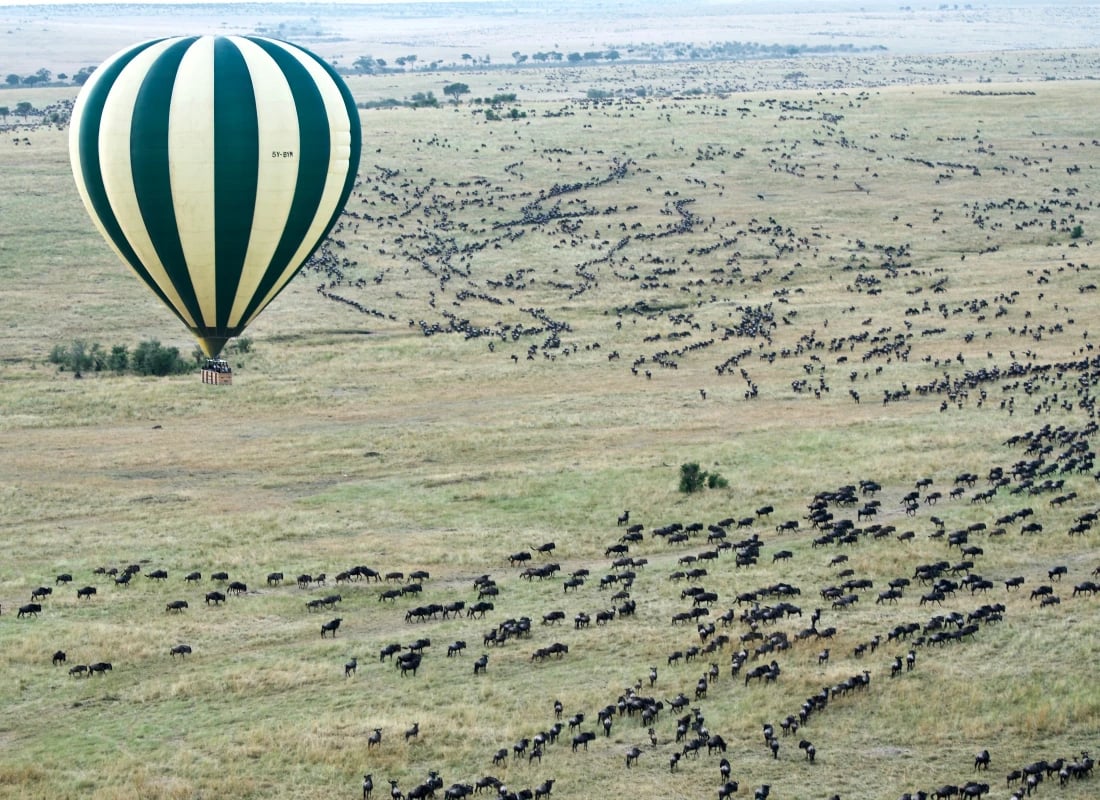 Kenya is an iconic safari destination. Enjoy incredible wildlife encounters and stunning, varied landscapes.
Kenya is an iconic safari destination. Enjoy incredible wildlife encounters and stunning, varied landscapes.

